

Explore Majestic Kumbakonam Temples [Hindu Temple Town]
- Historical Places
- Travel Tips
- March 14, 2019 in Historical Places , Travel Tips
- holy places kumbakonam temples kumbakonam temples list religious places
Kumbakonam is one of the ancient temple towns and among the top tourist places in India, flanked by the two rivers Cauvery and Arasalar, in the Thanjavur district of Tamil Nadu. The name Kumbakonam means the Pot’s Corner. According to mythology, when the world was destructed due to the tsunami, Lord Brahma asked Lord Shiva, from where he can restart creation. He suggested him to make a magic pot with the sand collected from various sacred places and float it in the floodwater. Kumbakonam is the place where the pot stopped and then Lord Shiva shot an arrow, which led to the spilling of some nectar on this place, and thus life was revived on the earth.
Once ruled by kings, Kumbakonam rose to be a prominent city between the 7th and 9th centuries AD. The town reached the zenith of its prosperity during the British Raj and was named as Cambridge of South for the being the prominent center of European education and Hindu culture.
Why visit Kumbakonam?
The grandeur of Tamil Nadu can be seen in the marvellous architectures and temples here. Many of the religious sites in Kumbakonam are dedicated to Lord Vishnu and Lord Shiva. There are around 188 sites in Kumbakonam. The town is well known for its prestigious educational institutions, carved Panchaloha idols, silk products, brass and metal wares. And the temples here are widely known for their exquisite pillars, imaginative drawings on walls, and mythological stories.
Top 14 Temples To Visit In Kumbakonam
- Kasi Viswanathar Temple
- Adi Kumbeswara Swami Temple
- Nageswaran Temple
- Chakrapani Temple
- Airavathesvara Temple
- Sarangapani Temple
- Uppiliappan Temple
- Mahalingaswamy Temple
- Ramaswamy Temple
- Dhenupureeswarar Temple
- Suryanarayana Temple
- Sri Naganathaswamy Temple
- Kalyanasundareswarar Temple
1. Kasi Viswanathar Temple
Timings: 6 AM – 12 noon and 4 PM – 9 PM
Kasi Viswanathar temple is in the heart of the city and is very close to the famous Mahamaham Tank. As one of the top religious sites, it is dedicated to Lord Shiva. This 72 feet high temple was established in the 16th century. The deity here is called Kasi Viswanathar and his wife as Visalakshi. There are other shrines as well. As per the Legend, Lord Rama and Lakshmana prayed here to Lord Shiva and got a blessing to slay Ravana. You will also find 9 rivers known as Nava Kannigas, who prayed to Lord Shiva at Varanasi to absolve them of sins washed away by bathers. The Lord asked them to take bath in Mahamaham tank and pray to Lord Adi Kumbeshwara.
Mahamaham is a famous festival conducted once in 12 years. People gather in large numbers to take a holy dip in the tank which is believed to wash away one’s sins and purify the soul. Another festival Masi Magam is the most important festival celebrated during the month of February-March.
2. Adi Kumbeswara Swami Temple
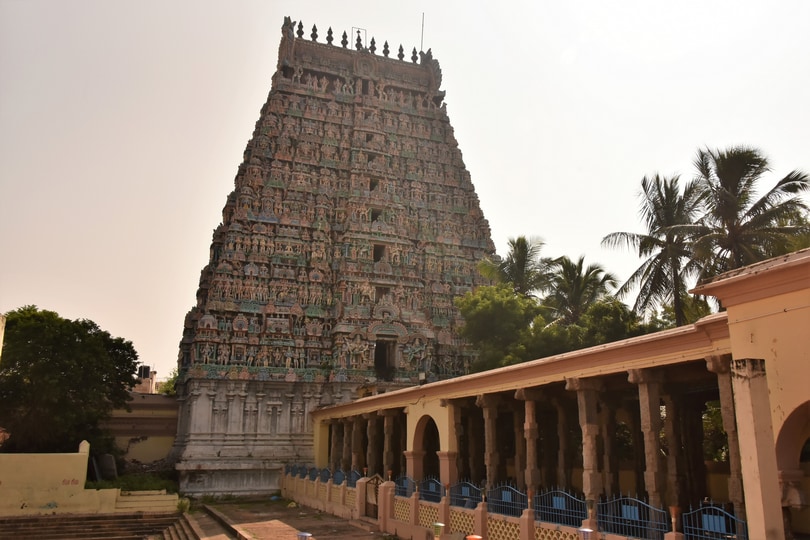
Timings: 6 AM – 12.30 noon and 4 PM – 9.30 PM
Built during the Chola dynasty in the 9th century, this temple is dedicated to Lord Shiva, The Lingam here is broad at the bottom and narrow at the top in the shape of a needle. This Lingam is believed to have been made by Shiva himself. Lord’s consort Goddess Manthrapeeteswari Mangalambika shrine is situated to the left of Kumbeswarar shrine.
The Kumbeswarar Temple is an architectural marvel which reflects the typical Dravidian style. It is one large temple with 9 stories and a height of 128 ft.
The unique feature of this temple is the 27-star sign and 12 zodiacs that are carved from a single large block of stone which speaks volumes about the engineering skills of the yesteryear masons. Other shrines of Ganapati, Muruga and Kiratamurti are also present in this temple.
3. Nageswaran Temple
Timings: 6 AM – 12.30 noon and 4.30 PM – 9 PM
Built by Aditya Chola in the 9th century, Nageswaran Temple is known for great architecture, building technology and astronomy. This beautiful kumbakonam temple is built in such a way that it allows sunlight to fall on the idol only during the months of April or May for three days therefore popularly known as Surya Kottam Temple. Temple is crowded on these 3 days with devotees from all over the world to seek blessings of the deity. This temple is one of the religious sites dedicated to Lord Shiva, the serpent king. It is believed that the temple got its name Nageswaran, as one serpent was found worshipping the lingam.
4. Chakrapani Temple
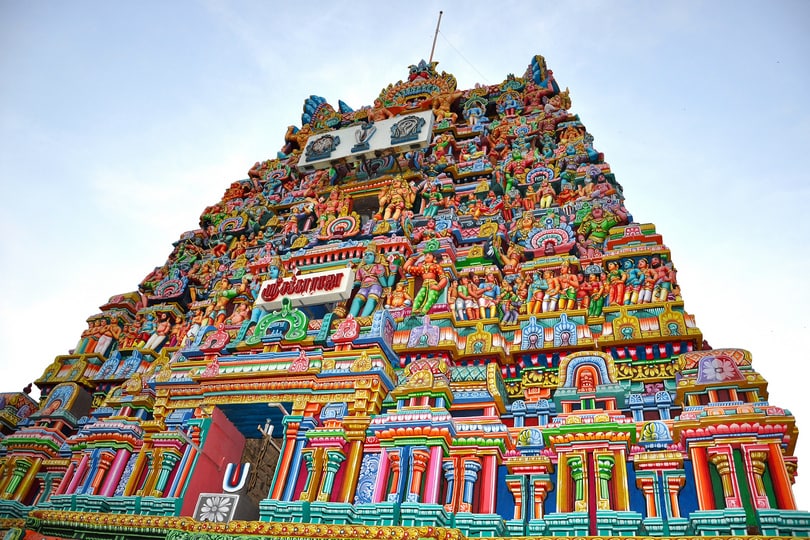
Timings: 6 AM – 12 noon and 4 PM – 8 PM
Devoted to Lord Vishnu, this temple is named as Chakrapani Lord Vishnu and appears in the form of a discus or Chakra.
According to legend, Lord Vishnu sent Sudarshana Chakra to Patal Lok to kill the demon Jalandasura and have come out through river Cauvery. God Brahma, who was taking bath in the river, got impressed and installed Sudarshana Chakra here. There is a bronze idol of King Serfoji II worshipping the Lord; who was cured of illness. It is believed who are mentally or physically weakened by illness or problems can be cured here. The Sun God worshipped Lord Vishnu here and therefore those facing problems due to planetary movements in their life or Shani, Rahu and Ketu Dosh are advised to pray to Lord Chakrapani.
This is among one of the Vishnu temples which takes part in the Mahamaham festival.
5. Airavathesvara Temple
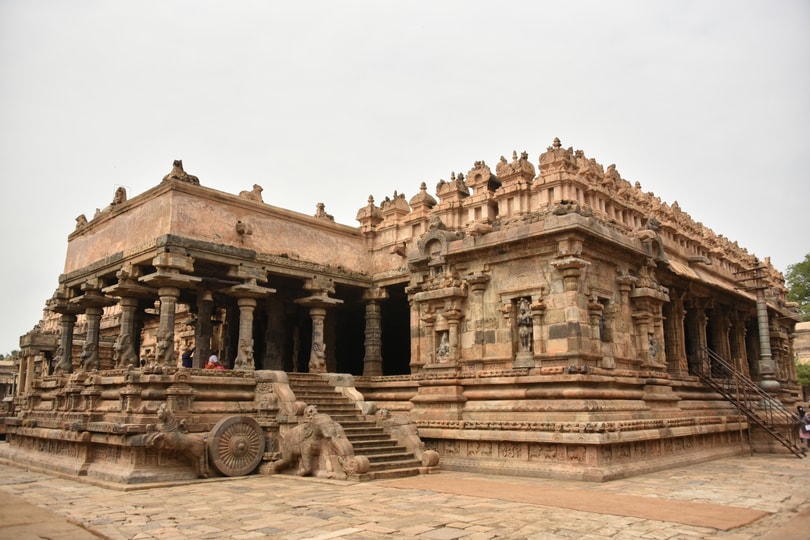
Timings: 6 AM to 7 PM
This temple is one of the religious sites that are a part of the UNESCO World Heritage Site, built in the 12th century by Rajaraja Chola II. The deity’s consort, Periya Nayaki Amman, has her temple situated near this temple. It is known as a storehouse of art and architecture with a vimana of 85 feet high and front mandapam of a huge chariot and some exquisite stone carvings. As per legend, Airavata, the white elephant of Indra and King of Death, Yama, worshipped Lord Siva in this temple.
6. Sarangapani Temple
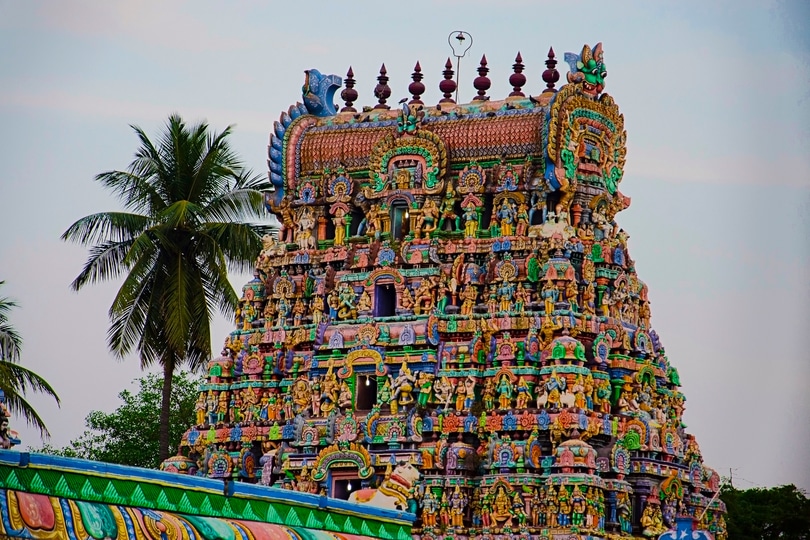
Timings: 6 AM – 12 noon and 5 PM – 9 PM
Dedicated to Lord Vishnu, it derives its name from the Sanskrit words Sarangam which mean ‘Bow of Vishnu’ and ‘Pani’ meaning hand. Being the tallest temple tower in Asia with 12 story Gopura of 150 feet, this is one of the top religious sites built by the Nayak Kings in the 16th century.
The central shrine of the temple is in the form of a chariot in heaven drawn by horses and elephants. The deity is shown in a posture as if he is getting up from a reclining position. The temple boasts of 5 prakaras and a holy tank which is known as Porthamarai Kulam. It is considered that Goddess Lakshmi arrived here from the Potramarai tank with thousand lotuses.
The chariot festival held in the spring season is an important festival of this temple. Sarangapani Temple is the biggest Vishnu temple in Kumbakonam and third of the 108 Divya Desams.
7. Uppiliappan Temple
Timings: 6 AM – 2 PM and 4 PM – 9 PM
It is considered 60th among the 108 Divya Desams dedicated to Lord Vishnu and is one of the major religious sites in Kumbakonam. The temple is believed to be constructed by the Medieval Cholas in late 8th century AD. According to mythology, The Lord took the form of an old man and asked from Markandeya his daughter Bhoomidevi’s hand for marriage. Markandeya said that his daughter was too young and can’t cook food and does not even know how to use salt in cooking. To this, the Lord said that he would eat food even without salt and Lord Oppilliappan got married to Bhoomidevi here. Hence the temple name is Uppiliappan and salt is never added to the prasad cooked here.
Lord Vishnu is worshipped as Uppiliappan and his consort Lakshmi as Bhoomidevi. You can see the 8 feet tall idol of the Lord with Bhoomidevi on the right and Markandeya Maharishi on the left. The lord is also known as Lord Venkateshwara’s brother and so those devotees who are unable to visit Tirupati to fulfil their promises can go here. Brahmotsavam is grandly celebrated in the temple during the months of September-October.
8. Mahalingaswamy Temple
The Shiva Lingam here is a swayambhu (self-manifested) and therefore a large number of devotees can be seen here all year round. Shiva appeared in the form of a flame to please Agastya and other sages who were performing penance; hence the deity is named as Jyothirmaya Mahalingam. The Ambal Shrine is one of the Sakthi Peetams and is on the right side of the main shrine. There are 5 tanks and 27 other water bodies that are associated with the temple, which is one of the most interesting religious sites.
9 Ramaswamy Temple
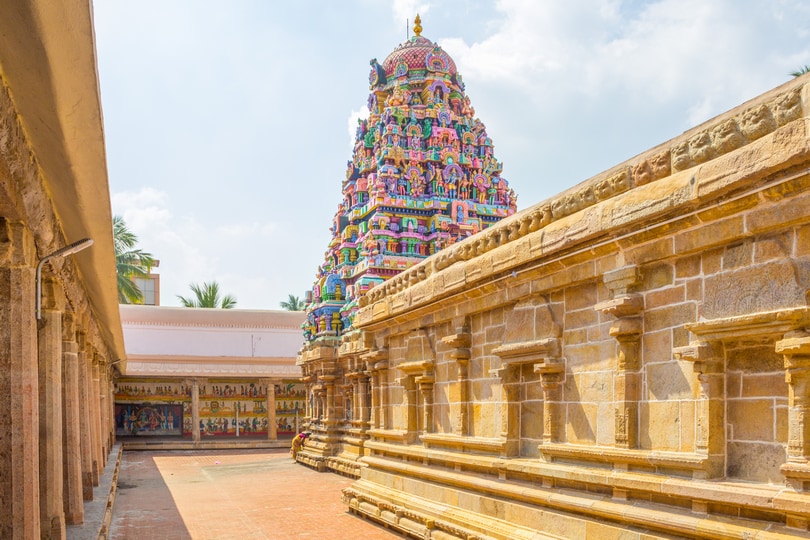
Timings: 6 AM – 12 noon and 5 PM – 8.30 PM
Known as the southern Ayodhya, This temple is dedicated to Lord Rama, an incarnation of Lord Vishnu, constructed during the 16th century CE. The temple has some of the famous stone carvings and 219 wall paintings, which explain the series of incidents from the great epic Ramayana. This is the only temple where we can see idols of Rama, Sita and Lakshmana along with Bharatha and Shatrughna and Hanuman. Rama Navami is celebrated in a grand manner. This is also one of the five Vishnu temples that are connected with the Mahamaham festival.
10. Dhenupureeswarar Temple
Timings: 6 AM – 1.30 PM and 4 PM – 9 PM
It is one of the biggest temples and most important religious sites dedicated to Shiva but the most famous deity in this temple is Goddess Durga, a guardian deity of this temple. The temple is famous for many mythological stories. According to legend, the divine cow Kamadhenu’s daughter Patti is said to have worshipped Lord Shiva here. Sage Viswamitra got the title of Brahma Rishi at this place. Sri Rama is said to have worshipped Shiva here to absolve himself from sins. It is said that God Shiva asked Nandi to move aside so that he can see Sambandar when he comes to this temple. This is why Nandi is not seen in a straight line facing the sanctum sanctorum.
The well called Koti Theertham was created by Lord Rama and is considered to be equivalent to Dhanushkodi near Rameswaram. This temple attracts devotees who have Rahu and Kethu dosh.
The annual ten-day festival held in December-January, Vaikasi festival, Navarathri and Muthu Pandal Festival are the important festivals celebrated at this temple.
11. Suryanarayana Temple
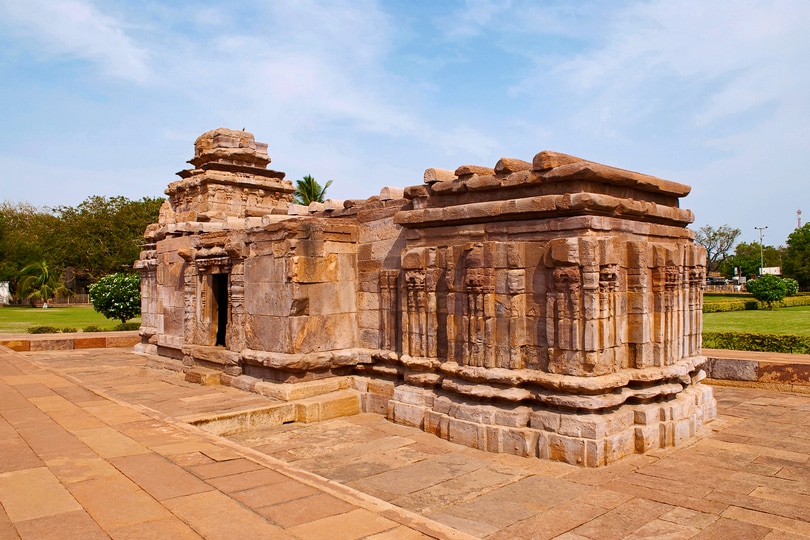
Timings: 6 AM – 12.30 noon and 4 PM – 8 PM
Suryanarayana Temple is one of the Navagraha temples dedicated to Surya and his two consorts, Usha and Prathyusha. Shrines of other eight planetary deities are also present.
According to the legend, Sage Kalava was suffering from leprosy and prayed to the Navagrahas. Pleased by his devotion, they cured him, and after seeing this, Brahma got angry, as nobody had the right to change destiny. Brahma cursed the nine planets to suffer from leprosy. These nine planets asked Lord Shiva to cure them. Lord Shiva cured and blessed them so that they can help those who pray to them with full faith and devotion.
Rath Saptami and Vijayadashami are celebrated with great devotion in this temple.
12. Kanjanur
Timings: 7 AM – 12.30 noon and 4 PM – 9 PM
Kanjanur is one of the nine Navagraha located in the Cauvery region dedicated to the planet Venus, called Sukran. The place is famous for many reasons. Shiva’s marriage with Parvathi had taken place here. Agni is said to have worshipped Shiva here.
The oil Abishekam poured on the main Shiva lingam is absorbed by the idol which is in itself a miracle. Sukran is a powerful planet and worshipping it on Friday is considered very auspicious.
13. Sri Naganathaswamy Temple
Timings: 6.30 AM – 12 noon and 5 PM – 9 PM
It is one of the 9 Navagraha temples in Kumbakonam especially dedicated to Rahu. The temple has a separate shrine also. Here Rahu is seen with two consorts Nagavalli and Nagakanni. Rahu worshipped Lord Shiva here and got relieved of a curse. A unique feature of the temple is that Rahu Bhagawan is seen with a human face, as mostly he is seen with a serpent face.
It is believed that those who are suffering from dosha of delay in marriages, childlessness, troublesome married life and Kalasarpa Dhosa can be cured by doing milk abhishekam. The unique thing is that the milk when poured over the idol turns blue, which is clearly visible.
14. Kalyanasundareswarar Temple
Timings: 7.30 AM – 12 PM and 5.30 PM – 8 PM
The Shiva Lingam here is a swayambhu lingam. The miracle is that the colour of the deity changes 5 times a day. It is said that during Shiva-Parvathi wedding in Mount Kailash, the place caved due to the presence of all the gods. To balance the level of the earth, Lord Shiva sent Sage Agasthya to the South. He was disappointed as he could not witness the marriage. The sage installed a lingam behind the main lingam in the temple to worship Shiva, and pleased with his worship, the Lord with his wife, appeared in front of the sage and married again here at this holy place. The unique thing about this temple is you can see all three deities Brahma, Vishnu and Shiva here.
Whether you are on a spiritual journey or family vacation or on a journey to explore history and architecture, these Kumbakonam temples will impress you for sure
P.s. You might like these related resources:
- Temples in Tamil Nadu – Pilgrimage Sites & Religious Places
- Most Famous Temples Pilgrimage Sites & Religious Places in Mysore
- Famous Temples In Thrissur For a Religious Spiritual Visit
- Temples in Vijaywada – Pilgrimage Sites & Religious Places
- SHARE THIS ON:
Leave a Reply Cancel reply
Your email address will not be published. Required fields are marked *
Book a hotel
- City Select Cities Agra Ahmedabad Alwar Amritsar Aurangabad Autumn Badrinath Bangalore Bathinda Bhopal Bhubaneswar Bihar Chandigarh Chennai Coimbatore Coorg Darjeeling Dehradun Delhi Dhanushkodi Dharamshala Dwarka Gangtok Garba Ghaziabad Goa Gujarat Gurgaon Guwahati Himachal Pradesh Himalaya Hyderabad India Indore Jaipur Jamshedpur Jodhpur Karnataka Kashmir Kedarnath Kerala Kochi Kodaikanal Kolkata Kotagiri Kullu Leh Ladakh Lonavala Lucknow Madhya Pradesh Madurai Mahabaleshwar Maharashtra Manali Manesar Mathura Mount Abu Mumbai Munnar Mussoorie Nagpur Nainital New Delhi Noida Odisha Ooty Patna Pondicherry Pune Puri Raigad Raipur Rajasthani Ranchi Rishikesh Shillong Shimla sikkim Siliguri Srinagar Surat Tamil Nadu Tawang Trivandrum Udaipur Ujjain Uttar Pradesh Uttrakhand Vadodara Varanasi
- Guests 1 Guest 2 Guest 3 Guest
Recent Posts
Mississippi: your next travel destination.

Spring Break Hotels Near Stunning Beaches
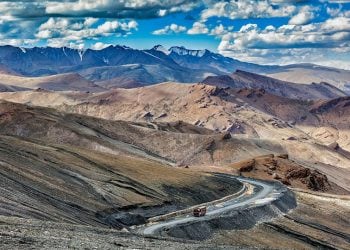
Here Are Some Responsible Travel Tips For Meaningful Experiences On The Road

Countdown to Midnight: Epic New Year’s Eve Parties 2024 in Indian Metropolises
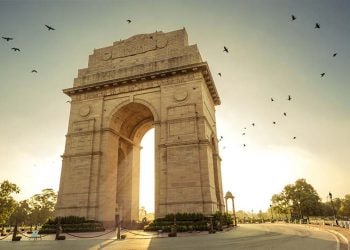
Essential Backpacking Tips For A Seamless Travel Experience
- Uncategorized
- beach holidays

Please rotate your device
Please go back to portrait mode for the best experience

2-Day Kumbakonam Itinerary
Navigate forward to interact with the calendar and select a date. Press the question mark key to get the keyboard shortcuts for changing dates.
Navigate backward to interact with the calendar and select a date. Press the question mark key to get the keyboard shortcuts for changing dates.
- Kumbakonam in 2 days
- 1-Day Kumbakonam Itinerary
- 3-Day Kumbakonam Itinerary
- 4-Day Kumbakonam Itinerary

Table of contents
Day 1: most popular attractions, day 2: off the beaten path, arulmigu shri swamimalai swaminatha swamy temple.
Dharasuram Temple
Sarangapani Temple
Sri mahalingaswami kovil, suriyanar koil temple, sri agneeswarar temple, where to eat, sri gowrikkrishna hotel, mangalambiga coffee and tiffin center®️.

Track your travel spending and split costs with friends
Plan your trip. Keep your budget organized. Split the cost between tripmates. Wanderlog does it all.

Mottai Gopura Vasal Athi Kumbeshvarar Temple
Arulmigu swaminatha swami temple, varahaperumal temple, kumbakonam, arulmigu chakrapani swami temple, saravana silks, shri brahma temple, nageswaran temple, sri mangalambika vilas coffee hotel (since 1914), habibi restaurant.

Don’t forget to pack anything
Stay organized with a to-do list, packing list, shopping list, any kind of list.

Popular road trips from Kumbakonam
What's the weather like in kumbakonam.
It depends on when you visit! We've compiled data from NASA on what the weather is like in Kumbakonam for each month of the year: see the links below for more information.
- Weather in Kumbakonam in January
- Weather in Kumbakonam in February
- Weather in Kumbakonam in March
- Weather in Kumbakonam in April
- Weather in Kumbakonam in May
- Weather in Kumbakonam in June
- Weather in Kumbakonam in July
- Weather in Kumbakonam in August
- Weather in Kumbakonam in September
- Weather in Kumbakonam in October
- Weather in Kumbakonam in November
- Weather in Kumbakonam in December
All road trips from Kumbakonam
- Kumbakonam to Bengaluru drive
- Kumbakonam to Chennai (Madras) drive
- Kumbakonam to Pondicherry drive
- Kumbakonam to Munnar drive
- Kumbakonam to Ooty (Udhagamandalam) drive
- Kumbakonam to Hyderabad drive
- Kumbakonam to Mahabalipuram drive
- Kumbakonam to Kodaikanal drive
- Kumbakonam to Madurai drive
- Kumbakonam to Rameswaram drive
- Kumbakonam to Yercaud drive
- Kumbakonam to Coimbatore drive
- Kumbakonam to Kanyakumari drive
- Kumbakonam to Tirupati drive
- Kumbakonam to Visakhapatnam drive
- Kumbakonam to Varkala Town drive
- Kumbakonam to Thrissur drive
- Kumbakonam to Kanchipuram drive
- Kumbakonam to Vellore drive
- Kumbakonam to Palakkad drive
- Kumbakonam to Thiruvannamalai drive
- Kumbakonam to Tirunelveli drive
- Kumbakonam to Vijayawada drive
- Kumbakonam to Yelagiri drive
- Kumbakonam to Guruvayur drive
- Kumbakonam to Salem drive
- Kumbakonam to Tiruvannamalai drive
- Kumbakonam to Palani drive
- Kumbakonam to Valparai drive
- Kumbakonam to Dharmapuri drive
Explore nearby places
- Thirunageswaram
- Thirukkarugavur
- Thiruvavaduthurai
- Thirupampuram
- Thiruvaiyaru
- Keelathirupanthuruthi
- Perumpuliyur
- Mayiladuthurai
- Vaitheeswarankovil
- Thirukkadaiyur
- Thirukadaiyur
- Tharangambadi
- Kodiyakarai
- Nagapattinam
- Chidambaram
All related maps of Kumbakonam
- Map of Kumbakonam
- Map of Swamimalai
- Map of Thirunageswaram
- Map of Oothukadu
- Map of Senganur
- Map of Thirukkarugavur
- Map of Thiruvavaduthurai
- Map of Thirupampuram
- Map of Vaduvur
- Map of Thiruvaiyaru
- Map of Keelathirupanthuruthi
- Map of Perumpuliyur
- Map of Mayiladuthurai
- Map of Mannargudi
- Map of Thanjavur
- Map of Thiruvarur
- Map of Vaitheeswarankovil
- Map of Thirukkadaiyur
- Map of Thirukadaiyur
- Map of Sirkazhi
- Map of Karaikal
- Map of Tharangambadi
- Map of Tranquebar
- Map of Kodiyakarai
- Map of Nagore
- Map of Nagapattinam
- Map of Velankanni
- Map of Manganur
- Map of Chidambaram
- Map of Siruvachur
- Map of Perambalur
Kumbakonam throughout the year
- Kumbakonam in January
- Kumbakonam in February
- Kumbakonam in March
- Kumbakonam in April
- Kumbakonam in May
- Kumbakonam in June
- Kumbakonam in July
- Kumbakonam in August
- Kumbakonam in September
- Kumbakonam in October
- Kumbakonam in November
- Kumbakonam in December
Looking for other day-by-day itineraries in Kumbakonam?
Check out our other curated itineraries that are also filled with jam-packed days:
Day itineraries for nearby cities
- 2-Day Chidambaram Itinerary
- 2-Day Velankanni Itinerary

- Itinerary + map in one view
- Live collaboration
- Auto-import hotels and reservations
- Optimize your route
- Offline access on mobile
- See time and distance between all your places

- Navagraha temples
- Navagraha Temples

Navagraha Temples Tour
Navagrahas are believed to be manipulated by Mother Parameswari. The roles played by planets in the life of an individual is very significant. Our fate is influenced immensely by the movement of planets. It is said that the planet position at birth time depends on man’s previous life Karmas.
Though being spared from such Karma is impossible, the agonies and mishaps can be minimized drastically by appeasing Navagrahas. The ways to do so have been traced by our ancestors and we obviously should be obligated to them for this virtuous deed.
Worshipping Navagrahas with total devotion to lord can of great help. Every navagraha temple has its own unique rituals and following them is important.
Here we bring to you all the required details of Navagraha temples in Tamil Nadu.
Kumbakonam navagraha temples map
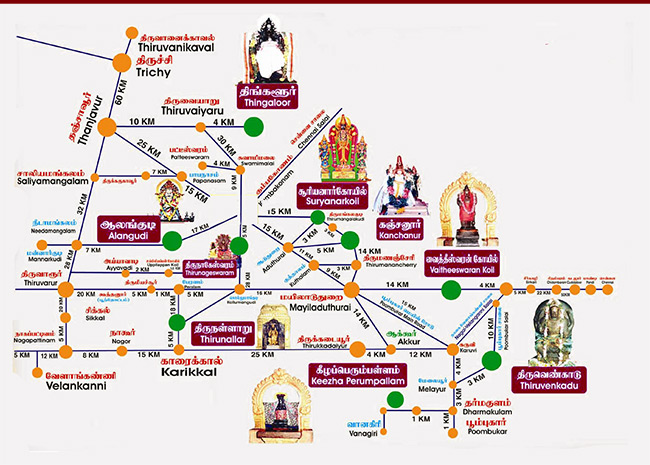
Navagraha temples timings and distance from kumbakonam
Navagraha temples in Kumbakonam are a must visit for having a great spiritual experience. You can depend us for the best Navagraha temple tour packages.
Let us have a glance on some of the important facts about these temples, in case if you have any plans for Navagraha temples tour.
Sun (Suriyan)
It has been recorded in Markandeya Purana that sun owes its birth to the sound ‘OM’ that got initiated along with the origin of this universe. Suriyan is said to be Lord Shiva’s right eye. This auspicious Graha rotate around this world on a chariot that is driven by seven horses guided by Arjunan. Wearing a silk wardrobe with golden shade, Sun has two lotuses on his shoulders and there are eight hands for him. .Also considered as lord of seasons, he has many other names including Prabhakaran, Aadavan, Pakalavan, Kathiravan and Bhaskaran. The shrine for Suriyan is Suriyanar Temple Thirumangalakudi.
Nearset railway station aduthurai is which is 2km and Mayiladuthurai railway line which is 21 Km from Suriyanar Koil
To get complete details about this temple please click this link Suriyan Temple
Moon (Chandran)
After Suriyan(Sun), Chandran is considered to be the most propitious among Navagraha temples. The sacred texts reveal that the birth of Chandran traces back to the time when Devas churned the milk ocean. It narrates that Moon had its manifestation from Lord Vishnu’s heart. Appeasing Chandran makes you famous and give vision to those exposed to blindness. The temple dedicated to chandran is Kayilayanathar Thirukkoil in Thingalur.
Chandran Koil is located 18kms from Kumbakonam , on the way to Thiruvaiyaru.
To get complete details about this temple please click this link Chandran Temple
Mars (Chevvai)
The Graha Chevvai is said to have born from the sweat from forehead of mother Uma when she was living separate from Lord Shiva. Another mythology considers Chevvai as Sage Bharathwaja’s son and Mother Earth brought up him. Even more different versions are there. He has reddish color, travels on Annam bird and sits in triangular. His chariot is golden and is driven by eight horses. Among his four arms, three hold weapons and one exhibits a pose of harborage. Other names for Chevvai are Bhumiputran, Kuja and Bowman. VaidheeswaranKoil about 6 km South of Sirkazhi, on the way to Mayiladuthurai is the concerned shrine praying chevvai where you can minimize the distresses imposed by Chevvaidhosams.
Chevvai Koil is located 7 kilometers from Sirkazhi, 27 km from Chidambaram, 110 km from Thanjavur and 16 km from Mayiladuthurai.
To get complete details about this temple please click this link Chevvai Temple
Mercury (Bhudan)
Considered as the lord of Knowledge, Bhudhan is the son to Thara and Chandran. Bhudhan has greenish shade and he is seated on a base shaped as arrow. He drives a horse. The Graha has a chariot that is drove by four horses. He is fond of White Kanthal flowers. Budha resembles a lot to Lord Vishnu in terms of appearance. Rig Veda’s fifth chapter addresses him in detail. He poses a refuge on the right hand while his other hands hold weapons. He also have many other names like Sowmiyamurthi. Manoharan, Buddhidaha and Thanapradhan. The shrine of bhudhan is at Sweythavanam in Thiruvenkadu praying there you can be spared of Budha Dosha.
Budhan Koil is located 26km from Mayiladuthurai and 10km from Sirkazhi
To get complete details about this temple please click this link Bhudan Temple
Jupiter (Guru)
With its position fifth from the sun, Guru is known to be a Satvic inclining to harmony. The chariot of Guru is towed by a golden horse and he travels on an elephant. There are books in his four hands and other names by which Guru is known are Mantri, Brahaspathi and Vyazhan. Guru can influence human life for 16 years and on pleasing blesses you with marriage, wisdom, high positions, honours, riches, sons and happiness. Thiruvalangadu is the Shrine of Guru located at Alangudi.
Guru Koil is located 7 Kms from South of Needamangalam Railway station
To get complete details about this temple please click this link Guru Temple
Venus (Sukran)
Sage Bhrigu and his wife Pulomisai are the parents of Sukran. Bhrigu was in fact the mind born child of Brahma Deva. Sukran erected a linga to worship in Kashi and prayed there for a long. He in course of time mastered Amritha Sanjeevini Manthram and with this he earned the capability of reviving the dead ones. Asuras honored Sukran and accepted him as their Guru. As the devotion of Sukran pleased Shiva, he made Sukran a Graha. Shining towards the eastern line, it is brighter when compared to Budhan but like moon it also decays during its phases. Sukran has a silver like color, rests with pentagonal posture and is fixed on a falcon with a white lotus in his hands. He sits on a crocodile and ten horses drive his chariot. The shine for Sukran is Agniswarar koil in Kanjanur.
Sukran Koil is located 26km from Mayiladurai,3km from Suryanar kovil and 3km from Aduthurai.
To get complete details about this temple please click this link Sukran Temple
Saturn (Saneeswaran)
Saneeswaran is robed in black with narrow chest and a lame leg. In one hand he has a huge lance and other hand is posed as a refuge. He sits on a Lotus seat and uses crow for travelling. He also bears a Karunkuvalai and is pliable to vanniand yell. In Tamil there is saying, No one gifts like Sani and none is there who takes away like Sani. This in fact reflects the extremism of impacts that Saneeswar can make. Other names by which Saneeswar is known are Kari, Goonan, Madavan and Manthan. Sani can influence you even up to 19 years and plays crucial role in determining an individual’s longevity. The related shrines are Dharuparayanam and Tirunallarsaniswaran koil also known as dharbaranyeswarar temple or Saneeswar temple in Thirunallar.
Saneeswaran Koil is located 5 km from Karaikal, 38 km from Mayiladudhurai and 40km from Thiruvarur
To get complete details about this temple please click this link Saneeswaran Temple
Rahu who deceitfully took elixir of immortality from lord Vishnu was beheaded before the elixir reached the whole body. After this the head part, Rahu got metamorphosed to a snake tail. Though Rahu is a shadow planet, the influence it has on shadow planet is huge. Rahu is situated in Southwest and pleases with Mandharai flower, Arugu leaf and Ulundu grain. Resembling closely to a dark snake with face of a lion and four hands, he rides on a goat. Hischariotis pulled by eight horses. Rahu can influence you for a period of 8 years. Praying in SRI Naganathaswamy temple (Sri Raaghu Sthalam), at Thirunageswaram, the shrine of Rahu, the vices can
Thirunageswaram or Rahu Koil is located on Karaikal road 6 km from kumbakonam . Nearby rail station is at 2 k.m at Theprumanallur .
To get complete details about this temple please click this link Rahu Temple
Kethu is believed to be a red snake that clutches Suriyan thus paving way for solar eclipse. In course of time, after being separated from Rahu, Kethu became one of the nine among Navagrahas by Lord Shiva’s grace. He became divine with five snake heads that are grown on him. Kethu has the power of deciding whether you achieve moksha or not. It can influence you for a period of 7 years. The shrine of kethu is Naganathaswamy Temple in Keezhaperumpallam. Praying here bestows one with moksha and wisdom. You will be blessed with good children and can even have a chance to visit and live in foreign countries. It is believed that Kethu is a healer for fever, tuberculosis, skin diseases and leprosy
Kethu koil is located 2 km south of Dharmankulam , which is on Mayiladuthurai which is about 20km to Poompukar which is 5 Km it can also be reached from Sirkazhi which is about 20km.
To get complete details about this temple please click this link Kethu Temple
Note: If you are planning to start your trip from bangalore or chennai, you should reach Kumbakonam to start the trip. Kumbakonam is considered as a center of location for all 9 navagraha temples. For further information read through the website.
Exclusive updates
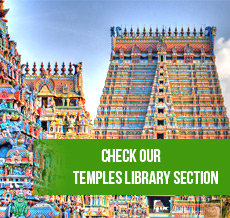
Temples gallery
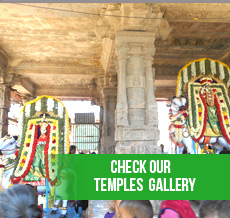

Navagraha temples in Tamil Nadu | Seek Divine Blessings with this Step-by-step guide
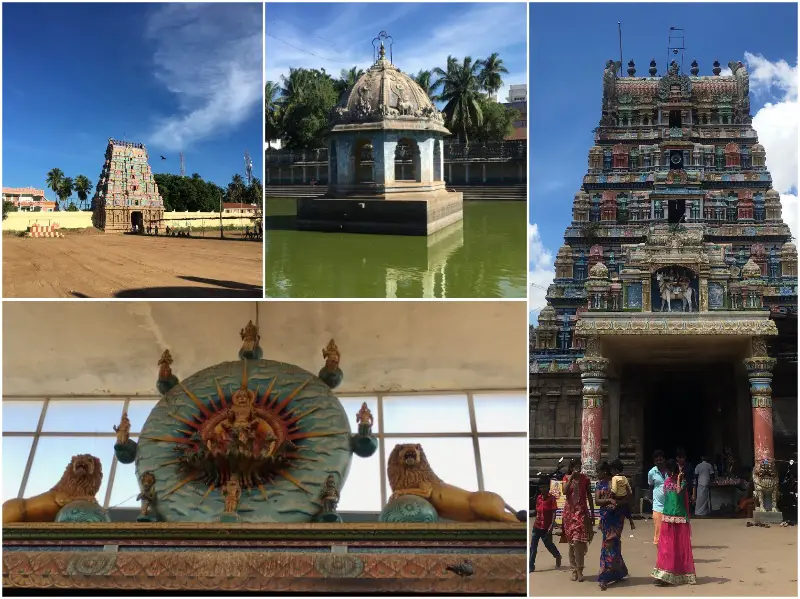
Last updated on September 11th, 2023 at 12:39 pm
Navagraha temples in Tamil Nadu in South India are considered very auspicious for Hindus. Each of these Navagraha temple dedicated to 9 planets in Indian mythology are thronged by devotees seeking their blessings.
Having been to these Navagraha temples twice – we will give you a detailed step-by-step guide to help you plan your trip to these temples.
As the name suggests there are nine temples dedicated to Navagrahas or nine planets. These are Surya, Chandra, Mangala or Angaraka, Bhudha, Guru, Shukra, Shani, Rahu and Kethu. One can visit all temples or may visit individual temples based on one’s requirements.
These Navagraha temples are located in the Cauvery delta region of Kumbakonam – Thanjavur. Traditionally these are Shiva temples with a shrine for one of the planets. But in most of the temples, Shiva has taken a backseat giving prime importance to the planet!
Please follow the details in this post to make it a memorable Navagraha temples tour.
We suggest that you make either Kumbakonam or Thanjavur the base to explore these temples. Our recommendation is to make Kumbakonam as the base. If you are also planning to visit Thanjavur as part of your trip, then you can make Thanjavur the base.
Reaching there
By air – The nearest airport is Tiruchirapalli which is well-connected to other cities in India.
By Train – Thanjavur and Kumbakonam are well-connected to other cities in the country.
By Bus – Thanjavur and Kumbakonam are well-connected to other cities by bus.
Stay options
Both cities have multiple options to stay depending on one’s budget.
Mode of transport
The best mode of transport to visit Navagraha temples is in a car. You can either drive in your own car or hire a taxi at either Kumbakonam or Thanjavur
Best time to visit
Winter months – October to February – are the best time to visit as temperatures will be bearable. Summers will be very hot and humid. Tamil Nadu gets rainfall in the winter months of October to December.
If you are traveling in Nov – Dec make sure there are no cyclones passing through the region which bring heavy rainfall/flooding. Monitor the weather forecast by India Meteorological Department or on Skymet.
Please cover yourself with a good hat and keep drinking a lot of water as temperatures are hot and sultry, especially in the summer months.
Travel Information
- Navagraha temples are located in two clusters as given in the picture below. Thus, it is always better to complete one cluster at a stretch before starting with the other. The following are the Navagraha temples with location and distance from Thanjavur and Kumbakonam. All distances in Kilometres. We have mentioned the local name of the planets in brackets.
The complete circuit can be completed in one day if properly planned. We will help you with a detailed itinerary. However, if you feel it is a bit of a stretch, then you can do it over two days.
- All temples open at 6.30 AM and close around 1.30 PM. Opens again around 4.00 PM till 9 PM. Sometimes if it is a special day, the timings may be extended or it may not be closed in the afternoon. Please check with your hotel concierge on this.
- Shani and Rahu temples are the most crowded temples in the circuit.
- Each planet god has a special offering – for example, it is Lotus for Surya and Gingelly seeds (Til) for Shani – which can be bought at the shops near the temple if one wishes to.
- If you are planning to special puja in these temples, please allow more time in your itinerary.
- Popular temples like Shani, Rahu, Guru, and Surya have special Darshan tickets. One can buy them to beat the rush.
- Each day is auspicious to one god. For example, Saturday is auspicious for Shani and Thursday for Guru. Expect more people in these temples on these special days.
- Doing the circuit on two days will help to club other Chola temples and also the famous shrines of Velankanni and Dargah of Nagore in the circuit.
Itinerary for Cluster 1 of Navagraha Temples
- We recommend you complete the circuit in the morning before it gets hot.
- Itinerary :- Thanjavur – Raghu sthalam (Rahu) – Guru Bhagwan (Guru) – Surriyanar temple (Surya) – Shukran temple (Shukra) – Chandiran temple (Chandra) – Thanjavur
- Total Distance – 157 Km
- Follow this Navagraha temple map from Thanjavur – https://goo.gl/maps/wRdr2LdJC7M2
- Itinerary:- Kumbakonam – Raghu sthalam (Rahu) – Guru Bhagwan (Guru) -Chandiran temple (Chandra) – Surriyanar temple (Surya) – Shukran temple (Shukra) – Thanjavur
- Follow this Navagraha temple map from Kumbakonam – https://goo.gl/maps/P5gAogtV7Z22
Road conditions are excellent in the region.
- We are suggesting that Raghu Sthalam (Rahu temple) be visited first as it is the most crowded of the temples in cluster 1. It is good to complete the visit to this temple first and then continue the visit to others.
- Breakfast break – After visiting the Raghu temple
- Late lunch in your place of stay or in Kumbakonam city.
Itinerary for Cluster 2 of Navagraha Temples
- We recommend you to complete the circuit in the morning before it gets hot.
- Itinerary – Thanjavur – Shani Temple (Shani) – Kedhu temple (Ketu) – Budhan temple (Budha) – Angarakan (Mangala or Angaraka) – – Thanjavur
- Total Distance – 249 Km
- Follow this Navagraha temple tour route map from Thanjavur – https://goo.gl/maps/YRf9BoUiDjo
- Itinerary – Kumbakonam – Shani Temple (Shani) – Kedhu temple (Ketu) – Budhan temple (Budha) – Angarakan (Mangala or Angaraka) – Kumbakonam
- Total Distance –
- Follow this Navagraha temple tour route map from Kumbakonam – https://goo.gl/maps/vFRhYj2ZRBT2
We are suggesting that the Shani temple be visited first as it is the most crowded of the temples in cluster 2. It is good to complete the visit to this temple first and then continue the visit to others.
Breakfast break – After visiting the Shani temple depending upon the crowd. If the crowd is large and darshan would be delayed, then have breakfast and then go to the temple.
Late lunch in your place of stay or in Thanjavur.
Information on temples
Suriyanar Temple (Surya)
Entrance to the temple
Shrines for graha devatas
Emblem of Surya
Located at Aduthurai, this is not the largest in the chain. But it is fairly big. Avoid going here on Sundays as it is auspicious for the Sun god and there would be a large crowd. This is the only temple that also has shrines for other graha devatas or planet gods.
Chandiran temple (Chandra)
Main shrine
This is the smallest of navagraha temples. The temple is located in the middle of rural Thanjavur amidst green fields.
Mangala (Angaraka)
Temple entrance
Interiors of temple
We were there on Krithikkai day. There was a special puja for Lord Muruga
Temple tank
- This is in the well-known Shiva temple – Vaitheeshwaran Koil. This is the only temple where we saw equal importance given to Shiva along with the graha devata!
- Vaidyanathaswamy as Lord Shiva is called here is known to help cure incurable diseases. This place is also famous for Nadi Jyotishya. You will find hordes of shops advertising for Nadi Jyotishya services.
Raghu Sthalam (Rahu temple)
Entrance to temple
Devotees have a tradition of tying a holy thread to this with a belief that it will bring them good luck
Nicely carved pillars
One of the largest temples in the circuit. This also gets crowded.
Kethu Temple (Ketu)
Devotees tie small cradles for good luck
A small temple in the list of nine temples.
Budhan temple (Budha)
Budha shrine
Temple tower in light from the west
One of the largest temples in the circuit. The main temple for Shiva is huge. The shrine for Budhan is at the rear side and is smaller in size.
Guru Bhagvan Temple (Guru)
Guru temple is of modest size. One can expect a slight rush on Thursdays as it is considered auspicious, especially with students.
Shukran temple (Shukra)
Shukran temple is also not big. But considered generally auspicious for those who start a new business etc.
Shani temple (Shani)
Entrance to Temple
A long line of devotees
This is the largest and also busiest! What a transformation from what we had seen five years back!
We strongly suggest avoiding Saturday and also on weekends when you will find huge crowds and have to wait at least an hour for darshan. Go for special darshan by buying a ticket which is quicker.
Important Travel Advice
- As we said, you can combine both clusters of Navagraha temples in one day. After finishing Cluster 1, you can proceed to complete Cluster 2 starting from Angaraka Temple first (Vaitheeshwaran Koil) and Shani Temple last going in the reverse direction. You can have lunch in Mayiladuthurai on the way – Mayura restaurant will serve you excellent vegetarian lunch on Banana leaf – and then proceed to Vaitheeshwaran Koil.
- If you are doing Cluster 1 and 2 on separate days, we recommend you cover Dharasuram and Sarangapani temples in the evening after Cluster 1.
- From Kumbakonam – https://goo.gl/maps/GVN236cFzB22
- From Thanjavur – https://goo.gl/maps/rWaSGnuY2qC2
- From Kumbakonam – https://goo.gl/maps/KAFPDVEX4gF2
- from Thanjavur – https://goo.gl/maps/4Q4WarZm4bU2
- If anyone is more interested to know about these individual temples in detail, please check out this excellent link – Navagraha Sthalams of Tamil Nadu
If you are travelling from Bangalore or Chennai by road and want to do this Navagraha temple tour, add two more days for onward and return journeys. Follow this route
From bangalore – bangalore – salem – vriddhachalam – kumbakonam – thanjavur (445 kms) – https://goo.gl/maps/ynbtmcvvx6n2wdmh9, from chennai – chennai – villupuram – kumbakonam – thanjavur (333kms) –.
https://goo.gl/maps/QYELqic6tBaCsKtL9
We strongly recommend keeping another day to explore Brihadeeshwara temple – A UNESCO World Heritage site – Thanjavur and other Chola temples, the palace in Thanjavur, etc More on it here in this post in this blog
Thanjavur Brihadeeswara Temple – Big, Beautiful & Divine!
Lastly, the road conditions may change due to various factors. It will be good to join a road trip enthusiasts’ FB group HVK Forum managed by H V Kumar, the doyen of road trip in India . You can get the latest updates on road conditions in this very active group.
Frequently Asked Questions (FAQ)
1 Where can I see the Navagraha temples route map from Kumbakonam? – We have provided route maps from Kumbakonam and Thanjavur. Please check all about it above.
2 What is the order for visiting Navagraha temples in Tamil Nadu? – There is no specific order as such. You can visit them at your convenience. However, for easy navigation, we have provided the order for visiting these temples above.
3 How many days are required to visit all Navagraha temples in Tamil Nadu? – Though it can be done in one day, it will be very tiring. We would recommend you keep two days to cover all the temples as given in the itinerary above.
Thank you for stopping by “Travel Twosome”. We hope you liked this post on Navagraha temples and enjoyed reading it. Please share it with your friends by clicking the buttons below. Our aim is to share our experiences to inspire you to travel more!
Share and enjoy , you may also like.

Shoolagiri & Krishnagiri | YOUR One Day Trip...

Bangalore to Dandeli, Gokarna, Sirsi – A...
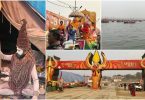
Kumbh Mela | 9 Solid Reasons why You Should Visit it!

Vishwaroopa Vijaya Vittala Temple and Mahimapura Hill...

Explore the Wonders of Rayalaseema in Andhra Pradesh...
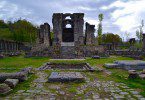
Martand Sun Temple | A gem of a temple in Kashmir!
Super detailed narration of the Navagraha tour Excellent 🙏
Very good information thank you very much
nicely explained, true guide
Thanks Roopa
Wow, well explained..
I was searching for this info for past Couple of weeks and spoke to quite a few people as well and every time I got different answers. But your blog is just perfect and saves good amount of tokr.I am planning to travel via Bangalore for Navagraha temple tour. hence do you recommend staying in Kumbakonam or thanjavur
Thanks. If you are going purely for navagraha circuit then Kumbakonam is a good choice. But a keep a day to explore lovely temples and palace in Thanjavur.
Leave a Comment X
Save my name, email, and website in this browser for the next time I comment.
Copy short link
Tamilnadu Tourism
Home Tamilnadu Tourism Kumbakonam Sight Seeing Places
kumbakonam One Day Tour Packages, Kumbakonam temple visit plan
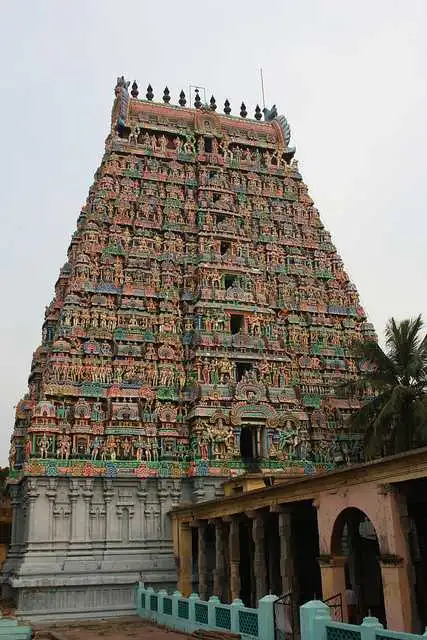
Believed to have been constructed in the 7th century A.D by the Cholas, Adi Kumbeshwara Temple is one of the grandest and the oldest Shiva temple in the town. The temple has a magnificent architecture with the trademark style of the Cholas. It is dedicated to Lord Shiva and houses a unique Shiva lingam.
Nageswaran Temple
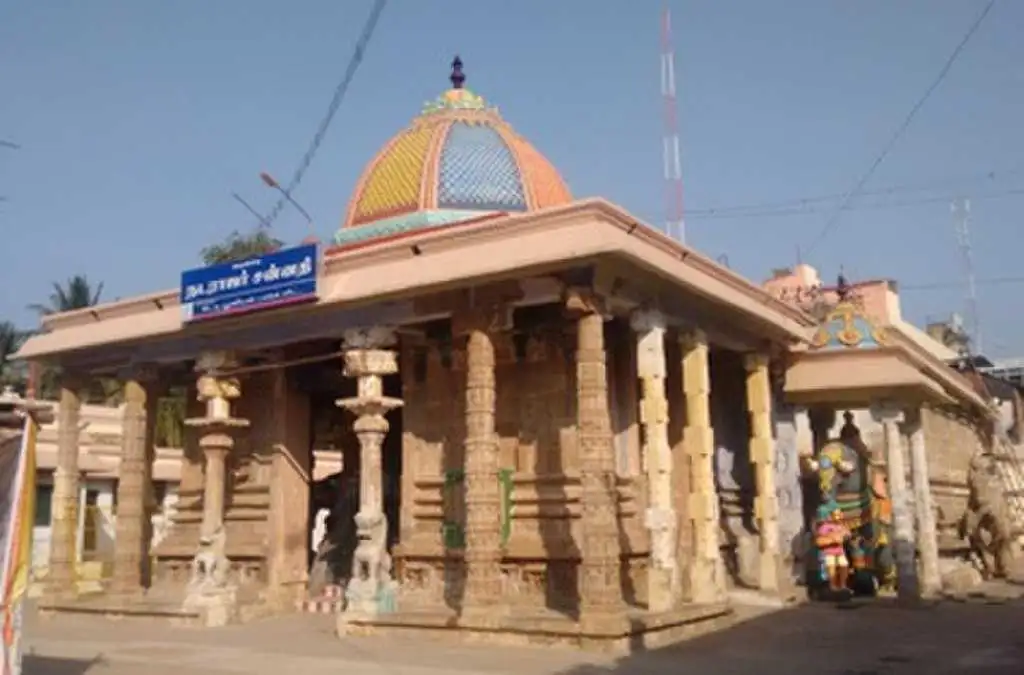
Constructed as a chariot, the Nageswaran temple is an important Shaivite temple. A piece of genius Chola architecture, it is an important Shaivite temple. The temple is a marvelous example of the Chola's architectural prowess as the constructed the temple in a way so that it will only let in sunlight during the month of March-April.
Mahamaham Tank
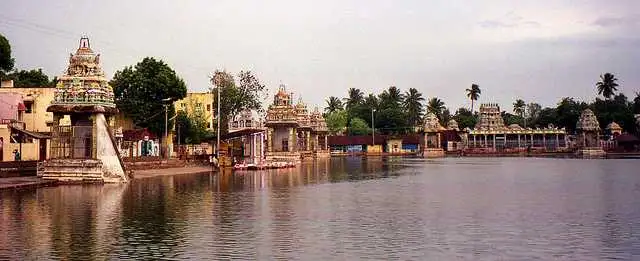
Located in the center of the town, the Mahamaham Tank is a place of great reverence and religious importance for the people of South India. The tank is the place where millions of pilgrims from all over the country gather, once every twelve years to take dip in its holy waters to celebrate the Mahamaham Festival.
Sarangapani Temple
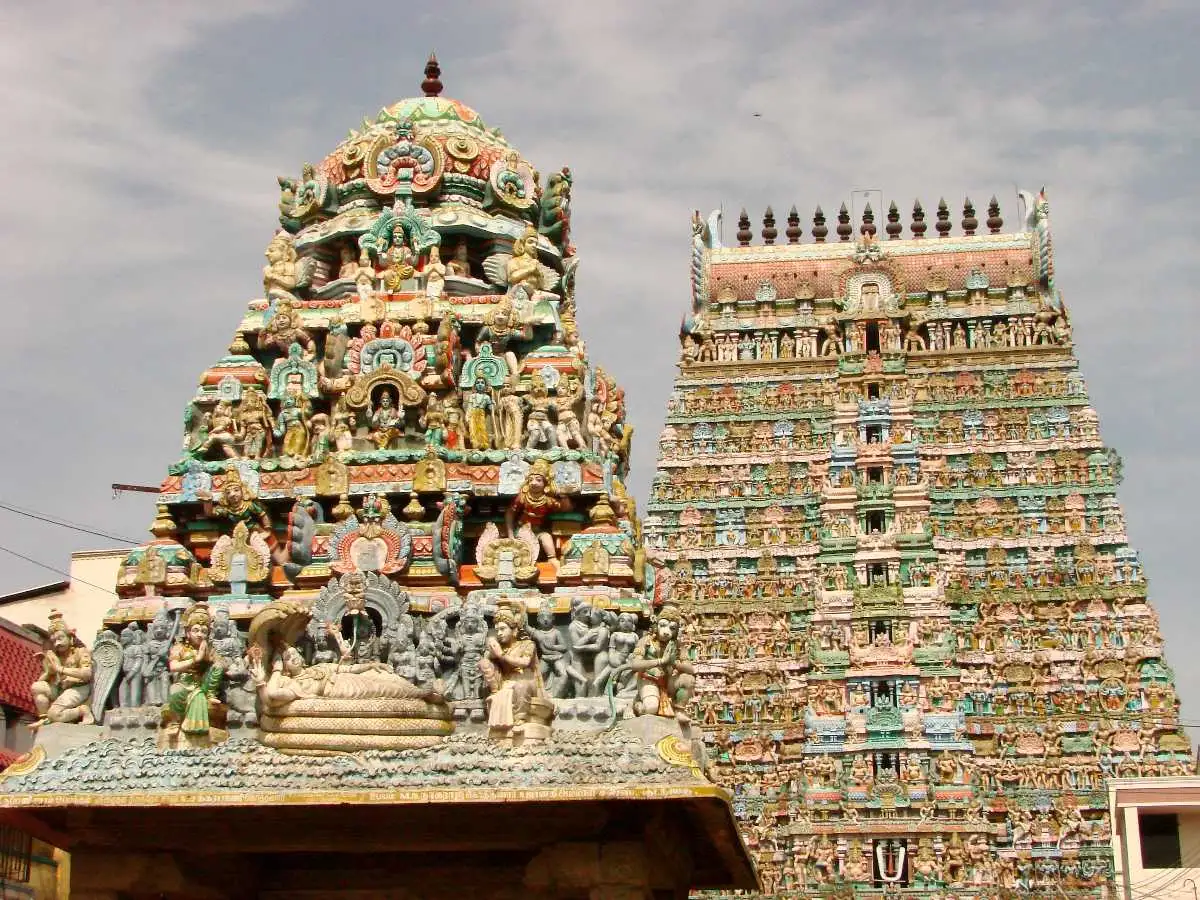
Sarangapani Temple, an ancient temple dedicated to Lord Vishnu, is located in the town of Kumbakonam in the South-Indian state of Tamil Nadu. The beautiful temple is located on the banks of River Kaveri and is frequented by devotees of Lord Vishnu from all over the world. Along with being a sacred place of worship, the temple is a work of art in itself, with several tiers of intricately carved and colourfully decorated mythological sculptures and images. The grandeur of the temple is breathtaking. It has the tallest tower in the town. As one explores the Sarangapani Temple, they are bound to feel a certain vibe as hundreds of devotees transmit energies through their prayers and the experience is surreal. Sarangapani is the deity who is an avatar of Lord Vishnu. The temple is considered to be one of the 108 holy temples dedicated to Lord Vishnu in India. It is also regarded as one of the five sacred temples dedicated to an avatar of Lord Vishnu, Ranganatha. Locals know it well by the name Pancharanga Kshetram on the banks of the sacred River Kaveri. Many believe that taking a dip in the holy waters of River Kaveri and offering their prayers to Lord Vishnu will wash off all their sins. Some say there are several ways to achieve the same goal of peace, tranquillity and happiness. A visit to Sarangapani Temple is one of those. This temple should be included on your list of attractions to visit this year.
Airavatesvara Temple
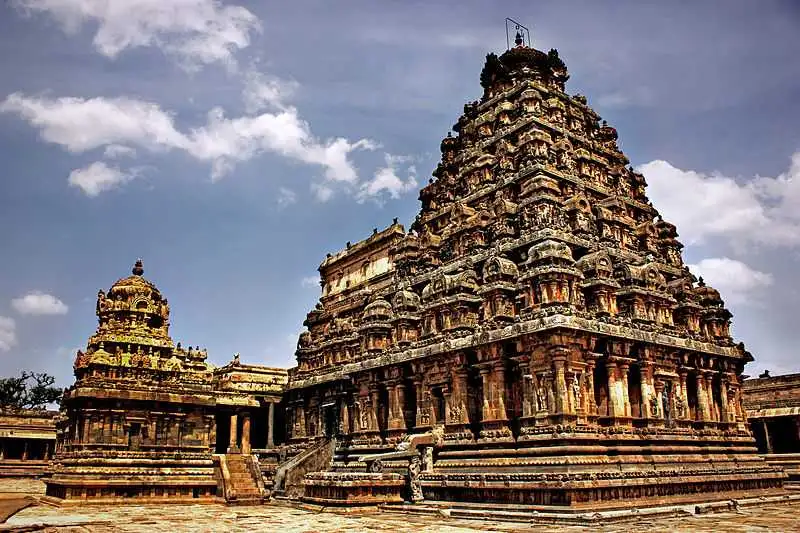
Located in the town of Darasuram near Kumbakonam in Tamil Nadu, Airavatesvara Temple is a revered Hindu temple and a UNESCO world heritage site. Part of the popular trio known as the Great Living Chola Temple along with Brihadeeswara Temple at Thanjavur and the Gangaikondacholisvaram Temple at Gangaikonda Cholapuram, Airavatesvara Temple was built by the Chola King Rajaraja Chola II in the 12th century CE. Presided by the Hindu God Lord Shiva, the temple is amongst the eighteen medieval era Hindu temples in the Kumbakonam area. The shrine displays the Vaishnavism and Shaktism legs of Hinduism, and the traditional Nayanars- the Bhakti saints of Shaivism. Constructed in the chariot structure and built in stone, the temple has smaller shrines dedicated to several Vedic and Puranic deities including Indra, Agni, Varuna, Vayu, Brahma, Surya, Vishnu, Saptamtrikas, Durga, Saraswati, Sri devi (Lakshmi), Ganga, Yamuna, Subrahmanya, Ganesha, Kama, Rati and others. Lord Shiva’s spouse has a smaller shrine towards the northern side of the temple premises known as Periya Nayaki Amman. Lately, some of the temple is in a crumpled state with the gopurams entirely in ruins. However, the main shrine and the associated sanctums still stand sturdy. The temple attracts pilgrims and devotees in thousands annually especially during the month of Magha for several special poojas.
Kashi Viswanath Temple
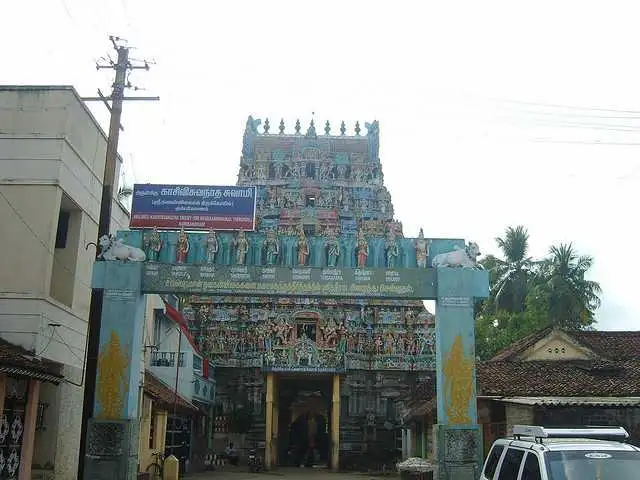
Kashi Viswanath Temple is an important temple and is linked with the origins of the Mahamaham Festival. The temple another beautiful representation of Chola architecture is known to house the deities of all the river goddesses in Hindu mythology.
Swaminathaswamy Temple, Swamimalai
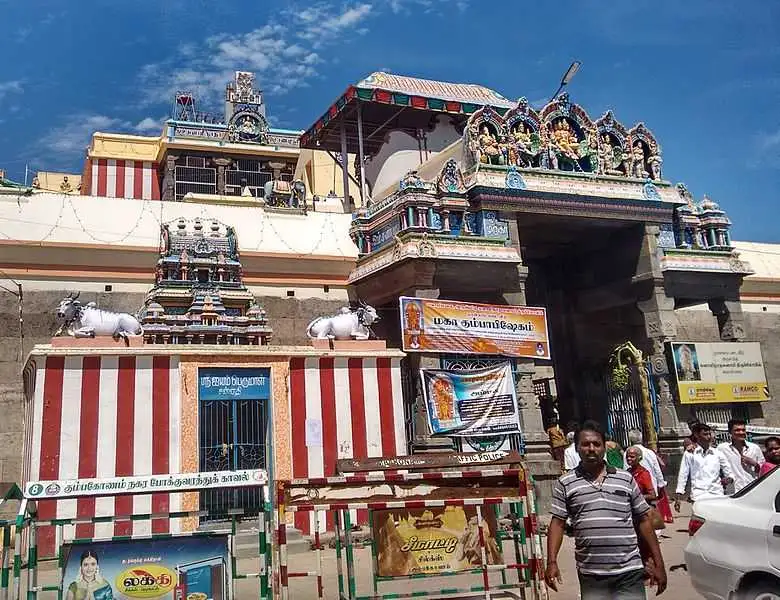
Perched atop a hill in the Swamimalai district of Kumbakonam, Tamil Nadu, Swaminathaswamy Temple is enshrined by Murugan, son of the Hindu God Lord Shiva who is also known as Swaminathaswamy. The shrine is only of the six holy temples of Murugan called Arupadaiveedu. The temple complex also houses shrines of Murugan’s mother- Parvathy and his father Shiva; although, those are located at the base of the hill. Sixty steps lead to the main shrine at the top which are named after sixty Tamilian years. Besides, the temple has three gopurams and three precincts. There is an interesting story related to the name of the temple. It is believed that Murugan lauded the meaning of Pranava Mantra to his father and hence, came to be known as Swaminathaswamy. It is believed that the construction of the temple dates back to 2nd century BC from the Sangam Period, however, it was renovated and modified by Parnataka Chola I. The temple was greatly damaged and destroyed in the Anglo- French War in 1740, but later, it was renovated by the government. Currently, the temple is managed and maintained by Hindu Religious and Endowment Board of the Government of Tamil Nadu.
Uppiliappan Temple
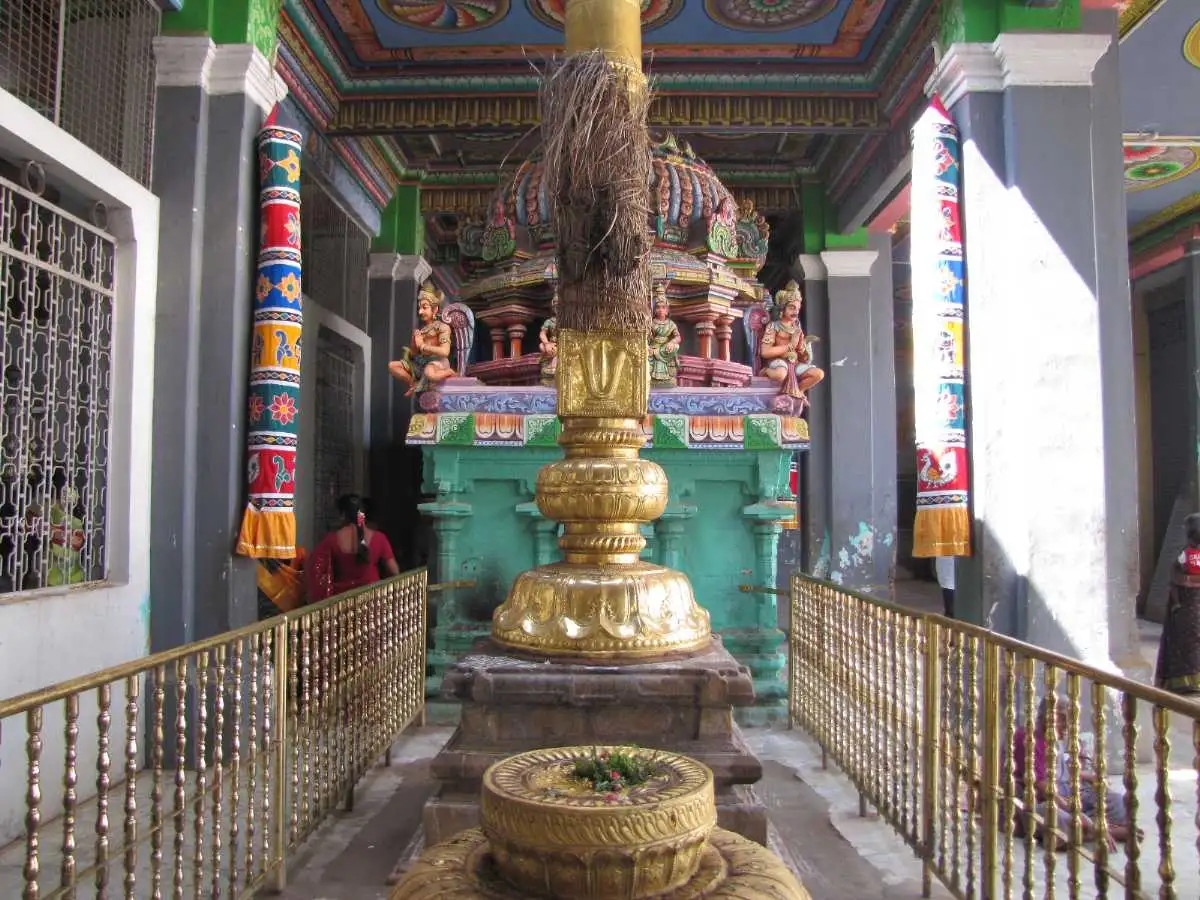
Located in the village of Thirunageswaram, near Kozhikode, Uppiliappan Temple is a revered Hindu temple. Also known as Thiruvinnagar of Venkatachalapathy Temple, the temple enshrines Lord Vishnu and is constructed in the Dravidian style of architecture. Glorified in the popular Tamil work- Divya Prabandha, the shrine is counted as the 60th amidst the 108 Divya Desams dedicated to Lord Vishnu. Vishnu is worshipped as Lord Uppiliappan and his spouse Lakshmi is worshipped as Bhumi Dev. The construction of the temple is believed to have been started during the reign of the Medieval Cholas in the 8th century AD and was completed in the times of Thanjavur Nayaks. The five-tiered gopuram is constructed within a granite wall and has two inscriptions dating from the Chola period. Administered and maintained by the Hindu Religious and Endowment Board of the Government of Tamil Nadu, Uppiliappan Temple observed six daily rituals and three annual festivals. Panchguni Festival (also known as Chariot Festival) is celebrated during March- April and thousands of pilgrims gather at the spot to be a part of the festivities.
Thenupuriswarar Temple
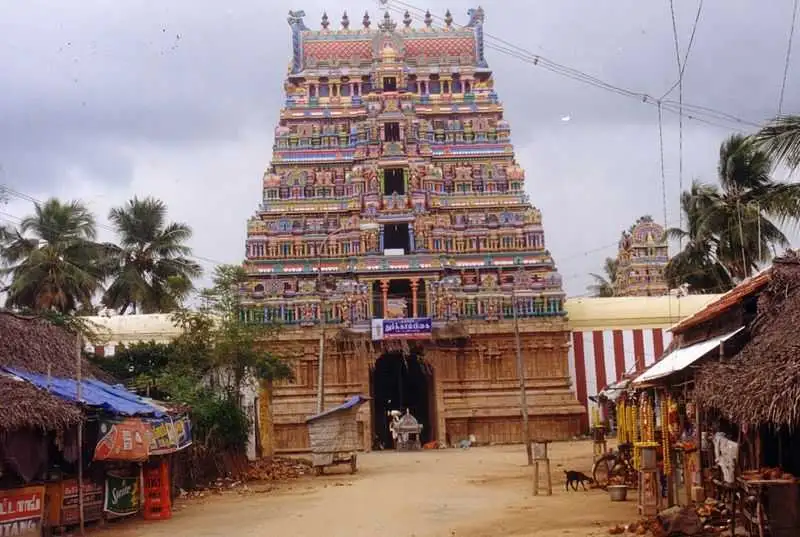
Located in the holy village of Patteeswaram in Kumbakonam, Thenupuriswarar Temple is a revered Hindu shrine dedicated to Lord Shiva. Believed to have been built during the reign of the Cholas, the current standing structure was completed by the Nayaks in the 16th century. The magnificent temple is presided by the lingam of Thenupuriswarar (Lord Shiva) and has an additional shrine for his consort- Goddess Parvati (colloquially known as Nyanambikai). The deity gets its vernacular name and identity from the 7th-century work of Tamil Saiva known as Tevaram. Besides, both the temple and the deity have lots of myths and legends attached to their existence, mentioned in the classified works of the Nayanars- Paadal Petra Sthalam. Sprawling over an area of four acres, the temple boasts of a splendid seven-tiered gopuram and striking architectural features. In addition to the chief shrines of Thenupuriswarar (Shiva), Nyanambikai (Parvati) and Durga, the temple also has idols of several other Hindu deities and avatars including Ganesha, Sapthamatha, Mahalakshmi, Renuka, Navagraha, Surya, Chandra and Bhairava. All the shrines are enclosed in concentric granite walls and boast of beautifully sculpted pillars and elaborate interiors. The temple hosts four annual festivals, the most prominent of which is the Muthu Pandal Festival celebrated during the month of Chittirai (April - May). Currently, the premises are managed and maintained by the Hindu Religious and Charitable Endowments Department of the Government of Tamil Nadu and is flocked by thousands of tourists day in and day out.
Suryanar Koil Temple
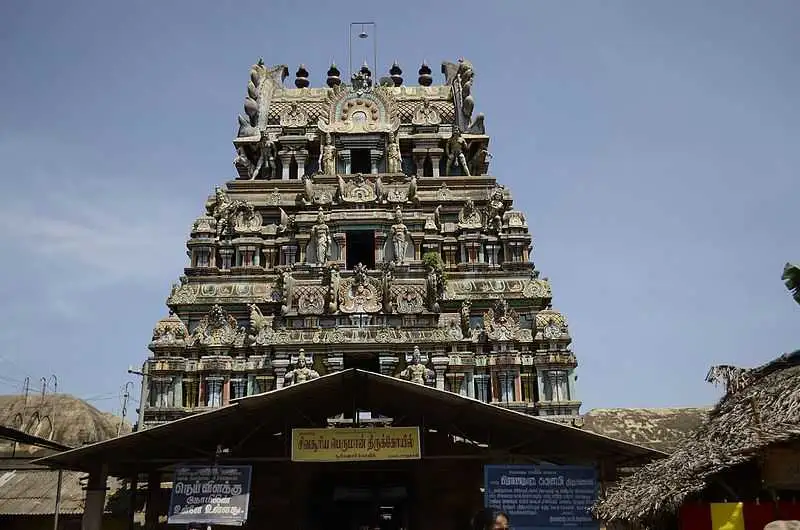
Located in the tiny village of Suryanar Koil near the town of Kumbakonam in Tamil Nadu, Suryanar Koil Temple (also known as Sri Suryanar Temple) is dedicated to the Hindu Sun God. Presided by Suriyanar, the Sun and its consorts- Ushadevi and Pratyusha Devi, the temple also houses the planetary deities. The shrine is one of the nine revered Navagraha temples in Tamil Nadu and is the only one of its kind to have separate shrines for all the planetary deities. Very popular for the traditional Navagraha pilgrimage esteemed by the Hindus, the temple is venerated for its pujas which supposedly can cure malefic effects of Saturn (shani), reduces hurdles in marriage, helps in good education and career goals and removes putra dosham etc. Suryanar Koil Temple is believed to have been built in the 11th century during the reign of Kulottunga Chola; the later additions and renovations were made during the Vijayanagar Empire. Constructed in the traditional Dravidian style of architecture, the temple boasts of a five tiered gopuram, an elaborate gateway tower and impressive granite walls enclosing each shrine within the premises. Legend goes to say that the planetary deities were cursed by Brahma to reside in the wild jungle; however, later, Lord Shiva made their abode a pilgrimage spot. The temple has six customary rituals performed daily, and celebrates two annual festivals; and, is managed and maintained by Hindu Religious and Charitable Endowments Department of the Government of Tamil Nadu.
Mahalingeswarar Temple
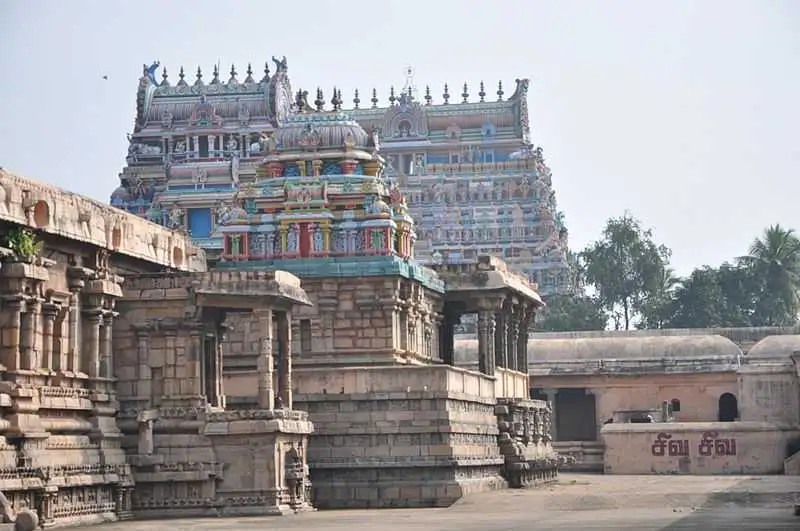
Located in the district of Tiruvidaimaruthur in Tamil Nadu, Mahalingeswarar Temple (also known as Thiruvidaimarudur Temple) is a highly revered temple by the Hindu sect of Savism. Enshrined by the Hindu God Shiva colloquially known as Mahalingeswararswamy, the presiding deity is represented by his lingam known and the venerated idol is known as Jothimayalingam. The shrine is one of the seven major Shiva temples and this particular lingum is the focal point of the seven consorts of Shiva. The temple also boasts of a magnificent shrine of Goddess Parvati- consort of Shiva, depicted in the form of Pirguchuntarakujambigai. Mahalingeswarar Temple has honourable mentions in the 7th century Tamil Saiva canonical work called Tevaram and also in the 9th century Manikkavacakar poetry. The 149 inscriptions excavated at the site suggest that the temple in an amalgamation of the architectural expertise and construction finesse in the life and times of Pandyas, Cholas, Thanjavur Nayaks and Thanjavur Maratha kingdom. Like most other edifices in the area, the construction of Mahalingeswarar Temple is believed to have been started in the 9th century during the reign of the Cholas and was completed around 16th century during the rule of Thanjavur Nayaks. Other than the magnificent gopurams, the temple boasts of spectacular shrines of various deities, the most prominent of which are Mahalingeswaraswamy, Pirguchuntaragujambigai and Mookambigai. Currently, Mahalingeswarar Temple is managed and maintained by a South Indian monastic institution in the name of Thiruvaduthurai Adheenam.
Kanjanur Sukran Temple
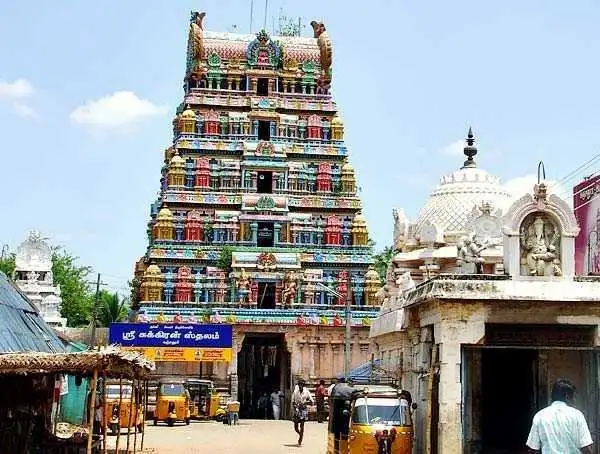
Located in the village of Kanjanur, 18 kms from the city of Kumbakonam, Kanjanur Sukran Temple (also known as Agneeswarar Temple) is a Hindu Temple dedicated to Sukra (celestial deity- Venus). However, the presiding deity of the shrine is Lord Shiva in the form of Agniswarar. The temple has been established with the common belief that Lord Shiva is all- pervading and that Venus (Sukra deity) is located within the stomach of Lord Shiva. Built during the times of medieval Cholas, the temple boasts of striking architectural finesse with a five tiered gopuram and two precincts. The construction of the shrine is believed to have been completed during the Vijayanagar Period and ever since, it is known by different names including Palaasavanam, Brahmapuri, Agnistalam and Neelakudi. Besides Lord Shiva enshrining the temple, there is also housed a spacious shrine for Goddess Parvathy in addition to several deities- Maanakkanjaarar, Nayanmaar and Kalikkaamar. The village of Kanjanur is popular for being one of the nine Navagraha sthalas in the Cauvery Delhi region dedicated to Venus and called Sukra. Unlike the other temples of its kind, Kajanur Sukran depicts a Shiva Linga to depict the Agniswarar. The shrine also boasts of stone images of Nataraja and Sivakami. The temple is a revered pilgrimage site and is thronged by devotees and tourists all through the year.
Brahma Temple
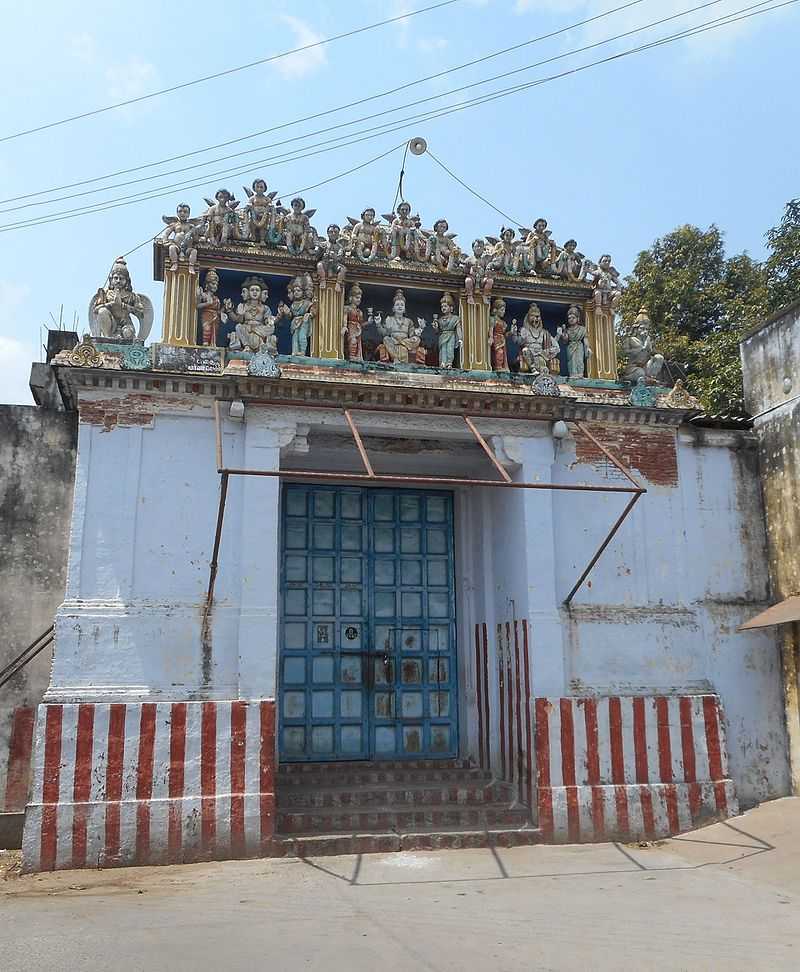
Located in the Thanjavur district of Kumbakonam in Tamil Nadu, Brahma Temple is a Hindu Temple mainly dedicated to Lord Vishnu colloquially known as Vedanarayanaperumal. His consort- Goddess Lakshmi enshrines the chamber next to the presiding deity, and she is known as Vedavalli. Lord Brahma occupies the shrine adjacent to the sanctum sanctorum on the right. The temple is popularly known as Brahma Temple as this is one of the only two temples dedicated to Brahma in the world. The temple presents Lord Brahma in a four face figure- the front face and the adjoining two faces are open to display; however, the back face is of a female, that can only be seen in the mirror which is veiled and can be viewed only after requesting the priest to uncover the mirror. Lord Brahma is flanked with the idols of Saraswati (Goddess of Knowledge) and Gayatri (personified form of Gayatri mantra). At the left side of the sanctum is the shrine of Lord Narasimha flanked by Sridevi and Bhoodevi. Brahma Sankalp Pooja is the most important pooja performed at the temple. Lord Brahma and Goddess Saraswati are especially worshipped by parents for success and prosperity before their kids begin their education. The temple is a revered pilgrimage spot and is thronged by devotees and tourists alike.
Kampaheswarar Temple
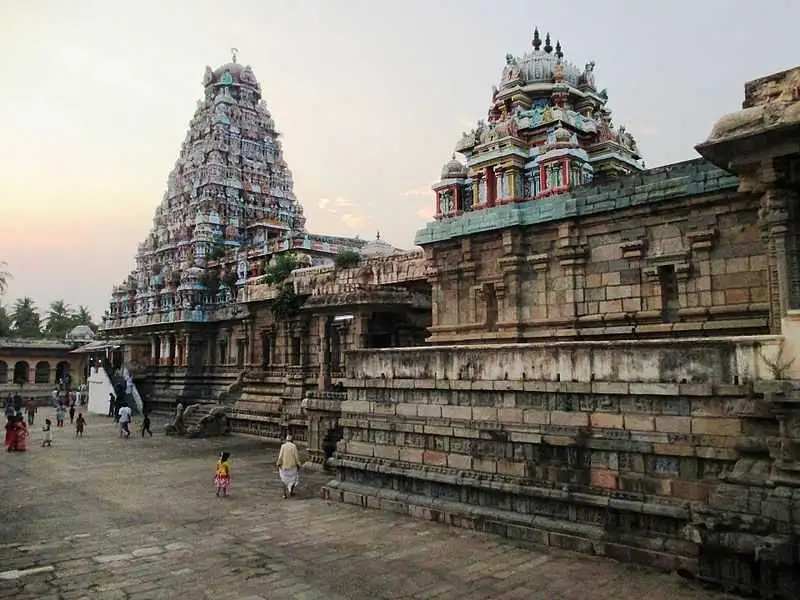
Located in the town of Thirubuvanam, 9 kms from Kumbakonam in Tamil Nadu, Kampaheswarar Temple (also known as Sarabeswarar Temple) is an age-old Shaivite temple flocked by devotees from all across the world all through the year. The temple is enshrined by Lord Shiva, worshipped in the form of a Shiva Linga. It is believed that Lord Shiva once relieved a king of quaking (kampa) as he was haunted by an evil spirit (Brahmarakshas) of a Brahmin who he killed accidentally. Ever since, Lord Shiva came to be known as Kampaheswarar and was worshipped in the same form at the temple. The Shiva linga is installed in the garbhagriha of the sanctum sanctorum on an elevated platform. Besides the chief deity, the temple also houses an enormous shrine for Sarbeswarar who is a half lion and half eagle. As per legend, the deity saved the celestial deities from the wrath of Vishnu in the form of Narasimha after he killed Hiranyakasibu. Built in the traditional Dravidian style architecture, the temple also boasts of beautiful sculptures of Sridevi and Bhudevi- consorts of Lord Vishnu. The shrine is popular among pilgrims and it is a common a belief that praying here can solve hurdles in marriages and help with child boon.
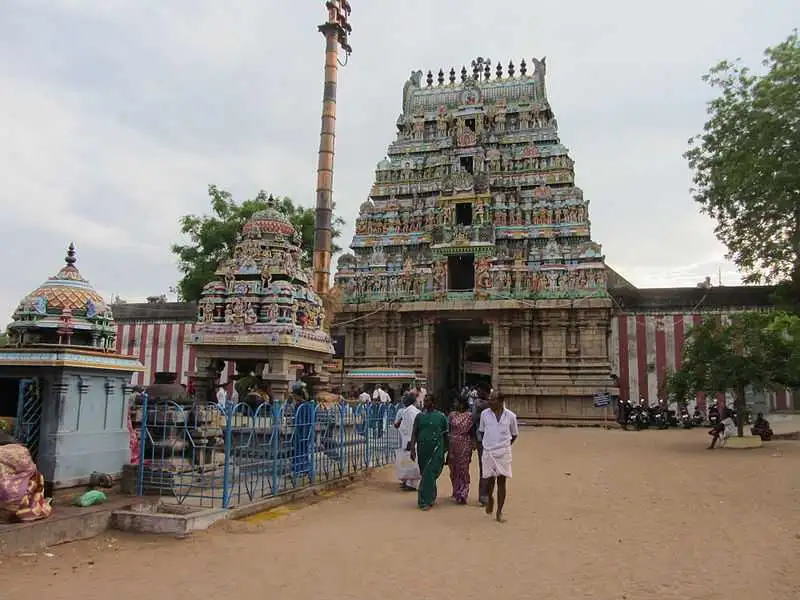
Situated in the village of Thirunageswaram, on the outskirts of Kumbakonam in Tamil Nadu, Thirunageswaram Temple (also known as Rahu Temple) is an ancient Hindu temple dedicated to Lord Shiva. Revered by the Shiva bhakts, the temple is also associated with the nine planets- Navagraha Sthalam especially Rahu. The temple is enshrines by shivalinga which is worshipped as Naganathar, and Lord Shiva’s consort Goddess Parvathy, who is worshipped as Pirasoodi. Like the other Shiva temples in the area, this one is also revered in the Tamil canonical work Tevaram and is classified as Paadal Petra Sthalam. Believed to have been built in the Chola Period, the shrine boasts of four elaborate gopurams. Besides the presiding deities, the prominent shrines are of Naganathar, Rahu and Piraisoodi Amman. The temple also has a beautiful flower garden in the third precinct and a tiny water tank called Sula Theertham. As per common belief, a dip in the tank can cleanse one of his sins. The temple follows a six daily rituals routine. The Brahmotsavam or the Prime Festival is the chief festival of the shrine.
Tourist Places
- Kanyakumari
- Navathirupathi
- Tirunelveli
- Kancheepuram
- Rameshwaram
Popular Tags
Airavatesvara Temple
A divine architectural marvel, there are some structures that would take your breath away in the very first glimpse. here is one such wonder, so stunning and imposing. the airavatesvara temple is a splendid example of a place of worship rich in grandeur, history and divinity.
Oh what a beauty it is – the grand Airavastesvara Temple in Darasuram. The temple located in Kumbakonam is a treasure-trove of history, facts and amazing art. The construction of the temple dates back to the 12th century CE and was built by the renowned Chola king Rajaraja Chola II. Architecture, sculptures, paintings, bronze casting – the temple reflects the rich cultural heritage of the Chola dynasty. The temple, dedicated to Lord Shiva, is named after ‘Airavat’, the majestic white elephant of Lord Indra. A part of the trio of ‘Great Chola Temples’ that also include the Brihadeeswara Temple at Thanjavur, the Gangaikondacholeeswaram Temple at Gangaikonda Cholapuram and the Airavastesvara Temple is also a part of the UNESCO World Heritage Sites. The art work that adorns the temple is extremely detailed, intricate and beautiful. It’s sheer poetry in stone. Built in the Dravidian architectural style, the main stone work of the building resembles a chariot. The entire temple complex is filled with rich carvings and inscriptions that narrate stories from ancient Indian Puranas. Words don’t do justice to the charm and splendour that the structure emanates; it’s one to be seen and experienced. Yet another mind-blowing part of the temple are the musical steps. These 7 singing steps that lead to the altar are intricately carved and represent seven musical notes. What a fascinating work of art that dates back to thousands of years. All these features make the temple complex a truly must-visit destination on your trip to Tamil Nadu.

- How to Reach
- Best Time to Visit
Kumbakonam Bus Stand, about 5 km away.
Tiruchirappalli International Airport, about 90 away
Darasuram Railway Station, about 1 km away
November to February
Nearby Destinations
Other world heritage sites.
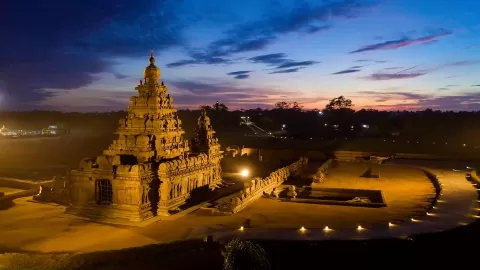
Mamallapuram Shore Temple
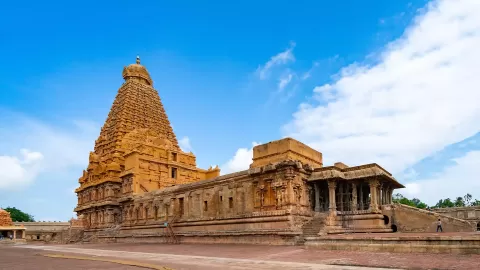
Brihadeeswara Temple
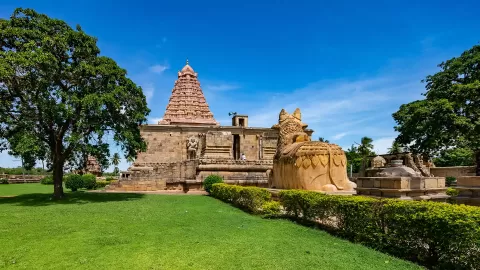
Gangaikonda Cholapuram
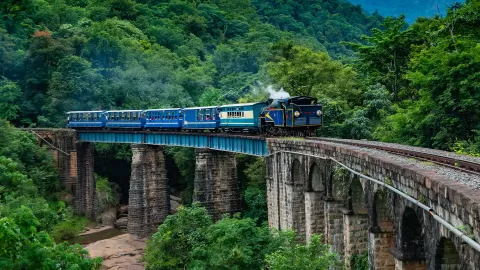
The Nilgiri Mountain Railway
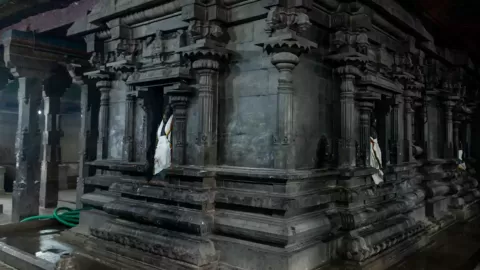
Swami Malai Temple
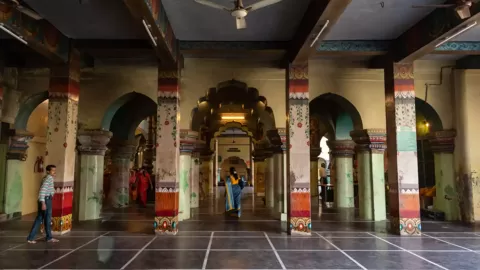
The Punnainallur Mariamman Temple
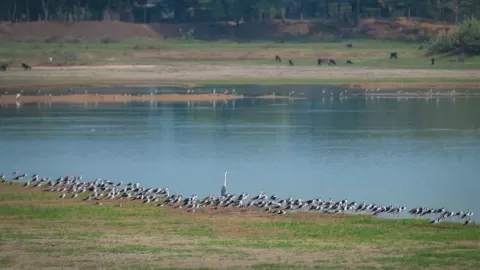
Vaduvoor Bird Sanctuary
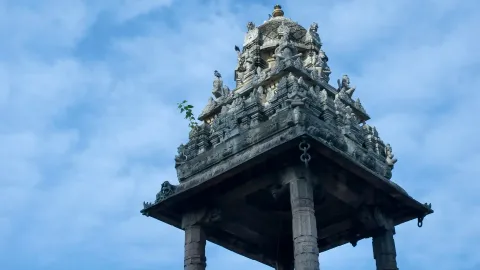
Jayankondam Varatharaja Perumal Temple
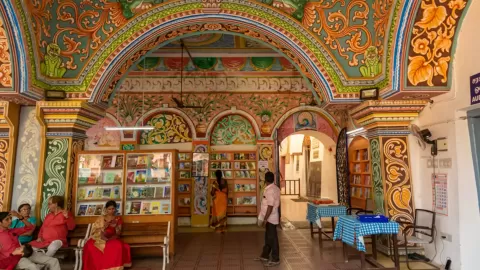
Saraswathi Mahal Library
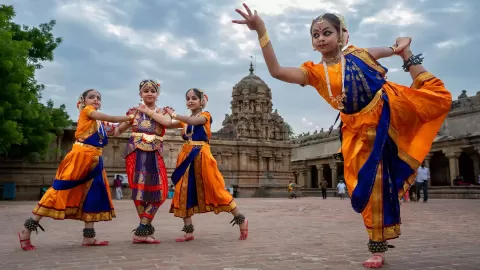
Koothanur Saraswathi Temple
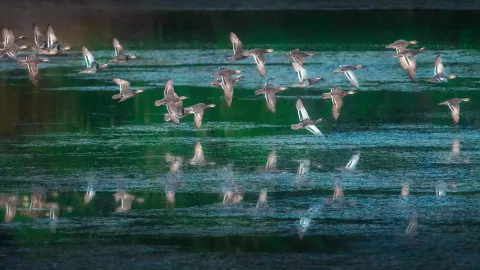
Karaivetti Bird Sanctuary
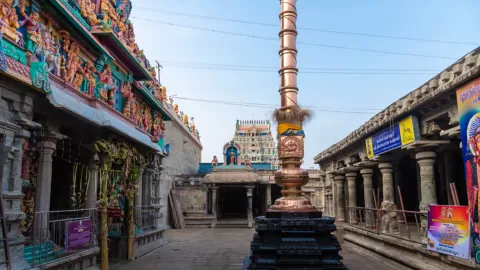
Thyagarajaswami Temple, Tiruvarur
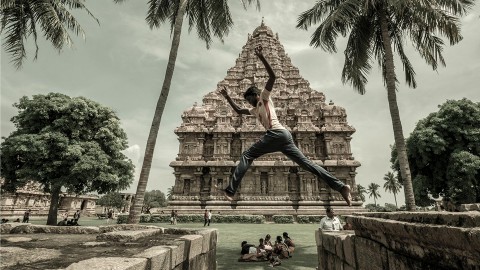
A relic of bygone Chola power & prosperity
The great Chola king, Rajaraja II (1143 CE –1173 CE), built the Airavatesvara Temple in Darasuram, which is ranked only third after the two famed Chola temples of Thanjavur and Gangaikondacholapuram. Read more...
Explore Thanjavur District
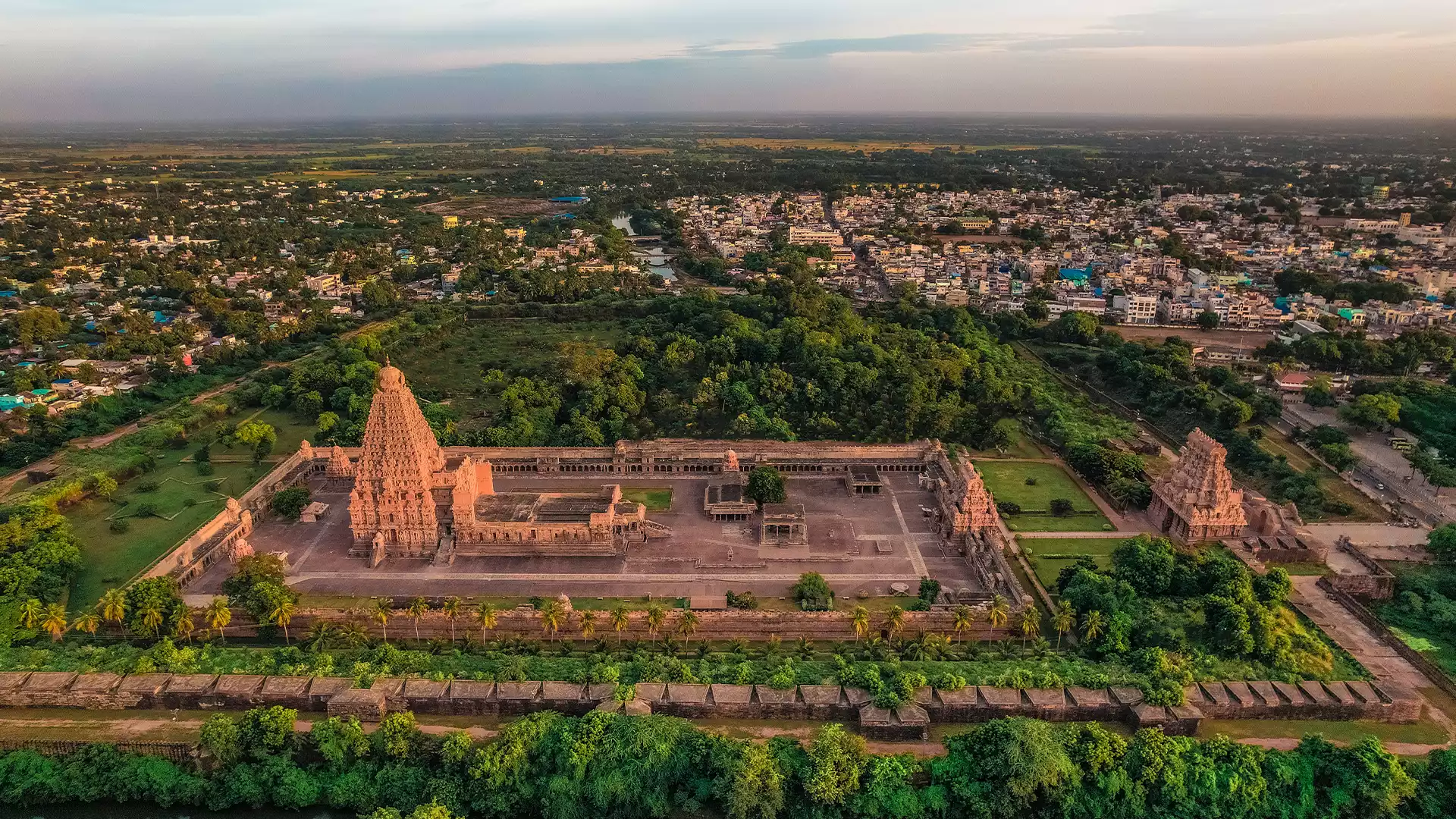
#TamilnaduTourism
Check out the world know your way of experiencing Tamil Nadu
Subscribe to our newsletter
Subscribe to our newsletter Sign up for Tamilnadu Tourism's monthly newsletter to learn about our events, offers and more...

Kumbakonam: The Temple Town Of Tamil Nadu
Join us as we embark on a spiritual journey through the sacred destinations of India, exploring the divine allure of religious tourism where history, faith, and culture converge. In this article, we will explore Kumbakonam, the temple town of Tamil Nadu. Nestled in the southern state of India, Kumbakonam boasts a rich history dating back centuries, with its temples serving as a testament to the region’s deep-rooted religious traditions. Prepare to be mesmerized by the sprawling architecture, intricate sculptures, and vibrant festivities that make Kumbakonam a must-visit destination for spiritual seekers and cultural enthusiasts alike.
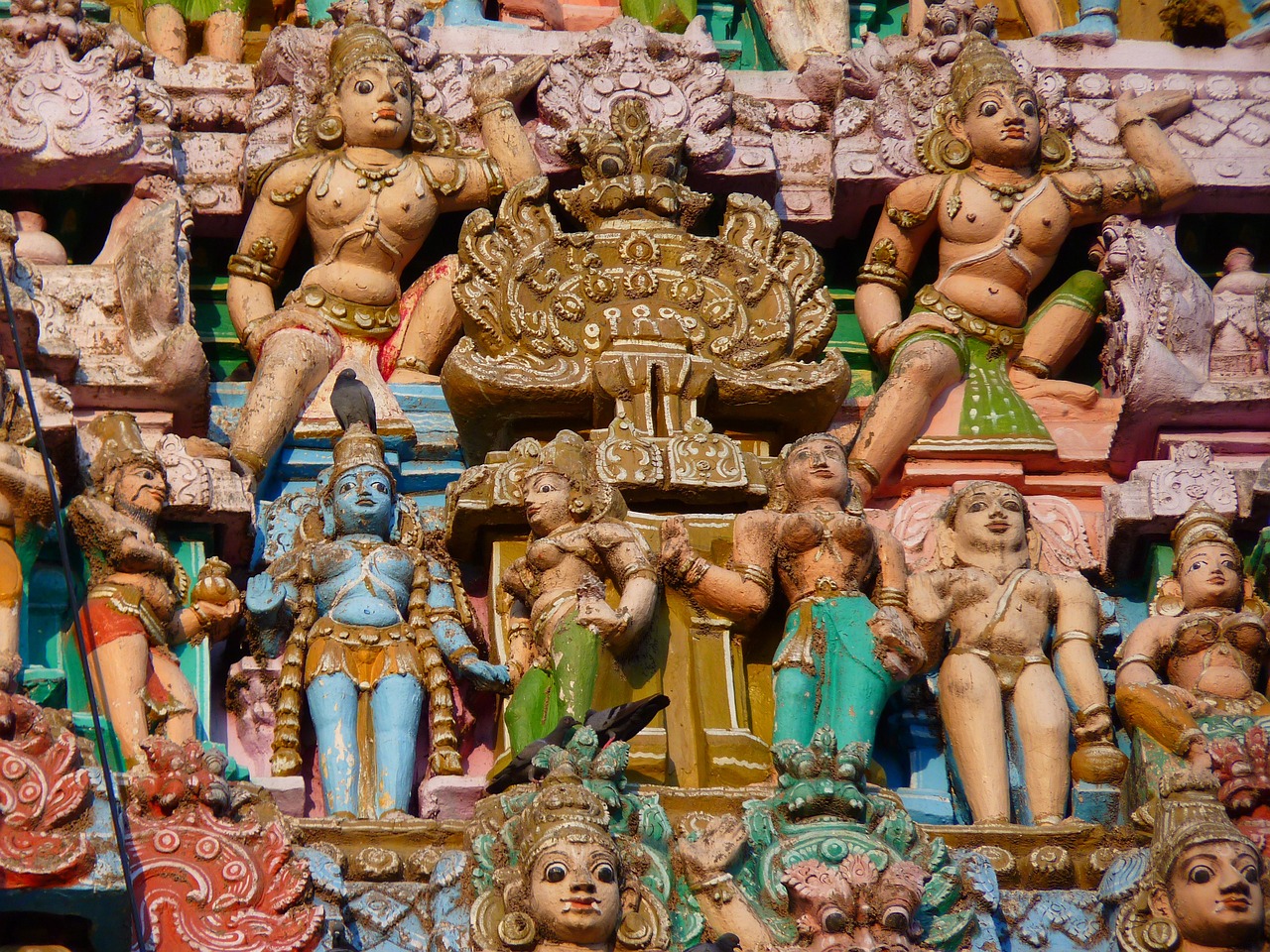
Table of Contents
History of Kumbakonam
Kumbakonam, a picturesque town located in the Indian state of Tamil Nadu, has a rich and fascinating history dating back to ancient times. The town’s origins can be traced back to the Sangam period, which dates back to the 3rd century BCE to the 3rd century CE. During this period, Kumbakonam was a flourishing center of trade and commerce.
Ancient origins
Kumbakonam, also known as Kudamukku, was originally a small village situated on the banks of the Cauvery River. It derived its name from the Tamil words “kumbha,” which means pot, and “kona,” which means corner. The town’s name is believed to have originated from a mythical pot-shaped structure that Lord Brahma, the Hindu creator deity, is said to have placed on the top of Mount Meru.
Influence of Chola dynasty
The Chola dynasty, one of the most powerful and influential dynasties in South India, had a significant impact on the development of Kumbakonam. The town served as the capital of the Chola dynasty during the 7th century CE. The Chola kings were great patrons of art, architecture, and literature, and their influence can still be seen in the magnificent temples and structures that dot the town.
Significance in Tamil Nadu history
Kumbakonam played a pivotal role in the history of Tamil Nadu. It was a prominent center of learning and culture, attracting scholars, artists, and intellectuals from all over the region. The town was known for its prestigious schools, where students were taught various subjects, including literature, music, dance, and astrology. Kumbakonam flourished under the rule of various dynasties, including the Pallavas, Cholas, and the Vijayanagara Empire.
Religious Significance
Kumbakonam is renowned for its religious significance and is often referred to as the “Temple Town” of Tamil Nadu. The town is home to numerous temples, each with its unique architectural beauty and historical importance.
A hub for temple architecture
Kumbakonam stands as a testament to the architectural brilliance of ancient India. The temples in the town showcase intricate carvings, towering gopurams (temple towers), and ornate sculptures that leave visitors in awe. The temple architecture of Kumbakonam is characterized by its Dravidian style, featuring pyramid-like structures and elaborate ornamentation.
Famous temples of Kumbakonam
Some of the most famous temples in Kumbakonam include the Sarangapani Temple, the Airavatesvara Temple, and the Adi Kumbeswarar Temple. These temples attract devotees and tourists from all over the world who come to witness the grandeur of the architecture and partake in the religious rituals.
Religious festivals and rituals
Kumbakonam is known for its vibrant religious festivals and rituals. The town comes alive during the annual Mahamaham festival, which attracts millions of devotees who take a ritual bath in the holy Mahamaham tank. Other festivals celebrated with great fervor in Kumbakonam include the Navaratri festival, Arudra Darshanam, and Panguni Uthiram.
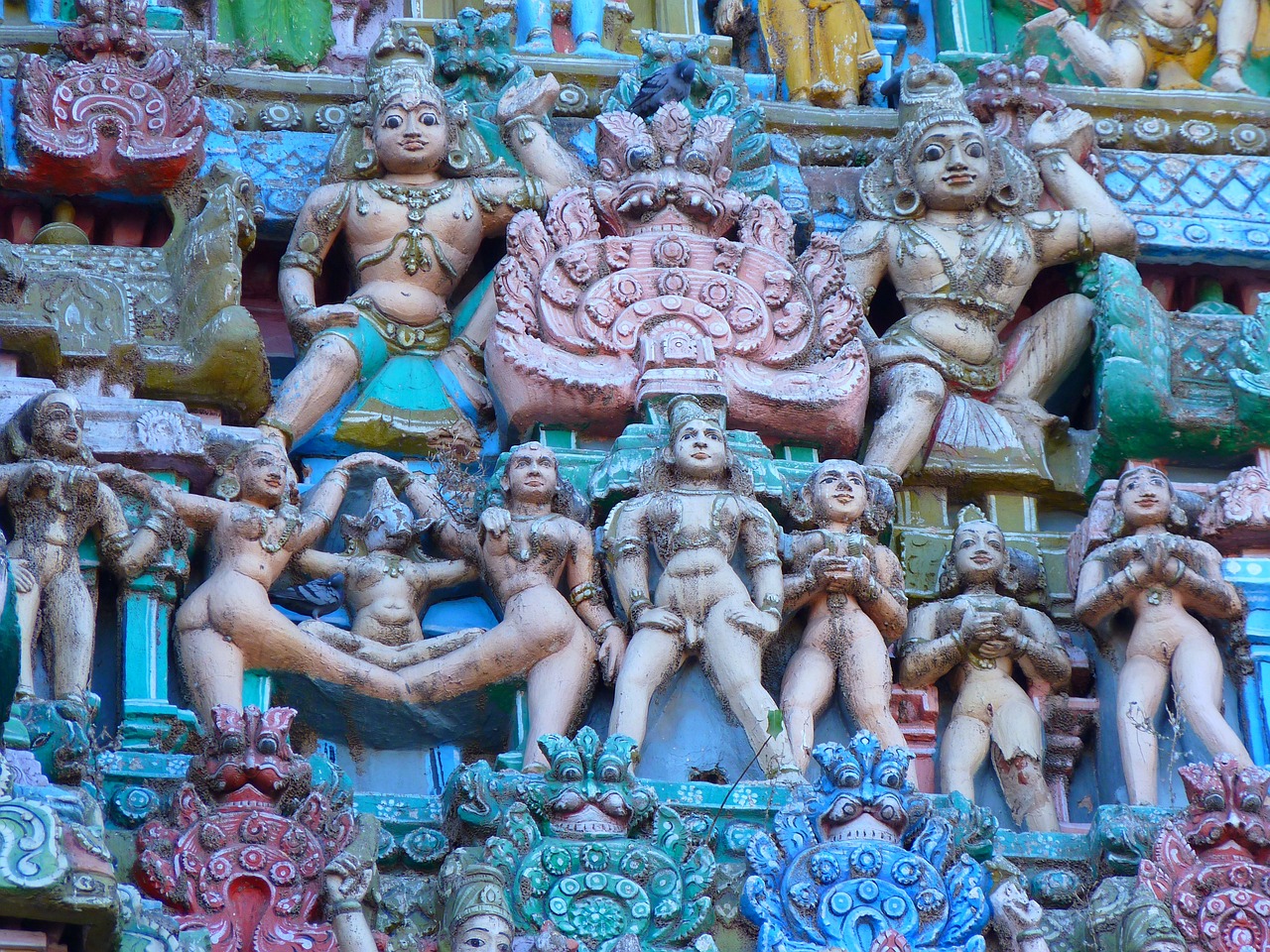
Cultural Heritage
Kumbakonam is not just a town of temples; it also boasts a rich cultural heritage that has been passed down through generations.
Traditional arts and crafts
The town is famous for its traditional arts and crafts, including bronze casting, silk weaving, and wood carving. Skilled artisans in Kumbakonam produce exquisite bronze sculptures that are highly sought after by art collectors and enthusiasts. The intricate silk sarees woven in the town are known for their vibrant colors and intricate designs.
Music and dance forms
Kumbakonam has been a patron of music and dance for centuries. The town has nurtured various classical music and dance forms, including Bharatanatyam, Carnatic music, and Nadaswaram (a traditional wind instrument). It is not uncommon to witness impromptu musical concerts or dance performances in the streets of Kumbakonam.
Cuisine and local delicacies
No trip to Kumbakonam is complete without savoring its delectable cuisine. The town is famous for its filter coffee, a strong and aromatic beverage that is a staple for locals and visitors alike. Other local delicacies include tiffin items like idli, dosa, and vada, as well as traditional sweets like paal paniyaram and ellu urundai.
Tourist Attractions
Kumbakonam is a treasure trove of tourist attractions, offering visitors a glimpse into the town’s rich history and architectural marvels.
Mahamaham tank
The Mahamaham tank is one of the most significant attractions in Kumbakonam. It is believed to be the place where the holy rivers of India, including the Ganges, Yamuna, and Saraswati, converge. The tank is encircled by numerous temples and is considered a sacred site for devotees who come to take a dip in its holy waters.
Sarangapani Temple
The Sarangapani Temple is dedicated to Lord Vishnu and is one of the largest temples in Kumbakonam. It is known for its magnificent architecture, with a towering gopuram and intricately carved pillars. The temple complex also houses several smaller shrines dedicated to other deities.

Adi Kumbeswarar Temple
The Adi Kumbeswarar Temple, dedicated to Lord Shiva, is a must-visit for devotees and architecture enthusiasts. It is one of the oldest temples in Kumbakonam and is renowned for its elaborate carvings and sculptures. The temple is believed to have been built by the Chola kings and is a popular pilgrimage site.

Museums and Art Galleries
For those interested in delving into the town’s history and cultural heritage, Kumbakonam offers several museums and art galleries to explore.
Government Museum
The Government Museum in Kumbakonam houses a vast collection of sculptures, artifacts, and ancient manuscripts. It provides visitors with a glimpse into the rich cultural and historical heritage of the region. The museum also hosts regular exhibitions and educational programs to promote awareness and appreciation of art and history.
Saraswathi Mahal Library
The Saraswathi Mahal Library is a renowned institution that houses a vast collection of ancient palm leaf manuscripts and rare books. It is one of the oldest libraries in Asia and is a treasure trove of knowledge and information. Scholars and researchers from around the world visit the library to study its extensive collection.
Chakrapani Temple Art Gallery
The Chakrapani Temple Art Gallery is a unique attraction that showcases a stunning collection of art and sculptures. The gallery is located within the premises of the Chakrapani Temple and provides visitors with an opportunity to admire and appreciate the rich artistic heritage of Kumbakonam.
Prominent Educational Institutions
Kumbakonam has a long-standing reputation as a center of learning and education. The town is home to several prestigious educational institutions that have produced notable scholars and intellectuals.
Kumbakonam Arts and Science College
The Kumbakonam Arts and Science College is a renowned institution that offers undergraduate and postgraduate programs in various disciplines. The college is known for its focus on holistic education and is committed to nurturing students’ talents and fostering their all-round development.
Sastra University
Sastra University, located in Kumbakonam, is a deemed university that offers a wide range of courses in engineering, management, and humanities. The university is known for its high-quality education and has a strong emphasis on research and innovation.
Mahajana College
Mahajana College is a prestigious institution that offers courses in arts, science, and commerce streams. The college has a rich history and is known for its academic excellence and infrastructure. It has produced many successful professionals in various fields.
Natural Beauty and Landscapes
Kumbakonam is blessed with natural beauty and picturesque landscapes, adding to its charm and allure.
Cauvery River
The Cauvery River, one of the major rivers in South India, flows through Kumbakonam, providing a serene and tranquil atmosphere. The river is not only a source of water for irrigation but also a place of religious significance, with several temples located along its banks.
Nachiarkoil village
Nachiarkoil village, located near Kumbakonam, is known for its scenic beauty and lush greenery. The village is nestled amidst paddy fields and coconut groves, offering a peaceful retreat for nature lovers. Visitors can enjoy leisurely walks, bird-watching, and exploring the village’s traditional way of life.
Nadukkaveri river
The Nadukkaveri river, a tributary of the Cauvery River, flows through Kumbakonam, enhancing the town’s natural beauty. The river is surrounded by lush vegetation and provides a serene setting for picnics and leisure activities.
Famous Personalities
Kumbakonam has been home to several famous personalities who have made significant contributions in various fields.
Abdul Kalam
The late Dr. APJ Abdul Kalam, also known as the “Missile Man of India,” was born in Rameswaram but spent a significant part of his childhood in Kumbakonam. Dr. Kalam, a renowned scientist and former President of India, made immense contributions to the field of aerospace and played a pivotal role in India’s missile development program.
M.S. Subbulakshmi
M.S. Subbulakshmi, a legendary Carnatic vocalist, was born in Madurai but had a close association with Kumbakonam. She was known for her mesmerizing voice and exceptional talent in classical music. Subbulakshmi’s contributions to the field of music earned her numerous accolades and honors, including the Bharat Ratna, India’s highest civilian award.
Rajendra Prasad
Dr. Rajendra Prasad, India’s first President, not only played a significant role in the country’s freedom struggle but also had ties to Kumbakonam. He spent his childhood in the town and was known for his exceptional academic abilities and leadership qualities. Dr. Prasad’s contributions to the nation’s political, social, and cultural development are widely recognized and celebrated.
Economic Importance
Kumbakonam holds significant economic importance due to its diverse industries and economic activities.
Agriculture
Agriculture forms the backbone of Kumbakonam’s economy. The fertile lands surrounding the town are ideal for cultivating crops like paddy, sugarcane, and bananas. The region is known for its high-quality agricultural produce, which contributes to both the local and regional economy.
Handicrafts and textiles
Kumbakonam is renowned for its traditional handicrafts and textiles. Skilled artisans in the town produce exquisite bronze sculptures, temple jewelry, and silk sarees, which are in high demand locally and globally. The handicraft and textile industries provide employment opportunities and contribute significantly to the local economy.
Tourism industry
Tourism is a crucial source of revenue for Kumbakonam. The town’s historical and religious significance, coupled with its architectural marvels and cultural heritage, attracts a steady stream of visitors throughout the year. The tourism industry supports various businesses, including hotels, restaurants, and souvenir shops, thereby contributing to the town’s economic growth.
Transportation and Connectivity
Kumbakonam is well-connected to major cities and towns through various modes of transportation.
Air connectivity
The nearest airport to Kumbakonam is Tiruchirappalli International Airport, which is approximately 90 kilometers away. The airport is well-connected to major cities in India and offers both domestic and international flights.
Railway network
Kumbakonam is served by an extensive railway network, with regular train services connecting it to various cities in Tamil Nadu and other parts of India. The Kumbakonam railway station is an important junction that facilitates convenient travel for both commuters and tourists.
Road transport
Kumbakonam is well-connected by road, with several national and state highways passing through the town. The Tamil Nadu State Transport Corporation operates regular bus services, connecting Kumbakonam to neighboring towns and cities. Private taxis and car rentals are also available for convenient travel within and around the town.
In conclusion, Kumbakonam, with its rich history, religious significance, cultural heritage, and natural beauty, is a town that offers visitors a unique and unforgettable experience. From its magnificent temples and architectural wonders to its vibrant festivals and thriving arts and crafts, Kumbakonam truly embodies the spirit of Tamil Nadu. Whether exploring its historical landmarks, indulging in its culinary delights, or simply immersing oneself in the town’s tranquil ambiance, a visit to Kumbakonam is a journey filled with spiritual enlightenment, cultural immersion, and natural wonders.
Indian Culture Team

- Things to Do
- Tour Packages
- Destinations
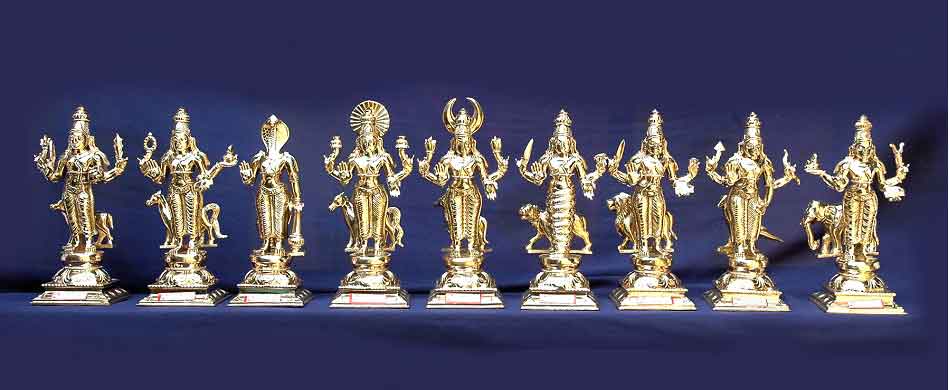
9 Navagraha Temple
The Navagrahas, nine grahas or celestial bodies, comprise Surya (Sun), Chandra (Moon), Angarakan (Mars), Budha (Mercury), Guru (Jupiter), Shukra (Venus), Shani(Saturn), Rahu and Ketu (the two nodes of the eclipses- the Solar and the Lunar)
List of 9 Navagraha Temple:
The word Graha means “ to attract”. These celestial bodies are believed to affect the physical and mental condition of human beings. The grahas are considered to have both a malevolent as well as benevolent influence on the day-to-day course of one’s life.
The nine planets appear to move in the celestial sphere with reference to the stellar constellations known as Nakshatra (Stars). There are twenty-seven Nakshatras which are repeated in a HIndu Calendar every month. The movements of these bodies with respect to the Nakshatras are said to control a person’s destiny including his thoughts and deeds, status and prosperity. The worship of Navagrahas makes the planets that are in auspicious situations offer increased fruits of benefits for one’s actions while the planets which occupy less desirous situations tend to remove the evil effects of a person’s karma.
The Navagrahas are considered to be intermediaries between the principal deity in the temple, almost always Shiva and the worshipper. They each are in charge of specific areas of concern to the devotee, be it health, wealth,pursuit of knowledge, professional gain or just about anything else. The belief is that worshipping the specific graha for the specific need gets the devotee the boon he craves.
- Navagraha Temple Tour Itinerary | Tour Plan
Arrival at Trichy International Airport in the Morning. Start your drive towards Kumbakonam. Visit to the Navagraha Temples like
Thingalur Chandran Temple
Suriyanar Koil
Kanchanoor Sukran Temple
Thirunageswaram Rahu Temple
Alangudi Guru Temple
Relax in the hotel
Finish your breakfast and visit to the Navagraha Temples like
Vaitheeswaran Koil - Chevvai
Thiruvengadu Budhan Temple
Keezhaperumpallam Kethu Temple
Tirunallaru Shani Temple
Proceed your drive to Trichy. You will be dropped in Trichy International Airport as per your flight schedule
- Navagraha Temple Tour Cost
The above rates are valid till 30th September 2023
Navagraha Temple Map
Navagraha Temple Tour Packages

4 Days Navagraha Tour
All Navagraha Temples, Thanjavur Big Temple, Swamimalai Temple, Srirangam Temple, Thiruvanaikovil Temple, Rockfort Temple
Tamilnadu Temple Tour Packages
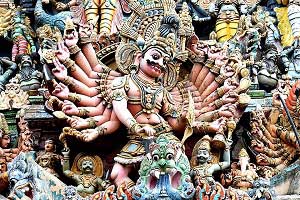
12 Days Tamil Nadu Temples Tour
Trichy, Madurai, Kanyakumari, Rameswaram, Thanjavur, Kumbakonam, Tiruvannamalai, Tirupati, Chennai
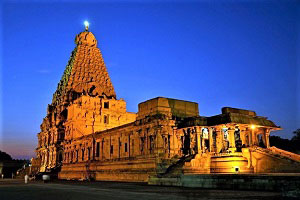
Chennai, Tirupati, Tiruvannamalai, Kumbakonam, Thanjavur, Rameswaram, Kanyakumari, Madurai, Trichy
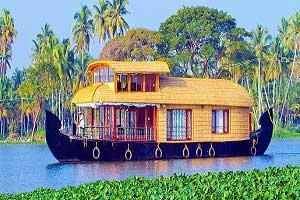
16 Days Tamil Nadu and Kerala Tour
Chennai, Mahabalipuram, Puducherry, Kumbakonam, Trichy, Chettinad, Madurai, Thekkady, Alappuzha, Mararikulam, Kochi
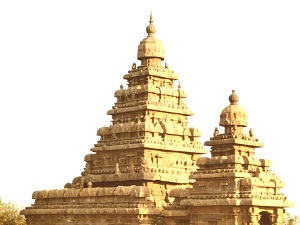
- Fort St. George
- St. Mary''s Church
- Kapaleeswarar Temple
- St. Thomas Church
- Government Museum
- Marina Beach
- Pitchavaram
- Gingee Fort
- Ekambareswarar Temple
- Kamakshi Amman Temple
- Kailasanathar Temple
- Sri Varadharaja Temple
- Sri Vaikunda Perumal Temple
- Mahatma Gandhi Memorial
- Kumari Amman Temple
- Vivekananda Rock Memorial
- Thiruvalluvar Statue
- Thingaloor "Chandran" Temple
- Alangudi "Guru" Temple
- Thirunageswaram "Raaghu" Temple
- Thirunallaru "Sani" Temple
- Suriyanar Kovil "Sun" Temple
- Kanjanoor "Sukran" Temple
- Vaitheeswaran Kovil "Sevvai" Temple
- Thiruvenkadu "Budhan" Temple
- Keezhaperumpallam "Kethu" Temple
- Mahamaham Tank
- Kumbeshwara Temple
- Ramaswamy Temple
- Sarangapani Temple
- Swamimalai Murugan Temple
- Navagraha Temples
- Meenakshi Amman Temple
- Thirumalai Nayaka Palace
- Pazhamudhirsolai
- Azhagar Koil
- Gandhi Museum
- Sea Shore Temple
- Arjuna''s Penance
- Five Chariots
- Botanical Garden
- Mudumalai Wildlife Sanctuary
- Dolphin's Nose
- St. Stephen's Church
- Sri Aurobindo Ashram
- Sri Manakula Vinayagar Temple
- Tirumayam Fort
- Sittanavasal
- Narthamalai
- Kudimiyanmalai
- Ilankudipatti Iyyanar
- Rameshwaram
- Brihadeeswara Temple
- Thanjavur Art Gallery
- Tiruvannamalai
- Sri Ranganathaswamy Temple
- Rockfort Uchchipillayar Temple
- Thiruvanaikovil Sri Jambukeswara Temple
- Vellore Golden Temple
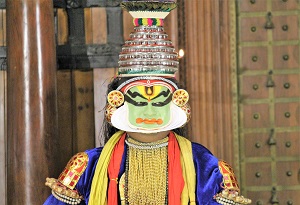
- Cherai Beach
- Jewish Synagogue
- Mattancherry Palace
- Santa Cruz Cathedral Basilica
- St. Francis Church
- Kovalam Beach
- Thiruvananthapuram
- Varkala Beach
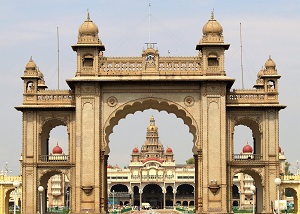
- Bandipur National Park
- Bull Temple
- ISKCON Temple
- Lal Bagh Gardens
- Tipu Sultan's Summer Palace
- Vidhan Soudha
- Chitradurga Fort
- Elephant Stables
- Hazara Rama Temple
- Kadalekalu Ganesha Statue
- Krishna Temple
- Ugra Narasimha Statue
- Lotus Mahal
- Mahanavami Dibba
- Queen''s Bath
- Sasivekalu Ganesha Statue
- Virupaksha Temple
- Vittala Temple
- Mysore Maharaja Palace
- Brindavan Garden
- Chamundi Hills
- Daria Daulat Bagh
- Ranganathaswamy Temple Srirangapatna
- Srirangapatna
- St. Philomena''s Church
- Nagarhole National Park
- Ranganathittu
- Shravanabelagola
.jpg)
- Basilica of Bom Jesus
- Calangute Beach
- Colva Beach
- Miramar Beach
- Se Cathedral Church
- St. Francis of Assisi Church
- Vagator Beach
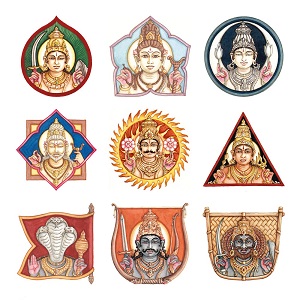
No Videos Available

You will be redirected to your dashboard shortly. We will also call you back in 24 hrs .
- Top 11 Places To Visit In Kumbakonam In 2024
23 Mar 2023
Kumbakonam is an exhilarating town nestled in the Thanjavur district. Famed as the City of Temples, Kumbakonam is an abode of enchanting temples. During the British Raj, Kumbakonam was called the Cambridge of South India as this city was the main centre of Hindu culture and European education. With a plethora of impressive tourist attractions, Kumbakonam makes for an incredible destination for an elating escape. Not only the places to visit in Kumbakonam will keep you busy the whole day but they will ecstatically please the inner travel enthusiast in you! Before leaving for your reviving vacay, check out this guide that’ll make everything super easy for you!
11 Best Places To Visit In Kumbakonam
The City of Temples has a lot to offer to all travellers and the best way to make the most of your vacation is by exploring all the best places to visit in Kumbakonam. Here is a list of the best ones that you must pay a visit to. Take a look!
1. Raja Raja Cholan’s Memorial
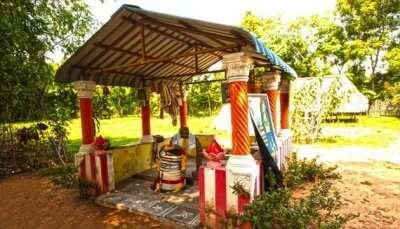
Image Credit: tamilnadutourism.com
Located in the quaint village of Udayalur in Kumbakonam, Raja Raja Cholan’s Memorial is dedicated to the great ruler of the Chola dynasty called the Raja Raja Chola I. This brave ruler expanded his territory till Sri Lanka and was a famous ruler. It is believed that Udayalur was the place where Raja Raja Chola peacefully rested in the end days of his life. Though the circumstances of his death are unknown, a memorial was built in Udayalur village under a tree to commemorate his death.
Location: Udayalur, Kumbakonam
Suggested Read: 50 Best Tourist Places In Tamil Nadu Ensuring The Most Awesome Vacay
2. Adi Kumbeswarar Temple
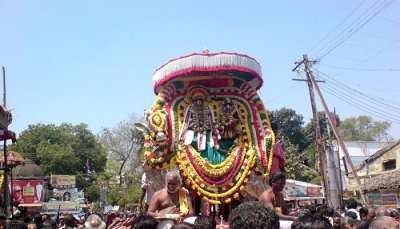
Image Credit: Ssriram mt for Wikimedia Commons
Kumbakonam is known as the Land of Temples and any visit to this town will be incomplete without exploring the most beautiful temple. Adi Kumbeswarar Temple is one of the most popular places to visit in Kumbakonam and was built while the Chola Dynasty ruled. The main deity worshipped in Adi Kumbeswarar Temple is Lord Shiva and you can spot a lot of pilgrims at this temple. A Lingam was made in the temple that represented Adi Kumbeswarar or Lord Shiva. This temple has an iconic structure and you can witness the mesmerizing lingam at the main shrine located in the center.
Location: Thanjavur Main Road, Kumbakonam, Tamil Nadu Main Deity: AdiKumbeswarar, Mangalambigai
3. Nageswaraswamy Temple
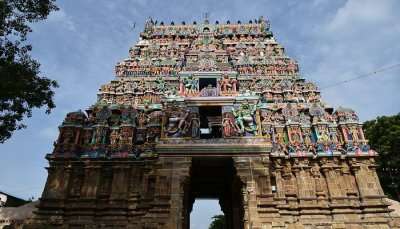
Image Credit: Richard Mortel for Wikimedia Commons
Considered as one of the prettiest places to visit in Kumbakonam , Nageswaraswamy Temple was constructed by Aditya Chola in the 9th century. Lord Shiva is worshipped in the form of Nageswaran in this temple. Nageswaraswamy Temple is a paragon of building technology, astronomy, and architecture style followed in the Chola Dynasty. This temple is one of the main Shiva temples in Kumbakonam where the Mahamaham festival is celebrated. To calm your body and mind, you should visit this temple in the morning and attend the morning prayer.
Address: : Nageswaran N St, Gandhi Adigal Salai, Valayapettai Agraharam, Kumbakonam, Tamil Nadu Deity: Nageswaran
Suggested Read: 7 Festivals Of Tamil Nadu That’ll Take You Close To The Traditions Of The State
4. Mahamaham Tank
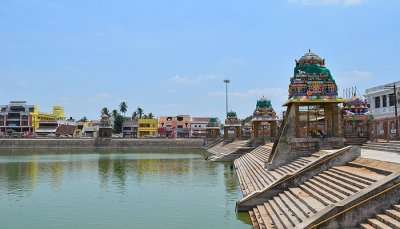
Image Credit: Shanze1 for Wikimedia Commons
Situated in the heart of Kumbakonam, Mahamaham Tank is the largest tank in Tamil Nadu. Being one of the most famous places to visit in Kumbakonam , Mahamaham tank attracts a lot of travelers every year. On the Masimaham festival, around 1 lakh tourists visit this tank. This festival is celebrated in a grand way at the Mahamaham Tank in Kumbakonam. Shaped as small springs, this tank has 21 wells and each of these wells is dedicated to a god or goddess. To attend the Masimaham festival you must visit this town in February or March. Kumbh Mela festival is another wonderful festival that is celebrated at this tank once in every 12 years.
Location: Kanmani Devi Nagar, Kumbakonam, Tamil Nadu Architectural Style: Dravidian
5. Kasi Viswanathar Temple
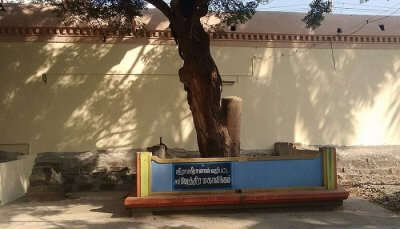
Image Credit: Wikimedia Commons
Kasi Viswanathar Temple is another ancient temple that deserves a spot on your list of places to see in Kumbakonam. Located on the banks of Mahamaham tank, the presiding deity in this temple is Lord Shiva and he is worshipped as Kasi Viswanathar. An idol of goddess Parvati or Visalakshi is also present at this temple. Kasi Viswanathar temple is locally known as Nava Kanniyar’ temple and is a serene place where you can meditate in the morning or evening. Attend the evening aarti, and meditate to replenish your soul.
Location: Lal Bahadur Sastri Rd, Anna Nagar, Kumbakonam, Tamil Nadu Deity: Kasi Viswanathar; Visalakshi
Suggested Read: Monsoon In Tamil Nadu: See The 8 Most Wonderful Places To Explore
6. Kumbakonam Town Hall
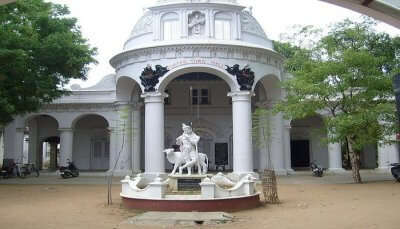
Image Credit: The EnforcerOffice for Wikimedia Commons
Kumbakonam Town Hall is located in the heart of the city. The town hall is an extremely ravishing white structure that will catch your attention by its charm. It is not a tourist attraction but one of the best places to see in Kumbakonam while you are taking a stroll around the city. As soon as you enter its premises you will see an idol of Lord Krishna in the centre and in the background is the impeccable white structure. Click pictures at the town hall for making your vacation memorable.
Location: Dr Besant Rd, Anna Nagar, Kumbakonam
7. Sarangapani Temple
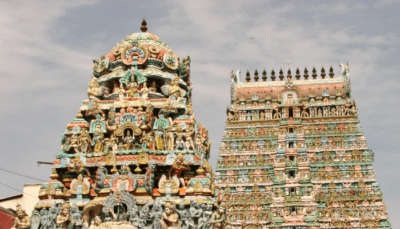
Sarangapani Temple in the Thanjavur locale of Tamil Nadu pays an ode to Lord Vishnu. This destination is just 2.4 km from the railroad station at Kumbakonam and you can take a cab or taxi or local transport to arrive at this temple from the station. This is considered as one of the 108 Divya Desams in the Hindu culture and the 12 holy people, otherwise called alwars, have sung many commendations of the sanctuary in their works. This place is also one of the key temples of Maha Vishnu in southern India.
Location: Valayapettai Agraharam, Kumbakonam, Tamil Nadu 612001
Suggested Read: 12 Honeymoon Places In Tamil Nadu For A Romantic Getaway
8. Arulmigu Chakrapani Swami Temple
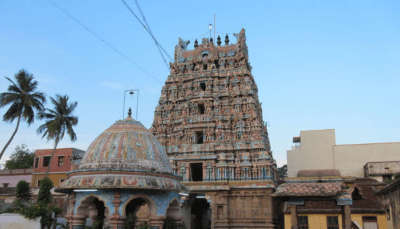
Located at a distance of 2 km from the Kumbakonam Railway Station, Chakrapani Temple is a Hindu temple where visitors can observe prayers dedicated to Vishnu situated in Kumbakonam.
Location: Chakrapani Sannathi Street, Kumbakonam, Tamil Nadu 612001
9. Airavatesvara Temple

This Hindu temple of Dravidian is situated in the town of Darasuram, close to Kumbakonam in Tamil Nadu. Constructed by Rajaraja Chola II in the twelfth century CE is a UNESCO World Heritage Site.
Location: Gurunathan Pillai Colony, Dharasuram, Kumbakonam, Tamil Nadu 612702
Suggested Read: 7 Airports In Tamil Nadu For An Awesome Flying Experience
10. Thenipuriswarar Temple

Thenupuriswarar Temple is an establishment that pays an ode to God Shiva situated and located near the town of Patteeswaram. While the primary deity that people worship in this temple is Patteeswarar or Thenupuriswarar, there are also ceremonies dedicated to Goddess Parvati or Palvalainayagi.
Location: W8FV+WW7, Patteeswaram, Tamil Nadu 612703
11. Swamimalai Murugan Temple

Swamimalai Murugan Temple is a Lord Murugan sanctuary in Swamimalai close to Kumbakonam. Nestled on the banks of a feeder of the Cauvery river stream, it is one of the Arupadaiveedu, one of the six principle habitations of Lord Murugan.
Location: 10, Vatampokki Street, Taluk, Swamimalai, Kumbakonam, Tamil Nadu 612302
How To Reach Kumbakonam
Take a look at the best ways that you can reach this town in Tamil Nadu for your next vacation. Choose the one that suits your budget and comfort level so that you enjoy the whole experience!
- By Air: The nearest airport to Kumbakonam is Tiruchirappalli International Airport. You can hire a taxi to the town from this airport and reach in around 2 hours.
- By Train: Kumbakonam railway station is connected to all the cities in Tamil Nadu and you can book a train and reach it easily.
- By Bus: The local bus stand is connected to all the major cities and if you prefer to travel on a bus then you can book your ticket to the Kumbakonam bus stand.
Suggested Read : Mahabalipuram In Tamil Nadu: Explore The Unique Culture Of Southern India
Best Time To Visit Kumbakonam
To explore the superb tourist places in Kumbakonam, you must plan your visit at the right season. The summers and monsoons are really hot and the best time to visit Kumbakonam is in the winter season. The weather in the winter season is pleasant and the nights are cooler. Plan your trip from November to March and get ready to experience bliss in Kumbakonam. The temperature during these months normally ranges between 20°C and 26°C.
An invigorating town in South India, Kumbakonam offers all solace seekers a chance to visit the stupendous temples where they can meditate and relax. Are you ready for a soul-satisfying vacation in Tamil Nadu ? Do check out this list of remarkable places to visit in Kumbakonam for making your escape an unforgettable experience. Carry your cameras to capture the beauty of this town and cherish the memories with your friends and family back at home!
For our editorial codes of conduct and copyright disclaimer, please click here .
Frequently Asked Questions About Kumbakonam
Which are the best hotels in Kumbakonam?
The best hotels in Kumbakonam where you can enjoy a relaxing stay are listed below! 1. Indeco Hotels Swamimalai 2. Kyriad Prestige 3. Hotel Riverside Resorts & Spa
Which are the most famous restaurants in Kumbakonam?
Some of the most popular restaurants where you can dine on your vacay are Sri Mangalambika Vilas, Mangalambiga Coffee and Tiffin Center, and Hotel Shanmuga.
Is Kumabakonam safe?
Kumbakonam is located in the Thanjavur district. and attracts a lot of travelers. Yes, it is a completely safe town for a vacation.
How many days are enough for exploring Kumbakonam properly?
To visit all the temples and other tourist attractions in Kumbakonam, you must plan your vacation for at least 3 to 4 days.
People Also Read:
Places To Visit In Belur Places To Visit In Sakleshpur Places To Visit In Karnataka
Recent Posts
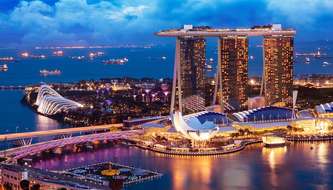
27 Lieux surréalistes pour faire de courts voyages depuis Singapour en 2024.
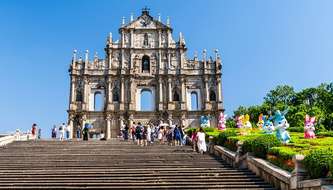
2024 में 32 दुनिया में सितंबर में घूमने की जगहें जो आपको एक शांत छुट्टी
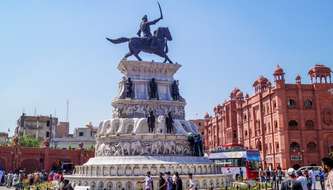
30 अप्रैल में भारत में घूमने की जगहें: इस गर्मी में एक प्रोफेशनल की तरह गर्मी को मात दें
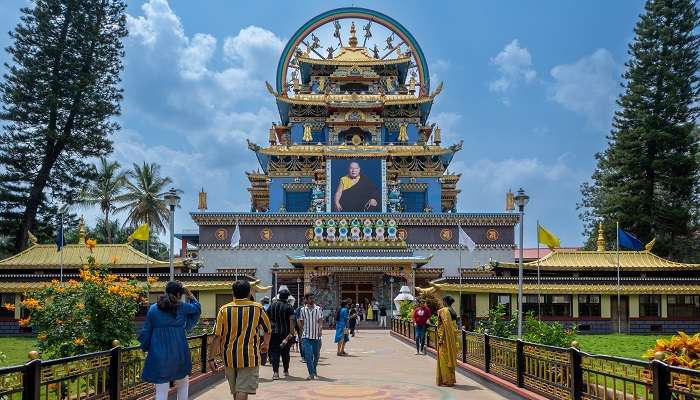
41 भारत में जून में घूमने की जगहें: 2024 गर्मी की छुट्टियाँ ठीक से हो गईं

2024 में आरामदायक छुट्टियों के लिए 35 भारत में मार्च में घूमने की जगहें
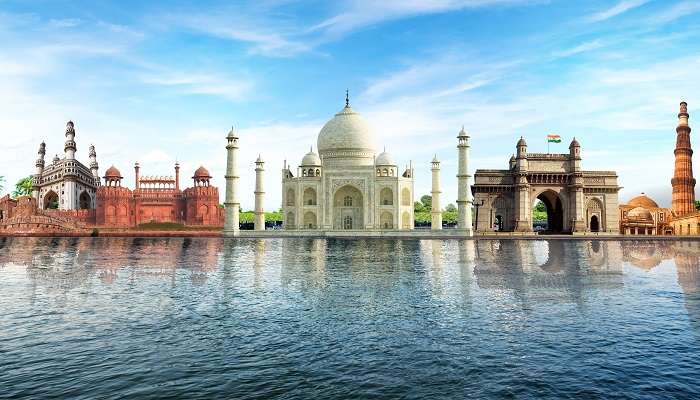
2024 में घूमने लायक 43 भारत के प्रसिद्ध ऐतिहासिक स्थान
Trending Blogs

20 Mysterious Places In India To Visit In 2023 More Bizarre Than The Bermuda Triangle

10 Scariest Roads In India That Are A Driver’s Nightmare

101 Places To Visit In India Before You Turn 30 in 2024

35 Exotic Places To Visit In December In India 2024 To Enjoy A Surreal Vacation

60 Best Honeymoon Destinations In India In 2024

95 Best Honeymoon Destinations In The World In 2023 For A Romantic Escape!
Best Places To Visit In India By Month
Best places to visit outside india by month.
- TravelTriangle
- Places To Visit »
- Tour Packages
- Honeymoon Packages
- Family Packages
- Budget Tour Packages
- Luxury Tour Packages
- Adventure Tour Packages
- Group Tour Packages
- Kerala Tour Packages
- Goa Tour Packages
- Andaman Tour Packages
- Sikkim Tour Packages
- Himachal Tour Packages
- Uttarakhand Tour Packages
- Rajasthan Tour Packages
- Tour Packages From Delhi
- Tour Packages From Mumbai
- Tour Packages From Bangalore
- Tour Packages From Chennai
- Tour Packages From Kolkata
- Tour Packages From Hyderabad
- Tour Packages From Ahmedabad
- Kerala Tourism
- Goa Tourism
- Sikkim Tourism
- Andaman Tourism
- Himachal Tourism
- Uttarakhand Tourism
- Rajasthan Tourism
- Hotels in Kerala
- Hotels in Goa
- Hotels in Sikkim
- Hotels in Andaman
- Hotels in Himachal
- Hotels in Uttarakhand
- Hotels in Rajasthan
20 Places to Visit in Kumbakonam

Kumbakonam, a bustling town in the southern Indian state of Tamil Nadu, is steeped in rich cultural and religious heritage. From ancient temples to serene water bodies, Kumbakonam and its surrounding areas offer a plethora of attractions for visitors to explore. Whether you’re a history enthusiast, a nature lover, or a spiritual seeker, there’s something for everyone in this historic region. Join me on a journey through 20 captivating places that showcase the beauty and diversity of Kumbakonam and its surroundings.
Darasuram Temple
This UNESCO World Heritage site is renowned for its stunning architecture and intricate carvings, making it a must-visit for history and art enthusiasts.
Airavatesvara Temple
Another architectural marvel, this temple is dedicated to Lord Shiva and features intricate sculptures and beautiful frescoes that showcase the artistic talents of the Chola dynasty.
Kumbeswarar Temple
As one of the oldest Shiva temples in Kumbakonam, Kumbeswarar Temple is a significant religious and historical site with a tranquil and spiritual ambiance.
Mahamaham Tank
This sacred tank is believed to contain water from 63 holy rivers and is the focal point of the Mahamaham festival, attracting thousands of pilgrims during the auspicious occasion.
Sarangapani Temple
Dedicated to Lord Vishnu, this temple is renowned for its impressive gopurams (towering gateways) and intricate sculptures, offering a glimpse into the region’s rich religious heritage.
Nageswaran Temple
With its impressive architecture and intricate artwork, Nageswaran Temple is a treasure trove of Dravidian art and a testament to the Chola dynasty’s patronage of the arts.
Adi Kumbeswarar Temple
This ancient temple dedicated to Lord Shiva is a popular pilgrimage site and is steeped in mythological significance, drawing devotees and history buffs alike.
Chakrapani Temple
Known for its spiritual significance, this temple dedicated to Lord Vishnu is revered for its architectural grandeur and is an oasis of peace and tranquility.
Ramaswamy Temple
This temple is dedicated to Lord Rama and is celebrated for its stunning architecture, vibrant annual festivals, and the serene atmosphere that envelops the sacred site.
Patteeswaram Temple
Home to the majestic Durga Temple, Patteeswaram is a hub of religious fervor and architectural splendor, offering a captivating experience for visitors.
Kasi Viswanathar Temple
With its sacred ambiance and captivating architecture, this temple dedicated to Lord Shiva is a cherished spiritual destination that never fails to leave a lasting impression.
Nachiyar Koil
Nestled amidst picturesque surroundings, this temple dedicated to Goddess Lakshmi is a tranquil retreat that captivates visitors with its serene ambiance and architectural beauty.
Thiruvalanchuzhi
This scenic village is home to the Swetaranyeswarar Temple, which is revered for its architectural brilliance and serene setting, attracting devotees and sightseers alike.
Swamimalai Temple
Known for its intricate sculptures and ancient inscriptions, this temple dedicated to Lord Muruga is a testament to the region’s rich cultural and religious heritage.
Srinivasa Ramanujan House
Delve into the life and legacy of the renowned mathematician Srinivasa Ramanujan by visiting his birth home, which offers insight into his early years and remarkable contributions to mathematics.
Thirubhuvanam
Explore the timeless beauty of the Kasi Viswanathar Temple, which boasts stunning architecture and intricate carvings that reflect the artistic prowess of the Chola dynasty.
Gangaikonda Cholapuram
Uncover the grandeur of this ancient town and pay homage to the Gangaikonda Cholesvara Temple, a masterpiece of Chola architecture and a testament to the empire’s cultural and artistic achievements.
Thirubuvanam Handloom Silk Sarees
Embrace the vibrant cultural heritage of Kumbakonam by exploring the intricate handloom silk sarees that are renowned for their craftsmanship and exquisite designs.
Thirumangalakudi
Immerse yourself in the spiritual aura of the Mahalingaswami Temple, a sacred site steeped in legend and adorned with beautiful sculptures and architectural marvels.
Thiruvidaimarudur Mahalingeswarar Temple
Conclude your exploration with a visit to this ancient temple dedicated to Lord Shiva, where you can admire the intricate architectural details and immerse yourself in the spiritual energy that permeates the tranquil surroundings.
As we conclude our exploration of the captivating places in and around Kumbakonam, it’s evident that this historic region offers a remarkable blend of cultural, religious, and architectural wonders. From the UNESCO World Heritage site of Darasuram Temple to the tranquil retreat of Nachiyar Koil, each location holds a special significance and reflects the rich heritage of Kumbakonam.
The intricate carvings, stunning architecture, and spiritual ambiance of the temples such as Kumbeswarar Temple, Sarangapani Temple, and Nageswaran Temple provide a glimpse into the region’s illustrious past and its enduring devotion to art and spirituality.
Additionally, the exploration of significant sites like the Mahamaham Tank, Gangaikonda Cholapuram, and the birth home of mathematician Srinivasa Ramanujan adds layers to our understanding of the cultural and historical tapestry woven across Kumbakonam and its surroundings.
Finally, the spiritual aura and timeless beauty of Thirubuvanam Handloom Silk Sarees, Mahalingaswami Temple in Thirumangalakudi, and the Thiruvidaimarudur Mahalingeswarar Temple offer a fitting conclusion to our journey, encapsulating the essence of tranquility, artistic brilliance, and spiritual energy that define Kumbakonam.
Whether you seek history, art, spirituality, or simply a peaceful retreat, Kumbakonam and its environs stand as a treasure trove of diverse experiences waiting to be explored. It’s a truly enriching destination for anyone eager to delve into the glorious tapestry of India’s cultural and religious heritage.
Find cheapest Pilgrimage Tour package, Book cheapest Temple tour packages
- https://templeyatri.in/destination/tamilnadu-temple/south-tamilnadu-tour-packages-from-chennai/
- https://templeyatri.in/destination/tamilnadu-temple/tamilnadu-tour-package/
- https://templeyatri.in/destination/kedarnath-travel-guide/kedarnath-tour-package/
- https://templeyatri.in/destination/chardham-travel-guide/10-days-chardham-tour-package-from-haridwar/
- https://templeyatri.in/destination/chardham-travel-guide/11-days-char-dham-tour-package-from-delhi/
- https://templeyatri.in/destination/chardham-travel-guide/char-dham-yatra-package-from-haridwar/
- https://templeyatri.in/destination/haridwar-travel-guide/haridwar-rishikesh-mussoorie-tour-package/
- https://templeyatri.in/destination/rameshwaram-temple/rameshwaram-kanyakumari-tour-package/
- https://templeyatri.in/destination/rameshwaram-temple/madurai-rameswaram-kanyakumari-kovalam-trivandrum-5-days-tour-package/
- https://templeyatri.in/destination/varanasi-travel-guide/2-days-kasi-yatra-tour-package/
- https://templeyatri.in/destination/vaishno-devi-travel-guide/vaishno-devi-patnitop-tour-package/
- https://templeyatri.in/destination/vaishno-devi-travel-guide/vaishno-devi-amritsar-tour-package/
- https://templeyatri.in/destination/ujjain-travel-guide/indore-ujjain-omkareshwar-tour-package/
- https://templeyatri.in/destination/omkareshwar-travel-guide/indore-ujjain-omkareshwar-maheshwar-mandu-tour-package/
- https://templeyatri.in/destination/somnath-temple-travel-guide/dwarka-porbandar-somnath-tour-package-from-ahmedabad/
- https://templeyatri.in/destination/tirupati-balaji-travel-guide/3-days-tirupati-vellore-tour-package-from-chennai/
- https://templeyatri.in/destination/tirupati-balaji-travel-guide/3-days-tirupati-tour-package/
- https://templeyatri.in/destination/varanasi-travel-guide/4-days-varanasi-prayagraj-ayodhaya-tour-package/
- https://templeyatri.in/destination/varanasi-travel-guide/prayagraj-varanasi-gaya-ayodhaya-tour-package/
- https://templeyatri.in/destination/somnath-temple-travel-guide/somnath-dwarka-sasan-gir-girnar-junagadh-gujarat-tour-package/
- https://templeyatri.in/destination/somnath-temple-travel-guide/somnath-dwarka-diu-sasan-gir-junagadh-gujarat-tour-package/
Send Your Enquiry

Explore My Ways
Life is all about journey

10 Most famous temples in Kumbakonam, You must visit
Kumbakonam is the religious town in Thanjavur district of Tamil Nadu, also known as temple town of South India . It is one of the most sacred place in South India, which hosts Mahamaham festival after every 12 year which attracts millions of people from across the globe.
As per Hindu mythology God Brahma had a Kumbha ( Pot) that contained seed of all living creatures of this Earth. That Kumbha have been displaced when universe got destroyed ( Pralaya) and finally it came to rest at the location of this very town. Due to this event, the town got its name Kumbakonam. Mahamaham festival is held every 12 years to celebrate this mythical episode.
Apart from its religious aspect, Kumbakonam is also a historically important town. Its history goes back to the Sangam period ( 3rd century BC to 3rd century AD) Several Empires ruled this region like Cholas, Pallavas, Pandyas, the Vijayanagar Empire, Madurai Nayaks, Thanjavur Nayaks and the Thanjavur Marathas. During 7th and 9th centuries this region was on its high time when it served as a capital of the Medieval Cholas.
During the British period this town emerge as a center of European education and Hindu culture. And it got another name “ Cambridge of South India “.
10 famous temple in Kumbakonam, the temple town of South India
Kumbakonam is mainly famous for its temples and Mathas (monasteries). The city has almost 188 Hindu temples. Apart from these, there are thousands small and big temples around the town, so the town also known as “Temple Town” and “City of temples”.
1) Adi Kumbeswarar Temple is the oldest Shaiva (the sect of the god Shiva) shrine in the town, believed to be constructed by the Cholas in the 7th century.
2) Kasi Viswanathar Temple – It is quite old and a big temple beside the Mahamaham tank. Here , you find various rivers in the form deities. It attract much crowed during Mahamaham festival.
These Shiva temples are mentioned in the Tevaram, a famous Tamil Shaiva canonical work of the 7th–8th century.
3) Patteeswaram- famous for the Sri Durgai Shrine and Sri Dhenupureeswarar Temple, 8 km away from Kumbakonam. Cholas brought the Goddess Durga idol to this place and built a separate shrine. The idol of Sri Durga has three eyes and eight hands. The idol stands over the body of Mahishasura , the famous demon king.
4) Thiruvidaimarudur Temple- It is one of the seven major Shiva temples. Here, Lord Shiva worshiped as Mahalingeswaraswamy and Parvati as Pirgu Chuntaragujambigai . It is a large temple with high Tower ( Gopurams ).
5) Sarangapani temple- is the largest Vaishnava (the sect of the god Vishnu) shrine present in Kumbakonam. The present structure of the temple having a twelve stories tower was constructed by Nayak kings in the 15th century. It is a colorful temple and looks to be drawn by chariot with beautifully carved huge elephants on either side.
It is one of the “ Divya Desams “, the 108 temples of Vishnu revered by the 12 Alvar saint-poets.
6) The Ramaswamy temple- which has scenes from the Hindu epic Ramayana depicted on its walls, was constructed by Govinda Dikshitar, the minister of successive Nayak rulers in 16 th century.
7) Chakrapani temple- one of the most prominent temples situated 3 km from Kumbakonam , It is a Hindu temple dedicated to Lord Vishnu situated on the southern bank of Cauvery River. Here, lord appears in the form of a Chakra .
8) Uppiliappan Temple- It is believed that Lord Uppiliappan is the elder brother of Lord Venkateswara of Tirupati and is equally benevolent and powerful. A must visit place in Kumbakonam
9) Darasuram Temple – An ancient Shiva Temple around 4 km from the center in Darasuram. Temple has beautifully carved out sculpture inside and on its outer wall. This is maintained by archaeological department of India.
10) Thenupuriswarar Temple at Patteeswaram, the Oppiliappan Kovil, the Swamimalai Murugan temple and the Airavateswarar temple at Darasuram are located in the vicinity of Kumbakonam.
11) Brahma Temple – very close to Ramaswamy temple, It is one of the rare temple of Lord Brahma. Here lord Brahma idol has four faces and the face which is facing back is a female face, you can request the temple priest to show the fourth face of Brahma in the mirror.
How to reach Kumbhakonam
It is located 40 km from Thanjavur and 273 km from Chennai.
Air: Trichy or the Tiruchirappalli is the nearest airport around 96 km from Kumbakonam and other nearest airport is at Pondicherry at a distance of 110 km. You can travel to Kumbakonam via regular buses or by cab.
Rail: Kumbakonam itself have railway station which have frequent trains from Bangalore, Chennai, Tiruchirapalli, and various other cities. Trains are a convenient and most economic mode of transport.
Road: Kumbakonam is well connected with nice road network. There are many bus service available to the nearby major cities like Chennai, Trichy. Taxi service also available everywhere.
Leave a Reply Cancel reply
Your email address will not be published. Required fields are marked *
Save my name, email, and website in this browser for the next time I comment.
- Search Site Index
- India Travel & Yatras
Guide to visiting Navagraha Temples from Kumbakonam
- By Sanjeev Nayyar
- [email protected]
- NayyarSanjeev
- 30303 views

Visit Chola Temples of Tanjore, Darasuram and Gangaikonda
- SHARADA Temple at TITWAL, Kashmir Valley
- Exploring the Enchanting Backwaters of Kumarakom Bird Sanctuary
- Trekking Tales from Annapurna Base Camp
- Kurukshetra is the Kashi We Do Not Talk About
- Yatra to Madurai, Chidambaram, Vrindavan, Kashi and Ayodhya
- CHADAR Trek, Ladakh was a dream
- Backwaters of Kerala Vembanad Lake
- Narmada Parikrama is a journey of the Spirit and River
- CHAR DHAM Yatra was DIVINE
- Buddhist Circuit Tourist Train was memorable
- Best BEACHES in Maharashtra
- Best Beaches in India
- Discovering ATER FORT in Bhind, the ravines of Chambal
- Long Weekends in 2024-Where to travel in India
- Aryans of Ladakh-Brokpa Community`s Jewellery, Headgear, and Dress
- Thrillophilia Sandakphu Trek Review
- What to SEE in UDUPI
- ROCK CARVINGS of Goa
- Top Resorts to Stay in Uttarakhand
- GANGA yatra from Kashi to the Bay of Bengal
- 8 Amazing Places to Visit in Asia
- Must See Places in Himachal Pradesh
- Drive to UMLINGLA the highest motorable road in the world Vlog
- Omkareshwar-the Divine Beyond Time and Space
- Narayan Ashram Yatra, Kumaon
- The Ghost town of KULDHARA near Jaisalmer
- VARANASI is a microcosm of Indian civilisation
- STARGAZING in Ladakh
- Ancient Jain temples between Mandu and Indore, Ujjain
- We had darshan at Mahakaleshwar Temple, Ujjain in ONE hour
- BEAT POLLUTION in DELHI, Travel to GWALIOR and ORCHHA
- Chambal RIVER SAFARI near Agra
- Seven days of Bliss and Harmony in Bhutan
- About BHIMBETKA Rock Shelters
- Places to see in and around Mandi, the Cultural Capital of Himachal Pradesh
- The Best of Sri Lanka in 12 Days
- A memorable trip to Shimla, Mandi, Dharamshala and Rishikesh
- The Best of Sikkim in 5 days
- Nine Days of Bliss in RURAL ODISHA- wetlands, jungles, beaches, tribals
- In search of a TIGER at Bandhavgarh National Park
- The Joys of flying Dubai to Mumbai
- About Chanderi Fort, Madhya Pradesh
- PACHMARHI places to visit-has natural beauty, caves and waterfalls
- Kashi, Ayodhya, Prayagraj Yatra-A lifetime experience to remember
- VELLIANGIRI Hills, Coimbatore is the Kailash of South India
- GANDIKOTA is the Grand Canyon of India
- The Biggest Travelling Fears and How To Overcome Them
- Aviation tourism
- KINNAUR KAILASH Yatra Vlog
- The Best of Spiti Valley and Kinnaur in 15 days
- AMARNATH-Following the Eternal Journey of Shiva
- Leopards of Satpura Tiger Reserve
- Om PARVAT and Adi KAILASH Yatra Vlog
- Forts of Karnataka
- Places to visit in ALWAR, Rajasthan
- Best Places to Eat in Kolkata
- Five Amazing Reasons to Write About Your Traveling
- Trek to Seven Lakes Dibang Valley, Arunachal Pradesh
- VARANASI - A Passage to Immortality
- Travel to Backwaters of Kerala and Kanyakumari
- Drive from Pune to Spiti Valley in Himachal Pradesh
- Kaleidoscope in the skies-South India
- SATOPANT TAL TREK-Between Life and Death
- Trek to Nijmola Valley Chamoli, Uttarakhand.
- Badami, Aihole and Pattadakal Temples are Chalukyan Masterpieces
- Chiplun in Konkan is green, has wildlife and a Parshuram Temple
- KASBA PETH Pune is a Walk through Culture and History
- Photography tour to Zanskar, Ladakh-8 days of bliss
- Light at the end of the Banihal Tunnel in Kashmir
- Drive LEH to ZANSKAR Valley, Ladakh
- Draupadi Kund and Bhimkutt in Drass, Ladakh
- Indian Architectural Travel Guide Udaipur- A Living Heritage Guide
- Lure of the NILGIRIS-Blue Mountains
- About TUNGNATH Temple-A Panch Kedar in Dev Bhoomi
- The Holy Town of Tiruvannamalai
- About Paleolithic India-LAKHUDIYAR CAVES Almora
- BANDIPUR National Park-The Wild and the Wonderful
- Nagerhole National Park - A Jewel in the crown of the Nilgiri Biosphere
- Majnu Ka Tilla, the TIBETAN Colony in Delhi is a Way of Life
- Conversations with Khasis in Shillong, Meghalaya
- Hoysala Temples beyond Belur, Halebidu and Somnathpur
- Wonder of the World ABHANERI Step-well Jaipur - under the moonlight
- PADHARO MHARO DESH, The land of Maharajas is calling you
- Khajuraho Temples a Journey from Real to Surreal
- How to plan your heritage travel in 2021
- TABO Monastery-Ajanta in the Himalayas
- Trek to Tarsar Marsar, Kashmir Valley
- Why is Varanasi a pilgrimage destination
- A Call to KEDARNATH
- Destinations to Touch the Spiritual Traditions of India
- Pilgrimage to Badrinath, Kedarnath and Badrinath in 1963
- All you wanted to know about ORCHHA, Madhya Pradesh.
- Royal Temples of Jammu
- Best Places to SHOP in LUCKNOW
- Things to do during a trip to Pondicherry
- Best things to eat in Lucknow during winter, Daawat- e-Sardi
- 7 Heritage Tourism Destinations You Will Love
- The Kailash Mansarovar Yatra is Sanatan, Eternal
- 5 Must See Places in India
- How to Make Your Visit to Statue of Unity Wholesome
- Seven interesting facts about Rajasthan
- Flying Delhi to San Francisco nonstop with Air India
- About RANAKPUR TEMPLE
- There is More to India than the Taj - EAST India
- There is More to India than the Taj - SOUTH India
- TEN must see places in Uttarakhand
- The Best of MARWAR in Ten days - Jodhpur, Bikaner, Jaisalmer, Barmer
- The Best of MALWA Madhya Pradesh in a Week
- Ten Offbeat Tourist Destinations in Himachal Pradesh
- All you wanted to know about HAMPI
- Ganga Sagar Pilgrimage
- There is MORE to India than the TAJ
- Brihadesvara Temple is an amazing temple must visit
- BrijMandal - Mathura, Gokul, Nandgaon
- BrijMandal is Krishna`s divine love land
- Five Ideas for every Traveller on how to Enjoy India
- Tamil Nadu Temples Tour Program
- Vedpuri of yesterday is now Puducherry
- Jagannath Puri Rath Yatra in Hindi
- Devbhoomi mein PANCHKEDAR in Hindi
- Kedarnath ki Yatra HINDI
- The Way To Araku Valley in Visakhapatnam is Through Nature
- DRIVING TO BHUTAN THE LAND OF GROSS NATIONAL HAPPINESS
- Narayan ka Adidham is Badrinath HINDI
- The SANCHI STUPA
- The Land of 7000 temples is Ayodhya
- There is more to Bihari food than LITTI CHOKHA
- Places to see in Odisha
- Indore is a great place for street food
- Mysore is a great place to visit, more so during Dussehra
- Sikkim Harmonious Himalayan Highland
- Wild Ass of Kutch
- Why does everyone love Varanasi
- BINNAGURI - Where Wild Elephants and Leopards roam free
- Places to see in Manipur
- Places to eat in Guwahati
- Varanasi - the place next to heaven
- Delhi ka Vegetarian Delights
- Places to Eat and Shop in Jaipur
- Best places to eat in Amritsar
- Vrindavan Yatra
- Trek to Pindhari/Kafni Glacier
- What to see in Udaipur and Mount Abu
- Sunderbans Reverie
- All about Khajuraho Temples
- Places to see in Jaipur
- Tips while cycling from Manali to Leh
- Char Dham Teerth - A Seeker`s Journey through the Himalayas and More
- The India-Cambodia connection
- What to see in Gwalior, Jhansi and Orchha
- Ujjain, Omkareshwar and Maheshwar Yatra
- Kashi and Prayag Yatra
- Places to see in Mcleodganj, Spiti Valley and Sangla
- Spiti Valley - A Hidden Paradise in Himachal Pradesh
- Hudh Mata & Tri-Sandhya - Visit to Brahma Peaks
- Domestic tourism may well be blessed by mangal and brihaspati this year
- The call of Kailash
- 5 Must Visit Pilgrimage Sites in Rajasthan
Pilgrimage to Mount Kailash
- Visit to Shanti Ashrama California
- Best Places to see in Tripura
- What to see in Jammu, Poonch and Kishtwar
- Best Places to see in Arunachal Pradesh
- Places to see in Kumaon
- Blend with the myriad colors of Indian culture and traditions onboard a luxury train
- Faces of Kutch
- The Beautiful City of Kanchipuram
- JAI MATA DI - MATA a visit to VAISHNO DEVI
- Maharashtra`s famous Ashtavinayaka Temples
- Indian Culture
- Indian Dance forms
- Traditional Textiles India
- Aatish Khanna
- Abhijit Sadhale
- Aditya Gairola
- Ajit Panicker
- Akanksha Damini Joshi
- Amit Ranjan Rai
- Anirudha Sathe
- Anjali Tiwari
- Ankur Gupta
- Anugrah Lakshmanan
- Aparna Sharma
- Ashley Halsey
- Bindu Krishnan
- Colonel JC Mahanti-Retired
- Dev Raj Agarwal
- Dr Mayank Gupta
- Dr Mira Adhikar
- Dr Priyaankaa Mathur
- Dr Sampadananda Mishra
- Dr Varuna Raina
- Gulzar Govewalla
- Harper Reid
- Heena Sharma
- Isha Priya Singh
- Jayavant Prabhu
- Kamlesh Tripathi
- Kaushik Ganguli
- Kavitha Reddy
- Koushik Roy
- Lalit Mohan Kothiyal
- Lavina Melwani
- Lena Attwood
- Madeline Miller
- Mitrajit Deb
- Monidipa Bose Dey
- Namrata Wakhloo
- Natasha Israni
- Navtej Singh
- Nayan Marphatia
- Neeraj Jain
- Niket Vaidya
- Nilanjan Ray
- Nitin Kotak
- Parmananda Chowdhury
- PK Narayanan
- Pooja Bhatia
- Pradeep Parihar
- Pratima Joshi
- Rajesh Sahay
- Rajiv Malik
- Ravi Venkateshwar
- Rishi Agrawal
- Rishi Kamra
- Rishikesh Joshi
- Rohit Agarwal
- Rohit Pathania
- Sandeep Godbole
- Sanjeev Nayyar
- Sanjeev Nayyar & Aparna Sharma
- Shalini Asha Bhaloo
- Sheena Gandhi
- Shirin Mehrotra
- Siddharth Shetty
- Snehal Shah
- Sunny Deval
- Swami Damodarananda
- Swami Smarananda
- Swami Varishthananda
- Trishna Patnaik
- Twinkle Garg
- Vandna Dubey
- Venkatadri Ranganathan
- Vimla Patil
- Well Wisher

We stayed at Dhanam Lodge at Kumbakonam. They were nice enough to give us a flier which showed all the temples that one could visit from Kumbakonam, including the Navagraha Sthalas. That is what you will see in the PDF file. Credit and Copyright of this document lies with Dhanam Lodge.
Theirs is a simple, good and clean hotel. We paid Rs 700/ for a double room in January 2016. They have A/c, Non A/c, 2/3/4 bed rooms. Their numbers are 0435 –2423864, 91 94437 31864.
Distances you cannot see in file are Swaminatha Swami 6kms, Durgai with Eight Hands 7 kms, Kalyana Sundareshwarar 35 kms, Stone Garuda Bagavan 10 kms.
To read in PDF format
To see pictures of Navagraha Temples Click here
To see a 21 minute video covering all Navagraha Temples Click here
- Navagraha Temples Tamil Nadu
Latest from eSamskriti
Suryavamshi-the sun kings of rajasthan, ya devi sarva bhuteshu, mystery of netaji subhash chandra bose`s death, karma and intent-the hidden connection, wall paintings of kashi, dev deepavali varanasi, corbett national park beyond tigers, tigers of corbett national park, gangaur festival jaipur, milkyway timelapse at tabo, spiti valley.
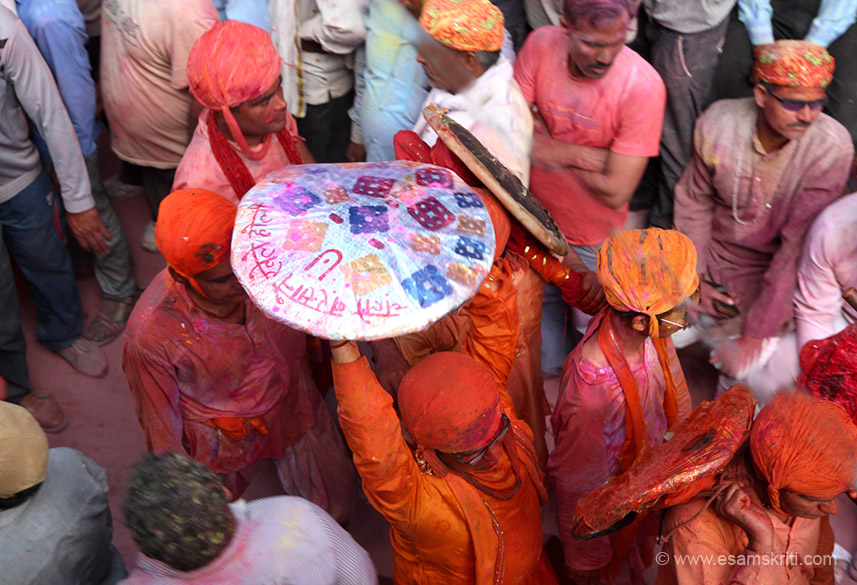
Cross Cultural Training India
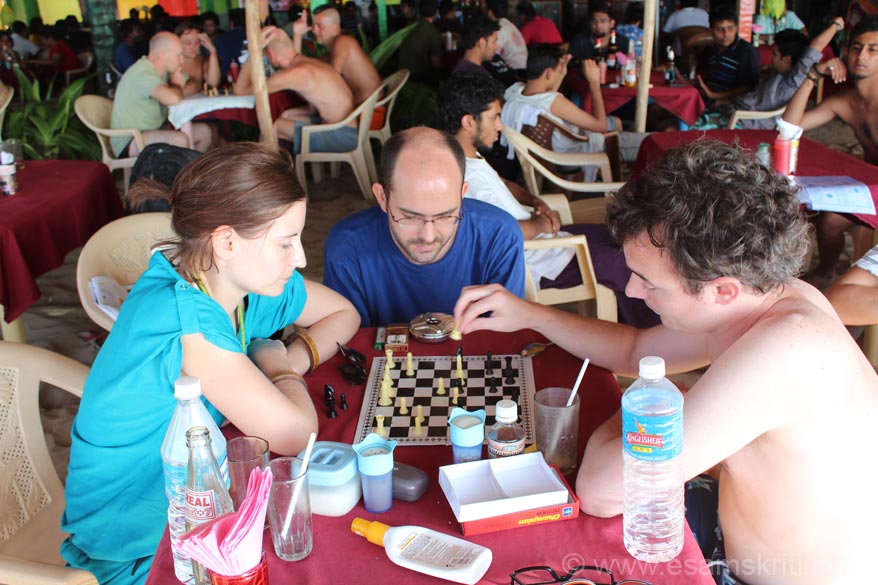
Related Links
About elephanta caves, shivratri in mandi, himachal pradesh, siva`s infinite column of fire-jwala linga, basavanna & vir shaivism lingayat movement, kedarnath-wrath of the devas.

About eSamskriti
- Why and How
- Sanjeev's Message
- Expressing Gratitude
Useful Links
- Plagiarism Policy
- Pictures Policy
- Terms of Use
- Buy pictures
To Contribute
- Photographs
- Indian Army Welfare Fund
- Spirituality
- National Affairs
- Special Sections
- Outside India
Stay Connected
Please type your specific search or go through our recommended links
- Bhagawad Gita
- Temples of India
- Education India
- Janmasthami & Krishna
- Durga Puja, Dussehra & Diwali
- Swami Vivekananda
- Commentary on Upanishads
- Yoga Asanas and Therapy
- Dr Babasaheb Ambedkar
- Indian Women
- Karma and Reincarnation
- Ganesha & Ganesh Chaturthi
- Shivaratri and Shiva
- Who is a Minority
- India Japan Ties
Interested in our Newsletter?
Please enter password to view this album.
Viaggio in Islanda

- Arts & Crafts

- Suriyan (Sun)
- Chandran (Moon)
- Angarahan (Mars)
- Budhan (Mercury)
- Guru (Jupiter)
- Sukran (Venus)
- Saneeswaran (Saturn)
- Visit all Navagraha Temples in a Day
- Vaishnava Navagraha Temples

Kumbakonam Temples - 4 Things to Know Before Visiting
Hindu Temples
Notable Architectures
Things to know
About kumbakonam temples.
- Activities and tours near by
- Attractions near by
- Discover More Attractions in Thanjavur
- Location and Map
Kumbhakonam is one of the ancient temple towns of Tamilnadu, flanked by the two rivers Cauvery and Arasalar. The grandeur of Tamil Nadu can be seen in the marvelous architectures and temples here. Many of the religious sites in Kumbakonam are dedicated to Lord Vishnu and Lord Shiva. There are around 188 sites in Kumbakonam.
Add your visit
Hotels near Kumbakonam Temples
Hotels to stay near Kumbakonam Temples
SET Residency

Guest rating:
Quality Inn VIHA

Vinayaga by Poppys, Kumbakonam

View all hotels
Activities Around
Attractions near kumbakonam temples.
Shri Airavatesvara Temple
2.89km from kumbakonam temples.
This is a Hindu temple of Dravidian architecture and also this is a UNESCO world heritage site.
Elakurichi shrine
23.71km from kumbakonam temples.
Called as Adaikalamatha shrine. This is a catholic pilgrimage center dedicated to the Virgin Mary.
Tirumeeyachur Mehanadhar Temple
29.01km from kumbakonam temples.
Sri Meganadha Swamy is a Hindu temple located at Thirumeeyachur in Tiruvarur district, Tamil Nadu, India. The presiding deity is Shiva. He is called as Meganathaswami. His consort is known as Lalithambika. It is one of the shrines of the 275 Paadal Petra Sthalams – Shiva Sthalams glorified in the early medieval Tevaram poems by Tamil Saivite Nayanar Tirugnanasambandar. Lord Siva is Swayambumurthy in the temple.
Ponneri Lake
29.56km from kumbakonam temples.
Ponneri lake is a huge lake located in the district of Ariyalur. This is the main source of water in this area. Here we can see so many birds and animals wandering here.
Saraswathi Mahal Library
32.4km from kumbakonam temples.
Saraswathi Mahal Library or Tanjore Maharaja Serfoji's Saraswathi Mahal Library is located in Thanjavur (Tanjore), Tamil Nadu, India. It is one of the oldest libraries in Asia, and has on display a rare collection of Palm leaf manuscripts and paper written in Tamil, Hindi, Telugu, Marathi, English and a few other languages indigenous to India.
Maratha Palace
32.49km from kumbakonam temples.
The Thanjavur Maratha Palace Complex, known locally as Aranmanai, is the official residence of the Bhonsle family who ruled over the Tanjore region from 1674 to 1855.
Discover more attractions near by
Discover More Attractions in Thanjavur , Home of Kumbakonam Temples
6 attractions
Major rice producing district of Tamil Nadu Hence it is also named as Rice Bowl of Tamil Nadu. Because the strong fertile region lies in the Kaveri river delta.
Location of Kumbakonam Temples
For more information about Kumbakonam Temples , visit: https://en.wikipedia.org/wiki/Hindu_temples_of_Kumbakonam
To view all hotels near Kumbakonam Temples , visit: Hotels near Kumbakonam Temples
Thirunallar Temple
🗓 Best Time To Visit: October to March
⏰ Open Hours: 5:00 AM to 12:00 PM and 4:00 PM to 9:00 PM
🏞 Things To Do: Visit the temple, Attend religious ceremonies, Explore the temple architecture
💰 Budget: No entry fees, donations are accepted
🧳 Traveller Types: Spiritual seekers, History enthusiasts, Architecture lovers
📜 Known For: The only temple dedicated to Lord Saturn (Shani), Unique seven walls structure representing the seven planetary deities
🚉 Distances: 5km from Karaikal Railway Station, 130km from Trichy International Airport, 6km from Karaikal town
📿 Dress Code: Conservative attire, avoid shorts and sleeveless tops
🚗 Parking: Free parking available
♿ Accessibility: Wheelchair access available
📸 Photography: Allowed in the outer precincts of the temple, not inside the sanctum
Have you ever wondered what it would be like to visit a temple that can change your destiny? A temple that can free you from the negative effects of the most feared planet in astrology? A temple that can bless you with peace, prosperity, and happiness?
If you answered yes to any of these questions, then you should definitely visit the Thirunallar Temple , also known as the Dharbaranyeswarar Temple or the Saneeswaran Temple , one of the nine navagraha temples dedicated to Lord Shani (Saturn) in Tamil Nadu.
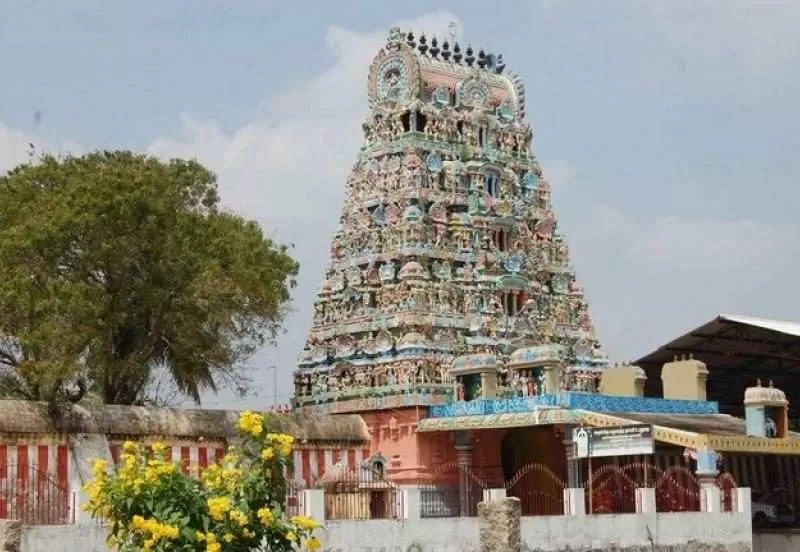
The Thirunallar Temple is not just a place of worship, but a place of transformation. It is believed that anyone who visits this temple and performs the rituals can overcome the hardships and obstacles caused by the planet Saturn, and attain success and fulfillment in life.
But that’s not all. The Thirunallar Temple is also a place of history, culture, and beauty. It is one of the oldest and most revered temples in India, dating back to the Chola period. It is also one of the most magnificent and splendid temples in Tamil Nadu, with a stunning architecture and a serene atmosphere.
In this article, we will tell you everything you need to know about the Thirunallar Temple, from its history and significance to its architecture and festivals, and help you plan your visit with our comprehensive guide. Whether you are a devotee, a traveler, or a curious soul, you will find something interesting and useful in this article.
So, without further ado, let’s begin our journey to the Thirunallar Temple, the navagraha temple of Lord Shani.
History of the Temple
The Thirunallar Temple has a rich and fascinating history that spans over several centuries and legends. The most famous legend associated with the temple is that of King Nala, who was a righteous and virtuous ruler, but was afflicted by the malefic effects of Saturn for 12 years. He lost his kingdom, his wealth, his wife, and his children, and wandered around the world in misery and despair.
One day, he reached the Thirunallar Temple, where he took a dip in the sacred tank called the Nala Theertham. As soon as he came out of the water, he was relieved of his afflictions and regained his original form. He then prayed to Lord Shiva, who is the main deity of the temple, and Lord Shani, who is the presiding deity of the temple. Lord Shani appeared before him and apologized for his sufferings, and blessed him with prosperity and happiness. He also granted him a boon that anyone who visits the Thirunallar Temple and takes a bath in the Nala Theertham will be freed from the negative effects of Saturn.
Another legend associated with the temple is that of Tirugnana Sambandar, a Saivite saint who lived in the 7th century CE. He visited the Thirunallar Temple and composed hymns in praise of Lord Shiva, who is also known as Dharbaranyeswarar, meaning the Lord of the Dharba forest. The name refers to the fact that the temple was originally located in a forest of Dharba grass, which is considered sacred and auspicious in Hinduism. The Dharba grass is also used to cover the Shiva Lingam in the temple, which is believed to have miraculous powers.
The Thirunallar Temple is also a place of historical and cultural significance, as it was patronized by the Chola dynasty, one of the most powerful and influential empires in South India. The temple has many inscriptions and sculptures that attest to the glory and generosity of the Chola kings, who donated land, gold, jewels, and other gifts to the temple. The temple also has a rich contribution to the Tamil literature and art, as it is one of the 275 Paadal Petra Sthalams, meaning the temples that are revered in the Thevaram, a collection of devotional poems by the Saivite saints.
The Thirunallar Temple is also a place of social and religious importance, as it attracts millions of devotees and pilgrims every year, especially during the Sani Peyarchi, which is the transit of Saturn from one zodiac sign to another. This event occurs once in two and a half years, and is considered to be very auspicious and significant for the devotees of Lord Shani. People from all walks of life and from all parts of the world flock to the Thirunallar Temple to seek the blessings of Lord Shani and Lord Shiva, and to experience the divine grace and power of the temple.
Architecture of the Temple
The Thirunallar Temple is a marvel of architecture and beauty, with a blend of ancient and modern styles. The temple covers an area of about 15 acres , and has three concentric walls and three gopurams (towers). The main entrance of the temple is through the eastern gopuram, which is a five-tiered structure with intricate carvings and sculptures of various deities and mythical creatures.
As you enter the temple, you will see a vast mandapam (hall) with 16 pillars, each adorned with a statue of a Nayanmar, a Saivite saint. The mandapam leads to the sanctum sanctorum of Lord Shiva, who is worshipped as Dharbaranyeswarar. The Shiva Lingam in the sanctum is covered with Dharba grass, and is said to be self-manifested. The sanctum also has a golden image of Lord Ganesha, who is known as the Siddhi Vinayaka, meaning the giver of success.
To the right of the sanctum, you will find the shrine of Lord Shani, who is worshipped as Saneeswaran. The idol of Lord Shani is made of black stone, and is about 5 feet tall. He is depicted as a dark and fierce figure, holding a sword, an arrow, and two daggers in his hands, and riding a buffalo. He is also surrounded by his two consorts, Neela Devi and Manda Devi, and his two sons, Maandhi and Kuligan. The shrine of Lord Shani is the most visited and crowded part of the temple, as devotees offer oil, black cloth, black sesame seeds, and black gram to him, and pray for his mercy and benevolence.
To the left of the sanctum, you will find the shrine of Goddess Parvati, who is worshipped as Pranambikai, meaning the giver of life. She is depicted as a beautiful and graceful figure, holding a lotus and a parrot in her hands, and sitting on a lotus throne. She is also the consort of Lord Shiva, and the mother of Lord Ganesha and Lord Murugan.
The temple complex also has many other shrines and deities, such as Lord Murugan, Lord Ganesha, Lord Vishnu, Lord Brahma, Lord Dakshinamurthy, Lord Chandikeswarar, Lord Bhairava, Lord Nataraja, Lord Subramanya, Lord Ayyappa, and Lord Rama. Each of these shrines has its own significance and charm, and is worth a visit.
Poojas and Rituals
The Thirunallar Temple is a place of poojas and rituals, where devotees perform various offerings and ceremonies to please and propitiate the deities, especially Lord Shani and Lord Shiva. The temple follows the Saivite tradition of worship, and has six daily poojas, namely the Ushathkalam, the Kalasanthi, the Uchikalam, the Sayarakshai, the Irandamkalam, and the Ardha Jamam.
Apart from these daily poojas, the temple also has many special poojas and rituals that are performed on specific days and occasions, such as the Sani Peyarchi, the Sani Archana, the Sani Homam, the Sani Abhishekam, etc. These poojas and rituals are believed to have various benefits and blessings for the devotees, such as the removal of obstacles, the protection from evil, the fulfillment of desires, the cure of diseases, the attainment of wealth, the improvement of career, the enhancement of marriage, the birth of children, etc.
The most important and popular pooja that is performed at the temple is the Sani Peyarchi, which is the transit of Saturn from one zodiac sign to another. This event occurs once in two and a half years, and is considered to be very auspicious and significant for the devotees of Lord Shani. People from all walks of life and from all parts of the world flock to the Thirunallar Temple to seek the blessings of Lord Shani and Lord Shiva, and to experience the divine grace and power of the temple.
The Sani Peyarchi pooja is performed on the day of the transit, which is usually in the month of December or January. The pooja involves the following steps:
- The devotees take a bath in the Nala Theertham, and wear black clothes, which are the favorite color of Lord Shani.
- The devotees offer oil, black cloth, black sesame seeds, and black gram to Lord Shani, and light a lamp in front of his shrine.
- The devotees chant the mantra “Om Sanischaraya Namah” 108 times, and recite the Shani Gayatri and the Shani Ashtottara Shatanamavali, which are the hymns and the names of Lord Shani.
- The devotees perform the Sani Archana, which is the offering of flowers and fruits to Lord Shani, and receive his prasadam.
- The devotees perform the Sani Homam, which is the fire sacrifice to Lord Shani, and receive his blessings.
- The devotees perform the Sani Abhishekam, which is the bathing of the idol of Lord Shani with milk, curd, honey, and other liquids, and receive his grace.
The Sani Peyarchi pooja is believed to have various benefits and blessings for the devotees, such as the removal of the negative effects of Saturn, the enhancement of the positive effects of Saturn, the protection from the Sade Sati (the seven and a half year period of Saturn’s influence), the prevention of the Ashtama Sani (the eighth house transit of Saturn), the alleviation of the Kantaka Sani (the fourth house transit of Saturn), the improvement of the Dasa Bhukti (the planetary periods and sub-periods), the resolution of the karmic issues, the attainment of peace, prosperity, and happiness, etc.
The Sani Peyarchi pooja is one of the most sought-after and crowded poojas at the Thirunallar Temple, and requires prior booking and registration. The devotees can book the pooja online through the official website of the temple, or through the authorized agents and service providers. The devotees can also participate in the pooja remotely, by sending their name, birth details, and payment to the temple, and receiving the prasadam by post.
The Sani Peyarchi pooja is a unique and powerful pooja that can transform your life and destiny. If you want to experience the miracle of the Thirunallar Temple, you should definitely visit the temple during the Sani Peyarchi, and perform the pooja with faith and devotion. You will surely feel the difference and witness the change in your life.
Festivals and Events
The Thirunallar Temple is a place of festivals and events, where devotees celebrate various occasions and seasons with joy and devotion. The temple observes many festivals and events throughout the year, such as the Adi Pooram, the Vinayaka Chaturthi, the Navaratri, the Sani Peyarchi, the Thai Poosam, the Maha Shivaratri, etc. Each of these festivals and events has its own significance and charm, and is worth witnessing and participating in.
The Adi Pooram is a festival that is celebrated in the month of July or August, and is dedicated to Goddess Parvati, who is worshipped as Pranambikai at the temple. The festival commemorates the day when Goddess Parvati married Lord Shiva, and is celebrated with great pomp and fervor. The highlight of the festival is the procession of the utsava murtis (the festival idols) of Lord Shiva and Goddess Parvati, along with the Nayanmars, around the temple. The devotees also offer special poojas and abhishekams to the deities, and receive their blessings.
The Vinayaka Chaturthi is a festival that is celebrated in the month of August or September, and is dedicated to Lord Ganesha, who is worshipped as Siddhi Vinayaka at the temple. The festival celebrates the birthday of Lord Ganesha, and is celebrated with great devotion and enthusiasm. The highlight of the festival is the installation and worship of the clay idols of Lord Ganesha, which are later immersed in the Nala Theertham. The devotees also offer modakas (sweet dumplings) and other delicacies to Lord Ganesha, and receive his prasadam.
The Navaratri is a festival that is celebrated in the month of September or October, and is dedicated to the nine forms of Goddess Parvati, who is worshipped as Pranambikai at the temple. The festival celebrates the victory of good over evil, and is celebrated with great splendor and grandeur. The highlight of the festival is the decoration and worship of the nine kolu (steps) with dolls and figurines of various deities, saints, and kings. The devotees also offer various poojas and abhishekams to the Goddess, and receive her grace.
The Sani Peyarchi is the most important and popular event that is celebrated at the temple, and is dedicated to Lord Shani, who is worshipped as Saneeswaran at the temple. The event occurs once in two and a half years, and is the transit of Saturn from one zodiac sign to another. The event is considered to be very auspicious and significant for the devotees of Lord Shani, and is celebrated with great fervor and faith. The highlight of the event is the Sani Peyarchi pooja, which is performed by thousands of devotees to seek the blessings of Lord Shani and Lord Shiva. The devotees also offer oil, black cloth, black sesame seeds, and black gram to Lord Shani, and receive his prasadam.
The Thai Poosam is a festival that is celebrated in the month of January or February, and is dedicated to Lord Murugan, who is worshipped as Subramanya at the temple. The festival celebrates the day when Lord Murugan received the Vel (spear) from his mother Goddess Parvati, and is celebrated with great zeal and zest. The highlight of the festival is the kavadi (a wooden or metal frame decorated with flowers and peacock feathers) procession, where the devotees carry the kavadi on their shoulders and pierce their body with hooks and needles as a form of penance and devotion. The devotees also offer milk, honey, and fruits to Lord Murugan, and receive his prasadam.
The Maha Shivaratri is a festival that is celebrated in the month of February or March, and is dedicated to Lord Shiva, who is worshipped as Dharbaranyeswarar at the temple. The festival celebrates the day when Lord Shiva performed the cosmic dance of creation, preservation, and destruction, and is celebrated with great reverence and respect. The highlight of the festival is the four praharas (night watches), where the devotees stay awake and perform the four abhishekams (bathing) to Lord Shiva with milk, curd, honey, and ghee. The devotees also chant the mantra “Om Namah Shivaya” and recite the Shiva Purana, and receive his prasadam.
These are some of the major festivals and events that are celebrated at the Thirunallar Temple, but there are many more that are celebrated throughout the year, such as the Pradosham, the Amavasya, the Pournami, the Karthigai, the Arudra Darisanam, the Panguni Uthiram , etc. Each of these festivals and events has its own beauty and charm, and is worth experiencing and enjoying.
How to Reach the Temple
The Thirunallar Temple is located in the town of Thirunallar, which is a part of the Karaikal district of the union territory of Puducherry. The temple is easily accessible by road, rail, and air, as it is well-connected to the major cities and towns of Tamil Nadu and Puducherry. Here are the details of how to reach the temple by different modes of transport:
By Road: The Thirunallar Temple is about 5 km from the Karaikal town, and can be reached by bus, taxi, or auto-rickshaw. There are frequent buses from Karaikal to Thirunallar, which take about 15 minutes to reach the temple. The bus fare is about Rs. 10 per person. Alternatively, you can hire a taxi or an auto-rickshaw from Karaikal, which will cost you about Rs. 100 to Rs. 200, depending on the distance and the bargaining skills.
By Rail: The nearest railway station to the Thirunallar Temple is the Karaikal Railway Station, which is about 6 km from the temple. The Karaikal Railway Station is well-connected to the major railway stations of Tamil Nadu and Puducherry, such as Chennai, Tiruchirappalli, Thanjavur, Nagapattinam, Puducherry, etc. There are regular trains from these stations to Karaikal, which take about 4 to 6 hours to reach the station. The train fare varies from Rs. 100 to Rs. 500, depending on the class and the availability of seats. From the Karaikal Railway Station, you can take a bus, a taxi, or an auto-rickshaw to the temple, as mentioned above.
By Air: The nearest airport to the Thirunallar Temple is the Puducherry Airport , which is about 135 km from the temple. The Puducherry Airport is connected to the major airports of India, such as Delhi, Mumbai, Bengaluru, Hyderabad, etc. There are daily flights from these airports to Puducherry, which take about 2 to 3 hours to reach the airport. The flight fare ranges from Rs. 3000 to Rs. 10000, depending on the airline and the booking time. From the Puducherry Airport, you can take a bus, a taxi, or an auto-rickshaw to the temple, as mentioned above.
The Thirunallar Temple is a place that is worth visiting, not only for its religious and spiritual significance, but also for its historical and cultural value. The temple is a place that can enrich your mind, body, and soul, and can give you a memorable and meaningful experience. If you want to visit the Thirunallar Temple, you can choose any of the above modes of transport, and plan your trip accordingly. You will surely have a wonderful and rewarding time at the temple.
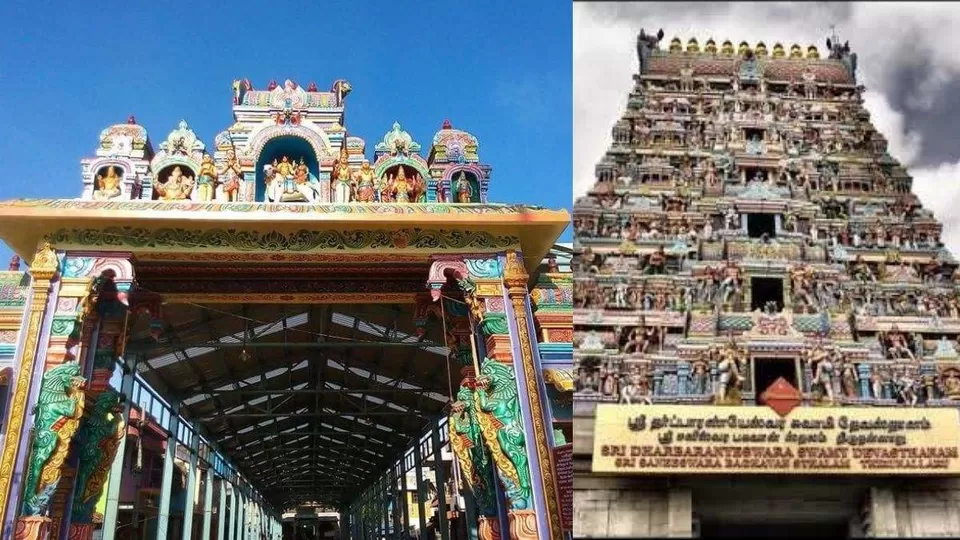
Where to Stay and Eat
The Thirunallar Temple is a place that can be visited in a day, but if you want to spend more time and explore the temple and its surroundings, you can also stay overnight and enjoy the hospitality and cuisine of the region. There are many options for accommodation and food near the temple, ranging from budget to luxury, and from traditional to modern. Here are some of the best places to stay and eat near the Thirunallar Temple:
Hotel Mantra Veppathur: This is a luxury resort that is located about 20 km from the temple, and offers a serene and scenic environment for the guests. The resort has spacious and elegant cottages, with all the modern amenities and facilities. The resort also has a swimming pool, a spa, a yoga center, a library, and a restaurant. The restaurant serves delicious and authentic Chettinad cuisine, along with continental and Chinese dishes. The resort also arranges for sightseeing and temple visits for the guests. The price range of the resort is from Rs. 5000 to Rs. 10000 per night , depending on the season and the availability of rooms.
Hotel R.R. Residency: This is a budget hotel that is located about 2 km from the temple, and offers a comfortable and convenient stay for the guests. The hotel has clean and cozy rooms, with basic amenities and facilities. The hotel also has a 24-hour front desk, a travel desk, a parking space, and a restaurant. The restaurant serves tasty and hygienic vegetarian and non-vegetarian food, along with coffee and snacks. The hotel also provides free shuttle service to the temple for the guests. The price range of the hotel is from Rs. 1000 to Rs. 2000 per night , depending on the season and the availability of rooms.
Hotel Mookambigai Residency: This is a mid-range hotel that is located about 3 km from the temple, and offers a pleasant and peaceful stay for the guests. The hotel has well-furnished and air-conditioned rooms, with all the necessary amenities and facilities. The hotel also has a conference hall, a banquet hall, a garden, and a restaurant. The restaurant serves mouth-watering and varied cuisine, such as South Indian, North Indian, Chinese, and Continental. The hotel also organizes cultural programs and events for the guests. The price range of the hotel is from Rs. 2000 to Rs. 5000 per night, depending on the season and the availability of rooms.
These are some of the best places to stay near the Thirunallar Temple, but there are many more options available, such as lodges, guest houses, homestays, etc. You can choose any of these options according to your preference and budget, and enjoy a comfortable and memorable stay at the temple.
As for the food, the Thirunallar Temple is a place that offers a variety of cuisines and delicacies for the visitors, ranging from traditional to modern, and from vegetarian to non-vegetarian. Here are some of the best places to eat near the Thirunallar Temple:
Karaikal Ammaiyar Mess: This is a popular and famous eatery that is located near the Karaikal Ammaiyar Temple, which is about 5 km from the Thirunallar Temple. The eatery serves lip-smacking and authentic Karaikal cuisine, such as the Karaikal halwa, the Karaikal biryani, the Karaikal fish curry, the Karaikal parotta, etc. The eatery is also known for its friendly and courteous service, and its reasonable and affordable prices. The eatery is open from 7:00 AM to 10:00 PM, and the average cost for two people is about Rs. 300.
Hotel Saravana Bhavan: This is a well-known and reputed chain of restaurants that is located near the Thirunallar Bus Stand, which is about 1 km from the temple. The restaurant serves delicious and hygienic vegetarian food, such as idli, dosa, vada, pongal, sambar, chutney, etc. The restaurant is also famous for its filter coffee, which is a must-try for the visitors. The restaurant is open from 6:00 AM to 11:00 PM, and the average cost for two people is about Rs. 200.
Hotel Annapoorna: This is a decent and cozy restaurant that is located near the Thirunallar Railway Station, which is about 2 km from the temple. The restaurant serves tasty and varied non-vegetarian food, such as chicken, mutton, fish, prawns, etc. The restaurant also serves South Indian, North Indian, Chinese, and Continental dishes, along with desserts and beverages. The restaurant is open from 11:00 AM to 11:00 PM, and the average cost for two people is about Rs. 500.
These are some of the best places to eat near the Thirunallar Temple, but there are many more options available, such as street food, fast food, cafes, etc. You can choose any of these options according to your taste and appetite, and enjoy a satisfying and delightful meal at the temple.
Nearby Attractions
The Thirunallar Temple is a place that can be visited in a day, but if you want to explore more and discover the beauty and diversity of the region, you can also visit some of the nearby attractions that are located within a short distance from the temple. There are many attractions that are worth visiting near the Thirunallar Temple, such as the Karaikal Beach, the French War Memorial, the Karaikal Museum, the Karaikal Ammaiyar Temple, the Kailasanathar Temple, etc. Each of these attractions has its own charm and appeal, and can offer you a different and enjoyable experience. Here are some of the best nearby attractions that you can visit near the Thirunallar Temple:
Karaikal Beach: This is a beautiful and serene beach that is located about 6 km from the temple, and offers a relaxing and refreshing environment for the visitors. The beach is clean and well-maintained, and has a long and sandy shore, where you can walk, play, or sunbathe. The beach also has a children’s park, a boat house, and a restaurant, where you can have fun and enjoy the scenic views. The beach is also a great place to witness the sunrise and the sunset, and to capture some amazing photos. The beach is open from 6:00 AM to 6:00 PM, and the entry is free of charge.
French War Memorial: This is a historic and solemn monument that is located about 5 km from the temple, and pays tribute to the soldiers who died in the First World War. The monument is a simple and elegant structure, with a plaque that bears the names of the martyrs, and a flag that flies high. The monument is also a reminder of the French colonial influence in the region, as Karaikal was a part of the French India until 1954. The monument is open from 9:00 AM to 5:00 PM, and the entry is free of charge.
Karaikal Museum: This is a cultural and educational museum that is located about 4 km from the temple, and showcases the history and heritage of the region. The museum has various exhibits and displays that depict the ancient and modern aspects of Karaikal, such as the archaeology, the art, the literature, the religion, the politics, the society, the economy, etc. The museum also has a library, a gallery, and a souvenir shop, where you can learn more and buy some memorabilia. The museum is open from 10:00 AM to 5:00 PM, and the entry is free of charge.
Karaikal Ammaiyar Temple: This is a sacred and spiritual temple that is located about 5 km from the Thirunallar Temple, and is dedicated to Karaikal Ammaiyar, one of the 63 Nayanmars, and one of the three female saints of Saivism. The temple is a small and simple structure, with a shrine of Karaikal Ammaiyar, who is depicted as a skeletal figure, sitting in a meditative posture, and holding a pair of cymbals. The temple is also a place of miracles, as it is believed that Karaikal Ammaiyar performed many wonders and attained liberation at this place. The temple is open from 6:00 AM to 9:00 PM, and the entry is free of charge.
Kailasanathar Temple: This is an ancient and magnificent temple that is located about 3 km from the Thirunallar Temple, and is dedicated to Lord Shiva, who is worshipped as Kailasanathar, meaning the Lord of Mount Kailash. The temple is one of the oldest and most revered temples in Tamil Nadu, dating back to the Pallava period. The temple has a stunning architecture and a serene atmosphere, with a stone-carved gopuram, a granite sanctum, a Nandi mandapam, and a prakaram. The temple is also a place of art and culture, as it has many sculptures and paintings that depict the stories and legends of Lord Shiva. The temple is open from 6:00 AM to 9:00 PM, and the entry is free of charge.
These are some of the best nearby attractions that you can visit near the Thirunallar Temple, but there are many more that you can explore and enjoy, such as the Nagore Dargah, the Velankanni Church, the Thirukkadaiyur Temple, the Thiruvarur Temple, etc. You can choose any of these attractions according to your interest and time, and have a wonderful and memorable time at the temple.
The Thirunallar Temple is a place that can offer you a lot more than you can imagine. It is a place that can change your life and destiny, by freeing you from the negative effects of Saturn, and blessing you with peace, prosperity, and happiness. It is also a place that can enrich your mind, body, and soul, by giving you a glimpse of the history, culture, and beauty of the region.
It is also a place that can give you a memorable and meaningful experience, by letting you participate and enjoy the various poojas, festivals, and events that are celebrated at the temple.
Places To Visit In Thanjavur
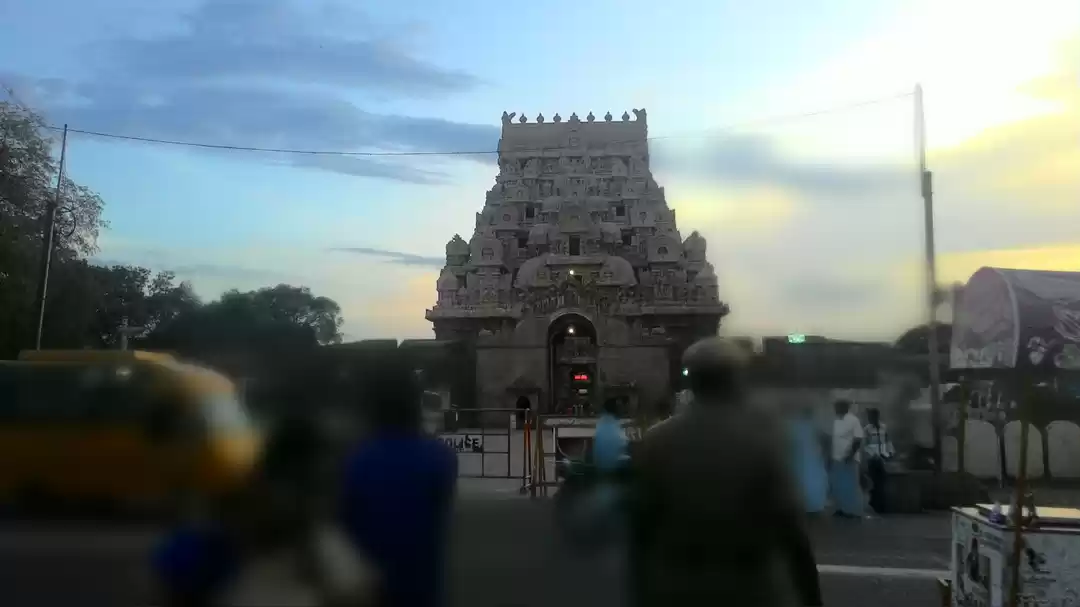
Travel Blogs for Thirunallar Temple
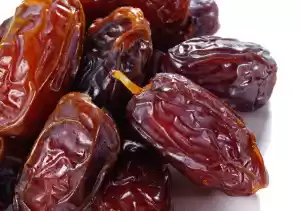

COMMENTS
The temple has been established with the common belief that Lord Shiva is all- pervading and that Venus (Sukra deity) is located within the stomach of Lord Shiva. Timings: 7 AM - 12:30 PM, 4 PM - 9 PM. Location: Aduthurai-Kuthalam Road, Kanjanu. 18 Km from central Kumbakonam.
Swaminatha Swamy Temple is a Hindu temple dedicated to god Murugan. It is located in Swamimalai, 5 km from Kumbakonam, on the banks of a tributary of river Kaveri in Thanjavur District, 250 km from Chennai, the capital of Tamil Nadu, India. The temple is fourth abode of Murugan among six. Must visit for all Hindus..
Kumbakonam, Famous pilgrimage site, Tamilnadu - travel guide, top temples & tourist places to visit with itinerary, trip duration, route map, weather and season. Kumbakonam is one of the ancient temple town, known for its temples and mutts (monasteries) & it is popularly called as Kudanthai.
Kalyanasundareswarar Temple. 1. Kasi Viswanathar Temple. Timings: 6 AM - 12 noon and 4 PM - 9 PM. Kasi Viswanathar temple is in the heart of the city and is very close to the famous Mahamaham Tank. As one of the top religious sites, it is dedicated to Lord Shiva.
Swaminatha Swamy Temple is a Hindu temple dedicated to god Murugan. It is located in Swamimalai, 5 km from Kumbakonam, on the banks of a tributary of river Kaveri in Thanjavur District, 250 km from Chennai, the capital of Tamil Nadu, India. The temple is fourth abode of Murugan among six. Must visit for all Hindus..
DAY 1 : Arrive Trichy. On your arrival at Trichy, you will be received and your driver will be introduced. Start your drive towards Kumbakonam, enroute stop at Thanjavur and visit Sri Brihadeeswara Temple (Big Temple) - a UNESCO world heritage site. Your first navagraha temple darshan will be Thingaloor "Chandran" Temple.
6.00 a.m - 1.00 p.m. 4.00 p.m - 8.00 P.M. Navagraha temples in Kumbakonam are a must visit for having a great spiritual experience. You can depend us for the best Navagraha temple tour packages. Let us have a glance on some of the important facts about these temples, in case if you have any plans for Navagraha temples tour.
One can visit all temples or may visit individual temples based on one's requirements. These Navagraha temples are located in the Cauvery delta region of Kumbakonam - Thanjavur. Traditionally these are Shiva temples with a shrine for one of the planets. But in most of the temples, Shiva has taken a backseat giving prime importance to the ...
Kumbakonam Travel Guide - kumbakonam One Day Tour Packages, Kumbakonam temple visit plan, Kumbakonam Navagraha temples, Kumbakonam Navagraha temple taxi fare +91 9626403300/7449109109 [email protected]
Tiruchirappalli International Airport, about 90 away. The grand Airavastesvara Temple in Kumbakonam is a treasure-trove of history, facts and amazing art. The construction of the temple, which is now a UNSECO World Heritage Site, dates back to the 12th century CE and was built by the renowned Chola king Rajaraja Chola II.
Kumbakonam, a picturesque town located in the Indian state of Tamil Nadu, has a rich and fascinating history dating back to ancient times. The town's origins can be traced back to the Sangam period, which dates back to the 3rd century BCE to the 3rd century CE. During this period, Kumbakonam was a flourishing center of trade and commerce.
The Navagrahas, nine grahas or celestial bodies, comprise Surya (Sun), Chandra (Moon), Angarakan (Mars), Budha (Mercury), Guru (Jupiter), Shukra (Venus), Shani (Saturn), Rahu and Ketu (the two nodes of the eclipses- the Solar and the Lunar) List of 9 Navagraha Temple: The word Graha means " to attract". These celestial bodies are believed ...
891. Kumbakonam, a temple town in the Thanjavur district of Tamil Nadu has a history going back to the 3rd century BCE. That was the golden time of the Tamil Sangam when the arts, literature, and religion flourished. The prominence of the town was at its highest in the 6th, 7th and 8th centuries under Chola rule.
Visit these temples dedicated to the planetary bodies of Tamil Nadu. For further more queries contact TRIPNETRA @ - 8500898000, 9393939150. ... 07.00 am - Visit Kumbakonam - Shani Temple (Shani) 08.00 am - Breakfast; 09.00 am - Resume your tour: Kedhu tyemple (Ketu) - Budhan temple (Budha) - Angarakan (Mangala or Angaraka ...
Swamimalai Murugan Temple is a Lord Murugan sanctuary in Swamimalai close to Kumbakonam. Nestled on the banks of a feeder of the Cauvery river stream, it is one of the Arupadaiveedu, one of the six principle habitations of Lord Murugan. Location: 10, Vatampokki Street, Taluk, Swamimalai, Kumbakonam, Tamil Nadu 612302.
As one of the oldest Shiva temples in Kumbakonam, Kumbeswarar Temple is a significant religious and historical site with a tranquil and spiritual ambiance. Mahamaham Tank. This sacred tank is believed to contain water from 63 holy rivers and is the focal point of the Mahamaham festival, attracting thousands of pilgrims during the auspicious ...
Kumbakonam, is a temple town of south India, which hosts Mahamaham festival after every 12 year which attracts millions of people from across the globe. ... 10 Most famous temples in Kumbakonam, You must visit. by Kamal 28th October 2017 10th May 2020 Leave a Comment 10 Most famous temples in Kumbakonam, You must visit Religious, Tamil Nadu.
Visit Chola Temples of Tanjore, Darasuram and Gangaikonda; SHARADA Temple at TITWAL, Kashmir Valley ... How to plan your heritage travel in 2021; ... They were nice enough to give us a flier which showed all the temples that one could visit from Kumbakonam, including the Navagraha Sthalas. That is what you will see in the PDF file.
Navagraha Temple is located close to Kumbakonam so devotees can stay at Kumbakonam to visit these temples. Kumbakonam Temples List Sivan Temples List. S.No: Temple Name: 1: Kumbeswaran: 2: Nageswaran: 3: Someswaran: 4: Gouthameswarar: 5: Abimugeswarar: 6: Kasi Viswanathar: 7: ... Dear Sir/Madam, No its not possible, you can plan it for 2 days ...
All Temples close time 1:15 PM to 4 PM. Travel towards Mayiladuthurai 28 kms drive in 45 mins and finish your Lunch. Start to Vaitheeswaran temple- Mars (sevvai) at 2:30 PM drive 15 kms travel towards Chidambaram. Reach temple by 3:30 PM or 3:45 PM, temple opens at 4:00 PM. finish darshan by 4:30 PM. 7. Thiruvenkadu Bhudan(Mercury)
Shani Peyarchi festival will be celebrated in a grand as thousands of devotees visit this temple to offer prayers to the deity. Morning Hours: 6:00 am - 12:30 pm. Evening Hours: 4:00 pm - 8:30 pm ... Need to go navagraha temple for next week @ Kumbakonam. Need to plan for only one day . We need car for 4 persons . Make my trip and call me ...
Know more. Kumbhakonam is one of the ancient temple towns of Tamilnadu, flanked by the two rivers Cauvery and Arasalar. The grandeur of Tamil Nadu can be seen in the marvelous architectures and temples here. Many of the religious sites in Kumbakonam are dedicated to Lord Vishnu and Lord Shiva. There are around 188 sites in Kumbakonam.
Thirunallar Temple, also known as the Dharbaranyeswarar Temple or the Saneeswaran Temple, is one of the nine navagraha temples dedicated to Lord Shani (Saturn) in Tamil Nadu. Learn everything you need to know about this ancient and sacred temple, from its history and significance to its architecture and festivals, and plan your visit with our comprehensive guide.